
Blog 49 by Mick: Where the Scum of Your Character Will Come to the Surface
The 30-day limit put on our motorcycle importation permits was a real spanner in the works for us. When we arrived in Ethiopia, the customs guy had asked me how long we intended to stay, to which I had casually replied “ahh about a month maybe”, not foreseeing the complications this would bring. No other country we had visited to date had any customs limitations bar the validity of our visa and carnet de passage i.e. we and our motorcycles could stay as long as our visa and carnet were valid. Sounds sensible, yeah?
So the customs guy took my ‘small talk’ reply as gospel and filled in a form that I immediately gave no notice. It was only in Lalibela about 2 and a half weeks later when we were flicking through our paperwork that we gave it a second glance. What the? 30 days? That meant we had to be out of the country in less than 2 weeks! And our visa was still valid for another 7 weeks!
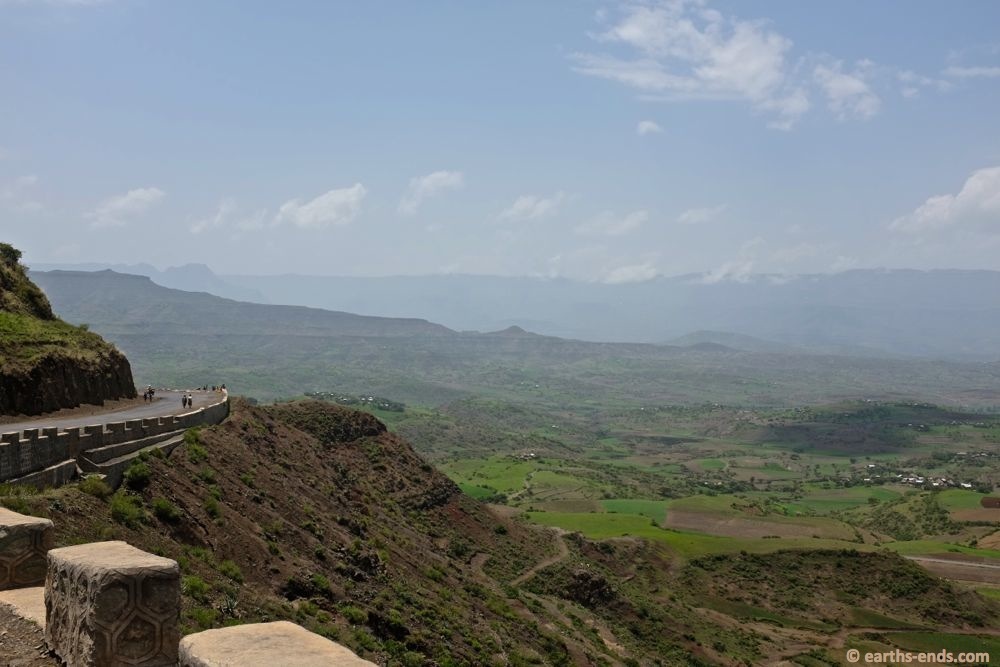
Some of the views looking down on the road south from Lalibela
So, as Tan mentioned in our last post, we either had to leave the country before the customs voucher expired or extend it; if not, we risked some repercussions. Tan was still desperate to see the Danakil Depression, which is essentially a porn show for geologists in the very north-east of the country. We estimated we couldn’t get there, organise and do a 4 day tour, and get back along our intended route down the west side of the Omo Valley and exit at Omorate in the very south-west, all within 12 days. At least not without madly rushing things. A 630km trip south to Addis Ababa it would have to be.
So we hit the road mid morning with some trepidation. I would have liked to have taken a dirt road south into the back of Dessie but due to an incomplete gpx track I didn’t know where it started from this end. Plus, we were in a bit of a rush so figured we would grin and bear the tar in the interest a swifter travel. So we took the same bit of highway south that we had issues with when we came north, however this time as it was not raining, more of the rock throwing, stick wielding, whip cracking riff raff were out.
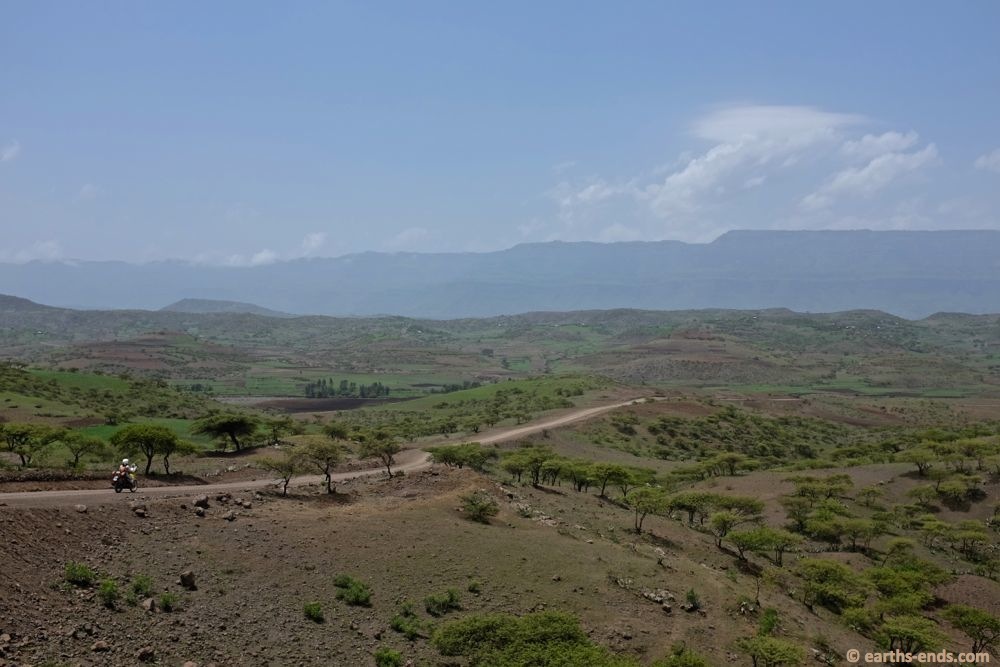
Some lovely riding on the dirt on the way to Waldiya
The first section of the route, which is dirt to the top of the pass that descends 1200m vertically to the town of Waldiya in the Amhara lowlands, is a beautiful stretch of road. Thankfully we had minimal issues to spoil that serenity, only one rock from a group of shouting kids, but they seemed bored more than anything. We also had the pleasant experience of some people waving and yelling “welcome” as we rode by. As we discussed in the Harar post, it was the disorientating, paradoxical nature of Ethiopia on display once again – hostility in one instance, yet kindness 20 seconds later. But after the descent, things started to go badly.
After a while, we stopped committing all the incidents to memory. There were simply too many so a sense of hierarchy gets introduced. While in isolation some angry guy coming out and shouting at you and waving his fist might be pretty shocking; it simply doesn’t matter anymore when the next guy has a cattle whip and tries to strike you with it. Or someone runs out onto the road and tries to do a big running fly kick at you. Or someone spits at you, and I don’t mean that they spit towards you, but they see you coming and walk out onto the road to try and get close enough to actually spit on you as you ride by. We had all these things happen, and many many more, in the 160km stretch between Waldiya and Dessie that day.
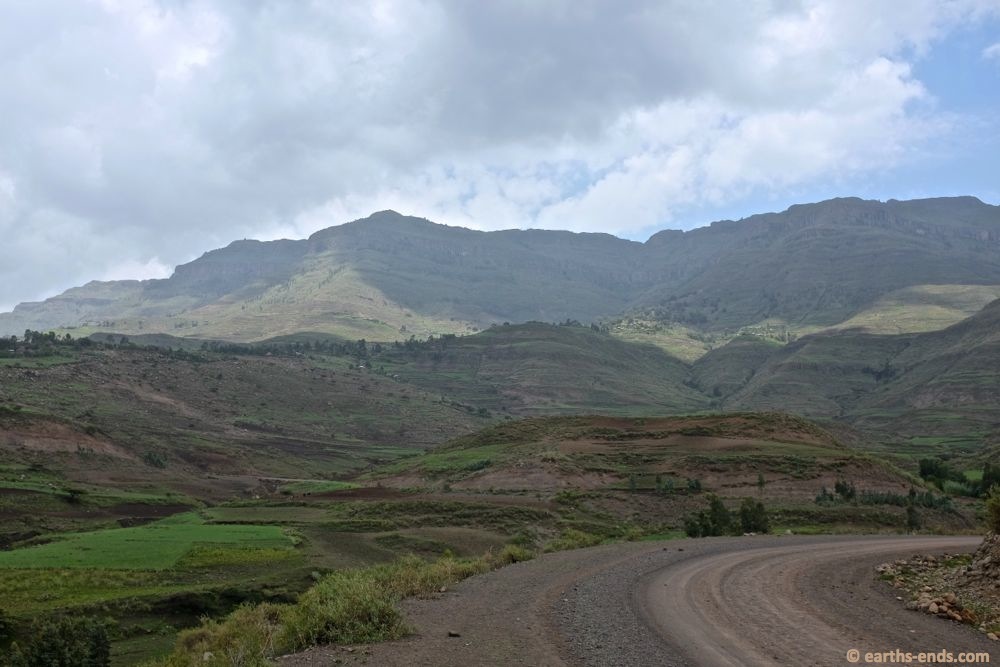
Nearing the top of the pass before descending to Waldiya
At one point I was leading and the intercom came on and I hear Tanya yelling at the top of her lungs. I turned around and went back to find her off the bike screaming in a rage at some kids I could see running off into a field. Turns out she had 4 separate incidents of kids coming out onto the road with cattle whips to crack at her within 20 minutes. She had to swerve to avoid being struck on each occasion and on the last time she lost her temper. I had the odd whip incident in that time, however the second bike always cops the worst of it as the feral little fiends have time to hatch their evil little plans. It got to poor Tan so she went in front for a while.
It was mid afternoon when we rolled into Dessie. We had only travelled 230kms from Lalibela, however at a safe Ethiopian road pace that is 4 and a half hours, and we had had enough. We stopped to have some lunch and chill out, and after a drawn out meal and one round of coffee after another we were simply unable to will ourselves to get on the bikes. So we said ‘bugger it’ and resolved to drink beer and spend the night. We had experienced more than enough Ethiopia for one day, and to make matters worse Tanya was starting to feel ill.
With a sense of resignation we packed and got on the bikes the next morning. Probably like what an inmate on death-row feels like the morning of his execution – “this is gonna happen whether I want it to or not so lets just get it done”. The day actually started well after a friendly cop directed us to the next town which had the only fuel station with petrol in the region.
But it didn’t last long. Not 15km later, a guy with a snarl on his face and an empty 20 litre plastic drum in his hand came out onto the road and swung it at me as I went by. Tanya, who was 20m behind, saw it, started yelling and pointing at him as she road by, but it didn’t stop him doing the same to her. And so it went. Rocks. Whips. Sticks. Shouts and screams. We got it all. And that is in addition to the usual assortment of donkeys, horses, cows, goats, sheep and non-observant pedestrians randomly wandering all over the road. I don’t mean to make riding a motorcycle in Ethiopia sound horrible, because it isn’t; it is worse than that*.
We stopped to stretch our legs and have some lunch, and were set upon by a gang of small children demanding money. With all our compassion and empathy beaten out of us in a tempest of rocks, they got a firm “piss off!” from us. Yep… we were swearing at children. On the brighter side, lunch was cheap and the service was friendly. Many cups of sweet local tea and some bread for the two of us all for less than a dollar.
In this instance however, it’s not just the cheapness of the lunch but the fact we got local price with no haggling and no bullshit that was most pleasant. Ethiopia, like many places, has local prices and tourist prices, but here it is a little different. Tourist prices aren’t just an unscrupulous way to rip of people who don’t know any better; it is actually institutionalised and until a recent law change, quite legal. That said, it still stubbornly persists and if you point out the fact it is illegal to charge people differently based on race, you get blank stares and sheepish looks, but no adjustment in price. We even heard expats complain how even after showing their residency permits in their passports and arguing in fluent Amharic; doesn’t matter, farenji (foreigners) pay farenji price.
So in most places in Ethiopia where there is any chance a foreigner might one day turn up, you can walk into a hotel and behind reception there will be a list of rooms with two columns next to it; Ethiopian price, and farenji price. Generally it is 30-50% more. Many restaurants do the same with menus. So it is refreshing when you get treated like everyone else and not like a supermarket lolly machine that gets incessantly bashed by the naughty kids in the hope that a free sweet might drop out.
When we stopped outside the little restaurant, one of the older kids motioned to us that he could look after the bikes while we were inside. There were plenty of kids about and we were sick of having our bikes and luggage played with, plus we like to reward such initiative in the face of so much begging. So we gave him a nod and pointed at the bikes and left him to it. While having lunch we noticed said kid had somehow procured a whip and was starting to threaten and sometimes beat other children when then came near the motorcycles. Soon anyone who came near, he would crack his whip at and chase away, and then look inside at us for approval.
At first we were bewildered as to the excessive use of force, then amused at the vigour he took on in his self appointed role, then a little horrified when it started to escalate to the point he was trying to chase down and belt anyone he could find. At one stage, a woman walked past the bikes and didn’t even give them a sideways glance as she continued doing what she was doing, and the little tyrant chased after her and cracked his whip at her she walked away. While she didn’t even bat an eyelid at such a threat, it was too much for me at that point I went out and yelled at him and he backed off.
We dubbed him “Mini-Mengistu” after the Colonel and leader of the ‘Derg’ communist government of Ethiopia through the 70’s and 80’s known for its oppressive and violent police state tactics. The name seemed all the more applicable as what was playing out in front of us seemed a rather pertinent micro-analogue of many African politicians. Some power-hungry muppet put in a position of power and financially supported by a foreign entity – once their position has secured and weapons are gained they tend to go on a violent rampage to cement their position. The thought of our tiny and unintentional social experiment demonstrating so well the woes of “African strong man politics” gave us a good chuckle and strong sense of unease.
As we went to leave we tipped Mini-Mengistu 3 or 4 birr, less than 20c, which he seemed happy with and lowered his whip defenses. This point wasn’t missed by all the kids he had threatened and he ran off with kiddie mob in tow. This fitted quite nicely with the comparison to a full grown African dictator, however this kid ran off to his mum’s hut rather than a chateau in the south of France, or a heavily guarded Harare mansion as is the case with the real Mengistu. Just for the record, the real Mengistu is responsible for between 500,000 and 2,000,000 deaths but is to this day protected by his best mate and fellow uber-arsehole Robert Mugabe, so its probably something we shouldn’t be joking about.
Refreshed after some food and tea, we hit the road. We had knocked off about 150km in 3 hours with lunch and only had about 250km more to do; then we could hide in the safety of Wim’s Holland House, a well known overlander and expat haunt in downtown Addis Ababa. We didn’t have to deal with as much antisocial behavior after that but I did have 2 close calls with donkeys.
The first was a donkey meandering down the road on a blind corner, when a car coming from the other direction scared it into my lane. I stopped to recover from the near-miss and turned to see the owners of the donkey wandering down the road in complete apathy regarding the accident their dumb animal and lazy inattention had nearly caused. That is one significant problem with traffic being forced to pay for the death of stock on the road; there is no incentive to keep animals off the road and not cause accidents. In fact, there is the exact opposite, especially if the animal is old or the poor sod that hits it is foreign.
Which leads neatly into the second donkey near-miss. I was following Tan from maybe 100m as she rode past two adolescents driving a loaded donkey down the side of road. The donkey was well behaved as Tanya went past, however as I neared it suddenly turned 90 degrees and ran onto the road, with me only just avoiding it at 70kph with aggressive counter steering. We had heard stories of animals being driven onto the roads to get hit before, preferably by foreigners, and I’d bet a large sum of money that this incident was exactly that.
And now, only one more hostility story (for now anyway) before this deteriorates into a whinging bore-fest. And I’ve saved the best for last… or maybe it was Ethiopia that saved it’s best for last. Either way, here goes…
In the relatively busy little town of Robit, about 215km north of Addis we were dealing with more that the usual throng of pedestrians and animals wandering all over road. It must have been market day as it was quite busy and we were crawling along clutching 1st gear at about 20kph. Tan was leading and probably only 20m in front but I was way too busy paying attention to all the activity on the road to see what she was doing. Right in the very thick of it all I see a guy staring at me from the side of the road. I can see he is standing on the very edge of the tar doing nothing, just focused intently on the bike as I ride closer and closer…
At the very last second he takes one enormous exaggerated step out onto the road directly into my path and stops. Luckily the fool has mis-timed his step and as I was travelling so slowly I managed to haul up the bike with wheels screeching maybe 15cm before I hit him. I understood immediately what he is up to – this cretin is one of the people of legend who try to get hit by foreigners. We actually met a South African biker who hit a guy while riding through Ethiopia which we discussed in detail in our 19th post linked here (the last couple paragraphs at the end). In a nutshell, getting hit by foreigners is a known money making scam, and it cost this South African guy over USD1000 and a few days incarcerated.
Anyway, I start to shout at him for almost causing a traffic accident, and he walks past me on my left hand side. He is so incredibly drunk he can barely walk at all. He stumbles behind the bike, and I’m twisting to my left to see him and feel this thump in the back of my helmet. The guy has king hit me right in the back of the head. Thankfully he is so weedy and drunk he lacks power and with the helmet I’m afforded a lot of protection, however as I was twisting at the time so the blow still jars my neck. I drop the clutch and launch forward 5 metres, then slam on the brakes, turn the ignition off and put the kickstand down all in one motion.
That is it… After all the shit we have copped in this country; all the rocks and whips and sticks and scams and feral behavior, all the hatred, I’ve not just hit my limit, I am way past rational thought and have snapped clean in two.
I’ve got my left leg on the peg and I’m starting to swing my right leg over my luggage when the intercom comes on. “DON’T GET OFF THE BIKE!!” Tan yells. I look forward at her, she is parked not 20m in front, and then look over to my right and drunk guy is standing with about 15 or 20 other adults who are all screaming and pointing at us. They are quite a few who are gesticulating violently at us. There are probably that number again just looking on gawking. It was undeniably hostile and seemed on the brink of a mob situation…
I’ll interrupt my perspective of this story and swap to Tanya’s for just a bit. 15 seconds previous to all this she had been riding through the same busy horde of people when some guy stepped onto the road out of nowhere and stood there looking at her, and she had swerved hard to miss him; it was very close but she snuck past. She quickly found a spot to pull over and pressed the intercom button to warn me about him. As she did, she turned and saw the same guy she had just missed standing in front of me stopped in the middle of the road. He then walked down my left hand side and around the back of the bike and takes an almighty swing into the back of my helmet.
Anyway, back to my perspective; so I sit back down on the bike and shout back at the drunk freak who is making a big show of the fact he hit the foreigner in the back of the head, but am drowned out by him and the 20 or so people at his side who are screaming back. We are well and truly outnumbered. I pull out my iPhone and take a few photos of the cacophony, which has the instant effect I was hoping – everyone backs off and quite a few immediately turn and leave.
Talking on the intercom, we decide we have to leave while we can. Within about 800m we find a police checkpoint, and Tan is off the bike before I even see it. No one speaks English but using sign language she communicates that I have been assaulted back down the road and it rouses a minimal level of interest from the police. But someone appears from nowhere who can speak English and starts to interpret, saying we should take them to the scene of the incident.
So we go back and the angry mob is still shouting and screaming and pointing at me when I park the bike. Then they see the tuk-tuk arrive with the police officer and everyone stops and changes, like when the full moon hides behind a cloud in a werewolf movie. She and the English speaking guy get out and some people actually come up in some sort of show of support. The sight of a police uniform has transformed these people from horrid to helpful in an instant.
We explain through the interpreter what happened and a rough description of the assailant. One of our newly acquired ‘friends’ confirms “he run down there, he is gone” pointing at an alley. The helper, the interpreter and the cop talk for a while in Amharic, and I get the impression our new helper mate who not so long ago was screaming at us explained the whole incident. The interpreter says we can make a police report but we have to go to the police station. Tan and I quickly discuss if we spent the time to file a police report we wouldn’t make it to Addis that afternoon. We just wanted to get off the road and into Addis, so we left. In retrospect I wish we had made the formal report.
We ride off in a fume, I can’t believe my helmet didn’t melt there was so much steam coming from my ears. Tanya was no better. Not far later we ascend about 600m back up into the highlands. It’s a nice ride with lots of great twisties and foggy yet stunning views. We ride past people on the defensive, waiting for them to scream and shout and be horrible, and while we do cop a little bit of shit on the whole they are just indifferent. In the highlands we are just road traffic again like everyone else. It was almost night and day difference compared to what we had experienced over the last 200kms. As with earlier struggles on the road, they all happened en masse in the lowlands. Up in the highlands things were ok in comparison.
It was a pretty easy ride from there on, helped by the fact it started to rain which meant the pedestrian and animal traffic reduced significantly and we made much better time because of it. We hit a near empty 4 lane highway and before we knew it we were on the outskirts of Addis Ababa. Although pretty congested when we hit the late afternoon rush hour traffic, it was reasonably straight forward finding our way around. The roads and pretty much all the infrastructure in Addis are underwhelming to say the least. Dominated by Stalinesque concrete monstrosities, it struck us as a bit of an ugly place even by African capital standards.
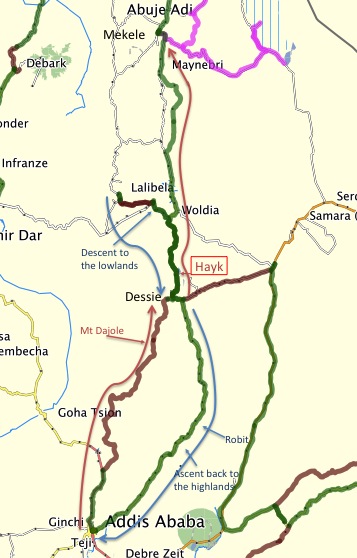
The blue arrows is the route we travelled south, and the red is the route we travelled north again.
We checked into a room at Wim’s Holland House and discussed our plan for the immediate weeks – Tan still wanted to sort out the import permit for the bikes and then head north to the geological wonders of the Danikil Depression. She simply didn’t want to miss it and reasoned it was now or never as she was adamant she never wanted to set foot in this country again. I just wanted to go however. I was over it; as far as I was concerned there was simply no point staying in a place you are not welcome, no matter how nice the attractions. I was sick of being provoked to a near permanent state of rage, and ironically I angry with myself for how furious I had become. In all our years of travelling the world, Ethiopia being the 54th nation I have visited, we had never experienced anything remotely like this.
This point came up a few times with long term expats as we vented our frustrations at Wim’s, and we got a considerable degree of nods and understanding. When a lifelong missionary who has dedicated their existence to improving the lives of locals can admit they have been tormented to a point they were worried they could strangle someone, you realise you are not alone in your experiences. They told us there was a saying about Ethiopia; that it is a place “where the scum of your character will come to the surface”. Like many maxims, we found it based in truth.
The question of our immediate route was decided, for the short term at least, by Tanya developing a full blown cold. If we were going to be stuck for a few days while she got well enough to move again it made sense to at least sort out the paperwork on the off chance we needed it. After tracking down the Customs Headquarters we quickly found ourselves in a real life game of pinball, getting jettisoned from building to building and office to office.
In ‘Building C’ for 2nd time (the 5th building we had visited) they tried to send us back to ‘Building A’, but we refused to move and pleaded for help, and finally someone offered to escort us. After another trip to ‘Building A’ we did indeed end up back in ‘Building C’, third time lucky, and found the right office. The big boss who could sign off on the extension of the Temporary Import Permit had given himself a Friday afternoon early mark, so we got the great news that we needed to come back Monday.**
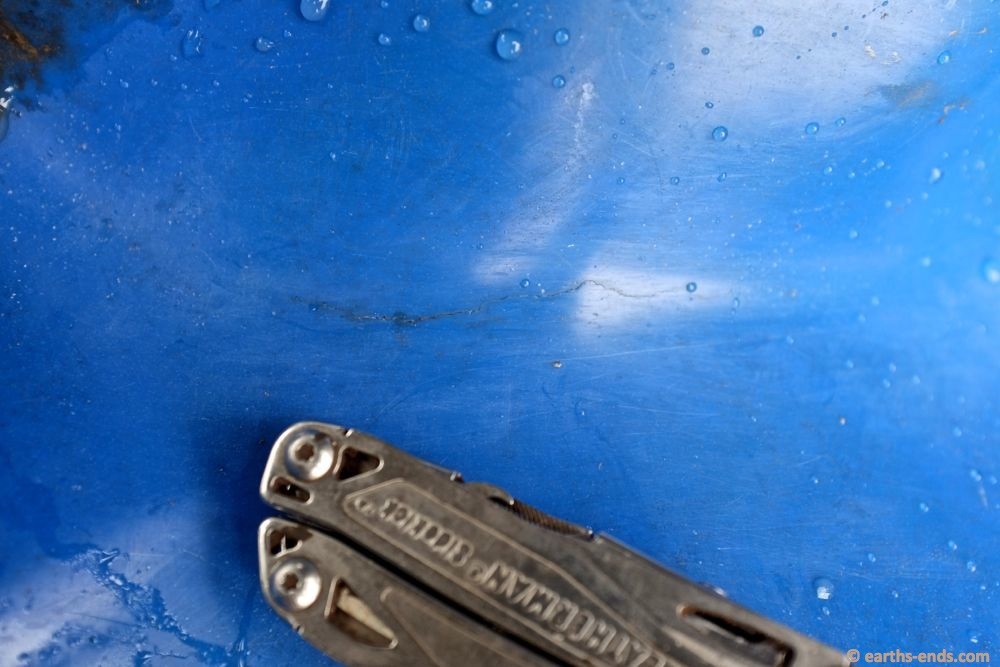
The crack in my fuel tank under the right hand wing after cleaning up
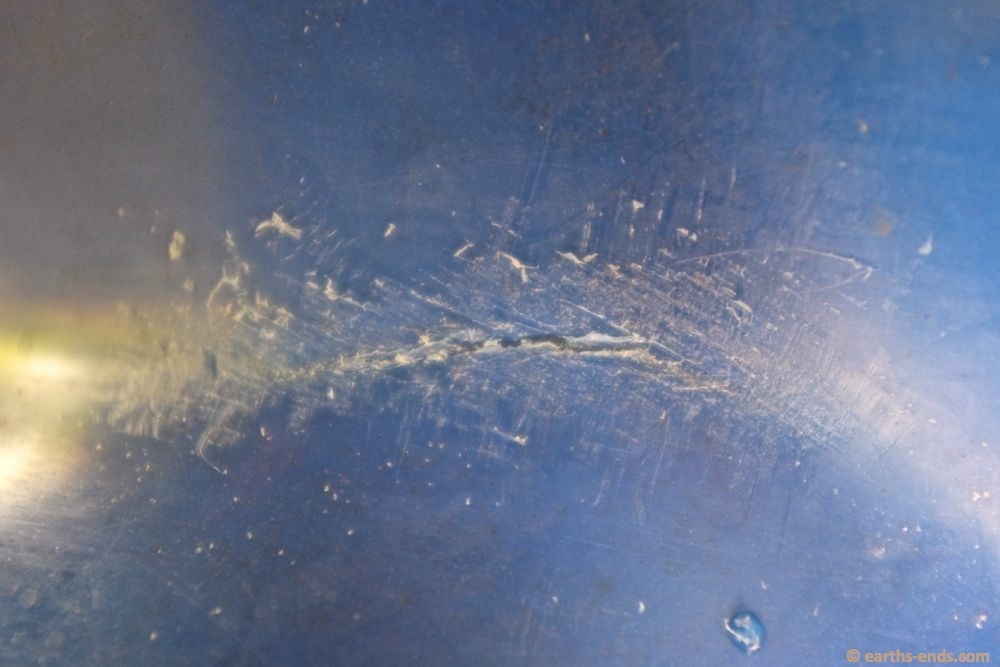
Sorry for the shitty photo, I cleaned up the area as best I could and scratched off all of the surface plastic before starting
While Tanya was in bed drowning in snotty tissues, I kept myself busy with a few little jobs. I fixed our petrol stove pump which had a leaking o-ring and then got to fixing my fuel tank properly. In Lalibela I tried to waterproof the soap with some duct tape, which kind of worked but was hardly worth the effort. The duct tape didn’t stick very well and the rain we had received coming into Addis had washed away enough soap that the crack was starting to weep a little.
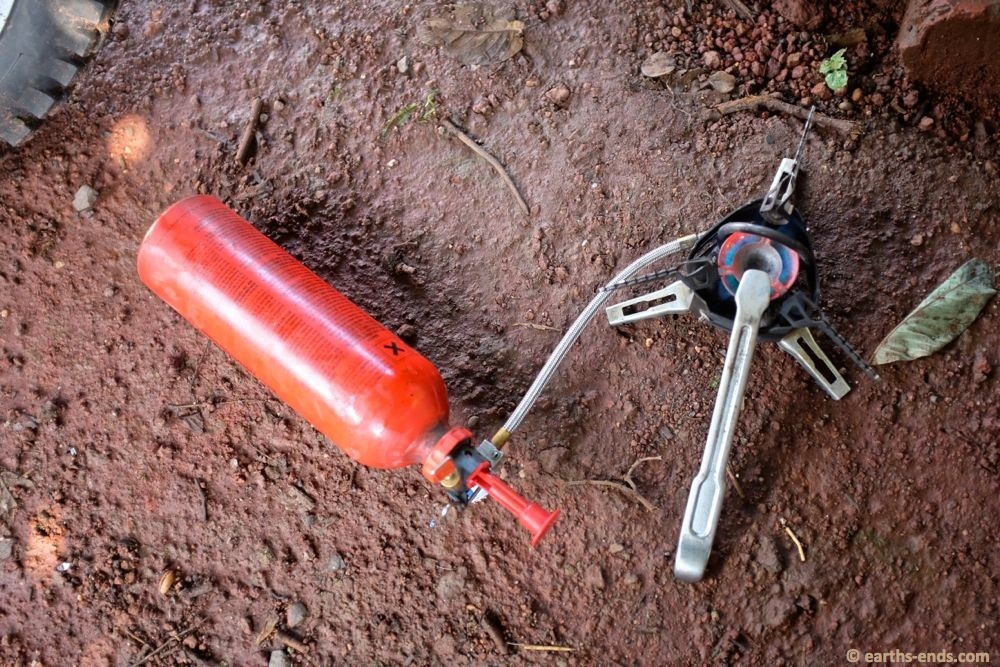
Low tech at its best, tyre iron on the petrol stove…
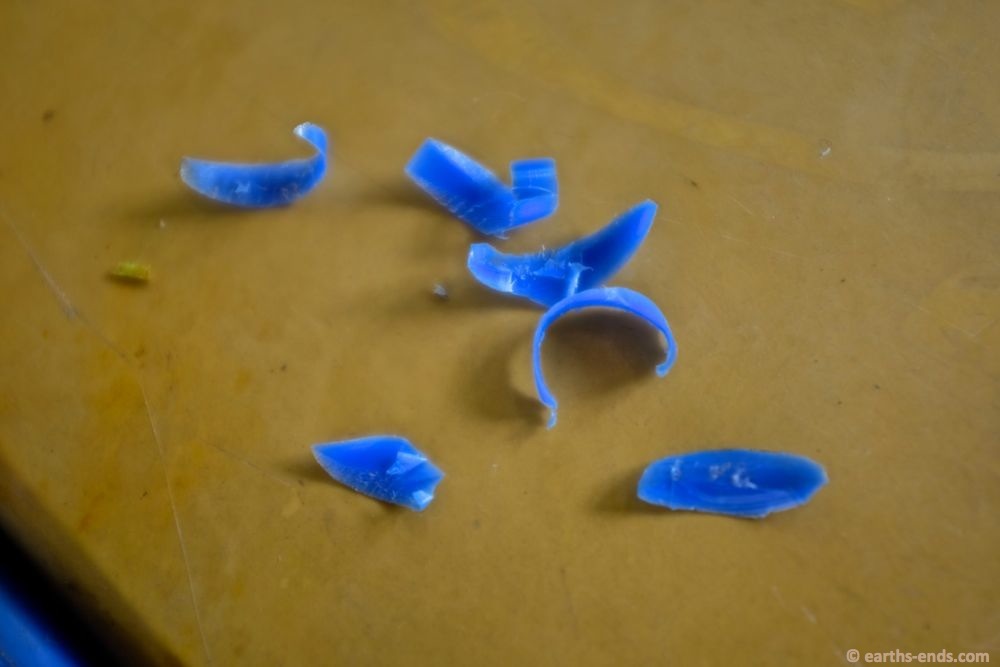
Trimmed off bits of plastic all cleaned up and ready to use as filler
I drained the tank again into Tanya’s bike, cleaned up the whole show, and sliced off a bunch of plastic from the back of the tank to use as filler. I opened my tool roll and found a big hunk of steel with an appropriately shaped tip; a tyre iron, and put it on the petrol stove. The first run I just pushed the hot tyre iron into the crack to fuse the 2 sides of it together. Then I started to use the filler to build up the weld over the crack. And this was where it started to get tricky.
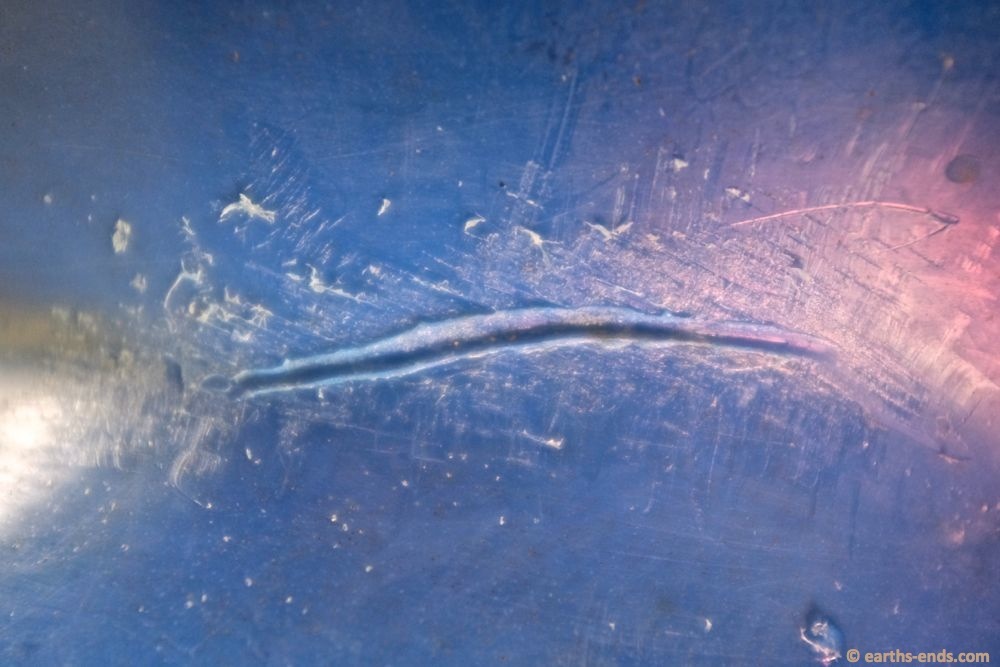
First run, weld both sides of the crack together to seal it
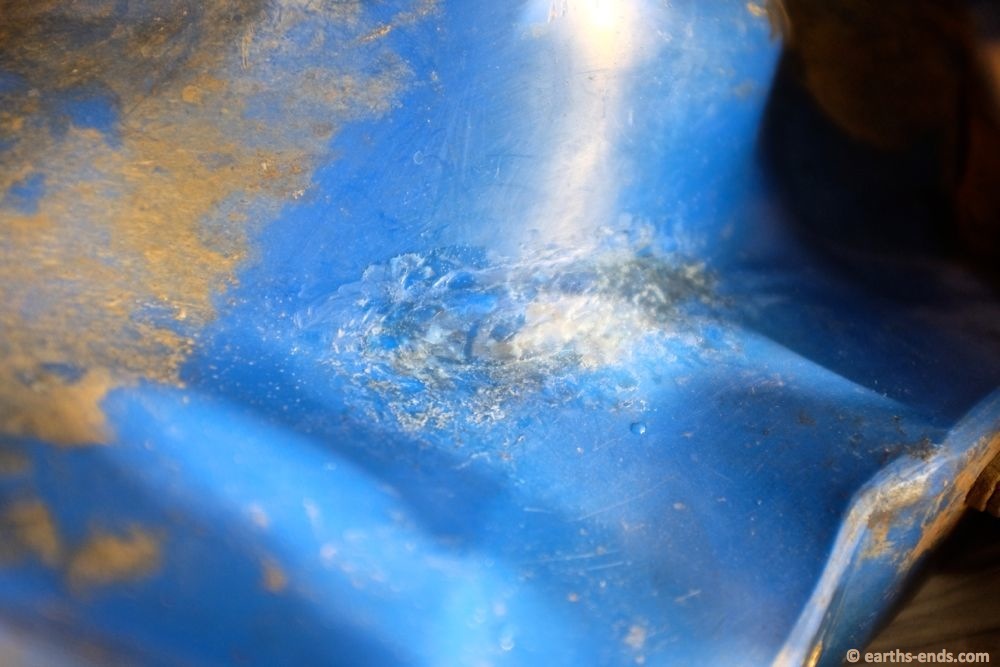
Final product. I cut off quite a lot more filler material and built up the weld over the crack maybe 4 or 5mm.
Bear in mind I was just doing this by feel, having never seen it done before. So getting the right amount of heat in the job took some trial and error. At first, I got the iron too hot and the plastic started to go black, so I let it cool off a bit. Then, with the iron a little cooler, I could get the plastic to flow ok but with less heat in the iron I couldn’t do it for long. So it was a constant cycle of heat the iron, slowly run over the tank to pre-heat it, then lay on the filler and melt it in. I could do about 1cm at a time like this before the iron would cool off too much. A very tedious job. I was happy enough with the result but could see that due to lack of heat there were some cold joins, but it didn’t leak anymore. Win.
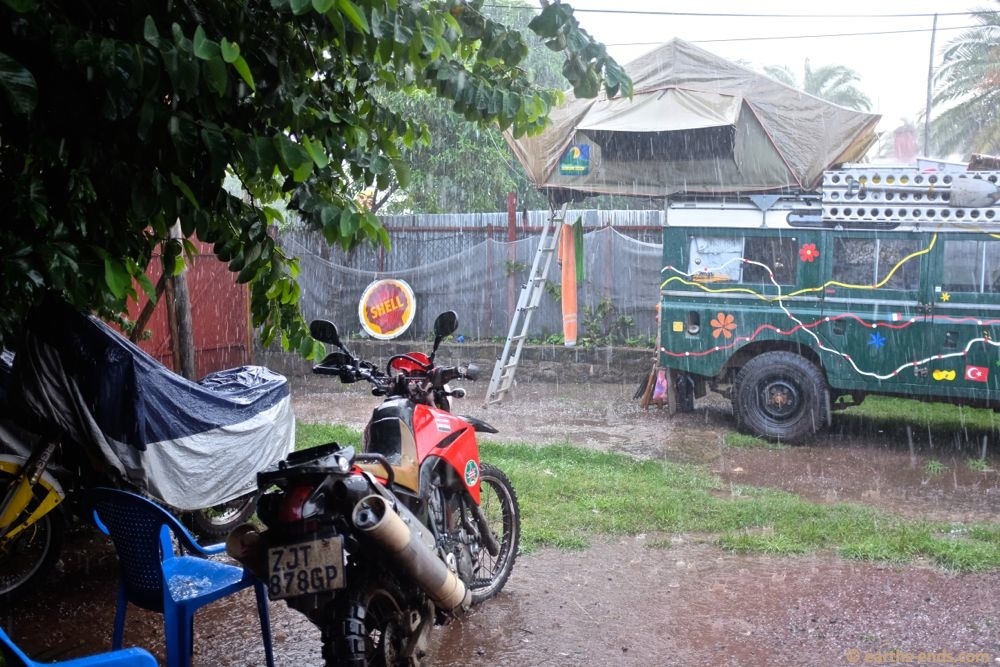
Some inclement weather in Addis Ababa. We were there during the wet season and got hailed on – luckily only little hail only 5mm or so in diameter. That is Schalk’s XT660Z and Connie and Alex’s old landy.
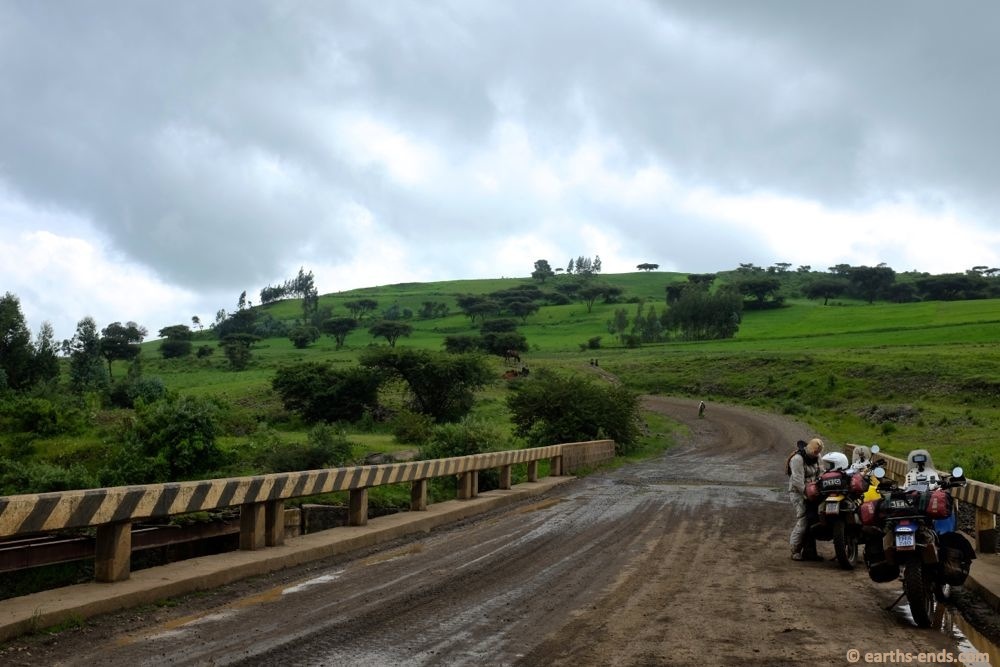
The road north again. We stuck to the dirt in the highlands in the hope they would be less hostile. We had a good run north with no crap. This was a quick photo stop on a picturesque bridge.
The good news out of all of this is we sent a few emails to the guys at Safari Tanks and were met with incredible customer service. We had just asked for advice on repairing the crack, however they said they would replace it under warranty. I sadly admitted that we bought the now 8yr old tank installed on a secondhand bike so it wouldn’t be covered. Amazingly, Safari considered it a manufacturing fault, so irrespective of its origins they will cover it anyway! You can imagine the relief we felt knowing we weren’t going to have to spend $AU650 on a new one. But of course there was then the small issue of getting it to Africa, with crazy postage/freight quotes and heinous import taxes it became prohibitively expensive, even for a free tank. We agreed to see how successful the tyre iron fix would be, and if we thought we could make it work, we would send the replacement tank on to Europe and meet it there. We only needed to get through another 25,000kms of Africa in the meantime!
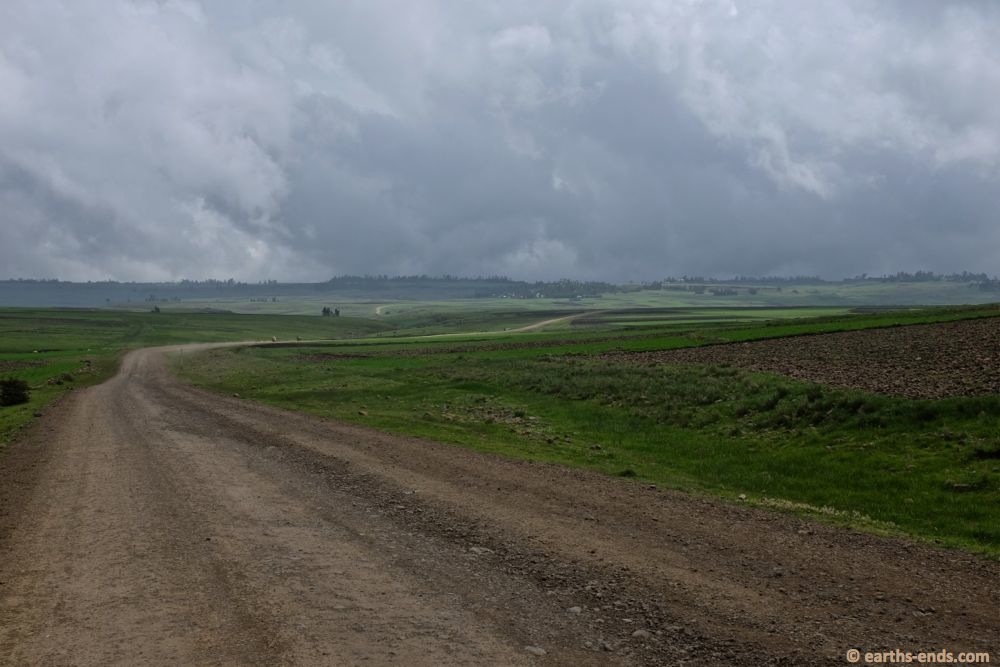
The highlands of Ethiopia are hyper-fertile agricultural land, as you can see.
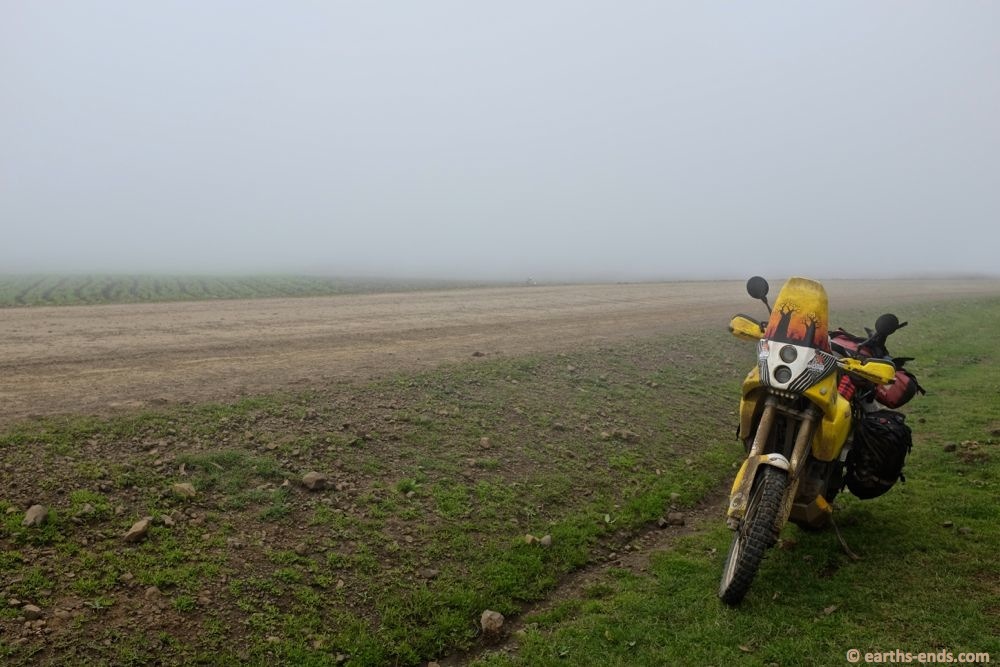
One issue of riding in the highlands – fog
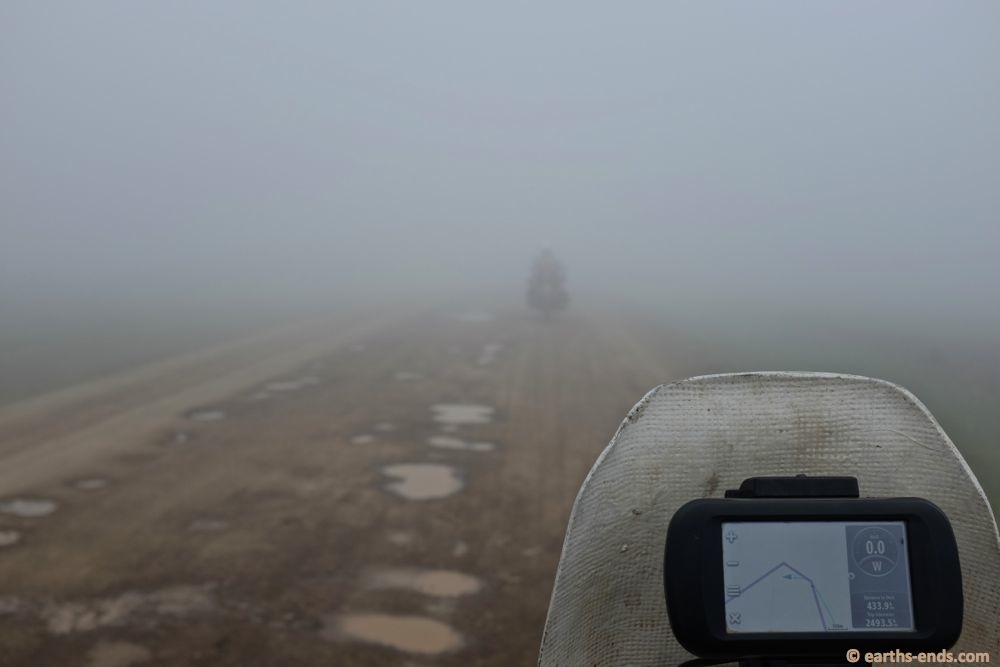
…thick fog…
During all this we reticently resolved to head north to experience the Danikil Depression, however we couldn’t stomach the thought of riding the bikes north another time. It probably sounds ridiculous but we actually looked into taking a bus so we would be isolated from Ethiopia’s rock throwing hostility by a sheet of glass. We went to a few different bus companies but unfortunately everything was full for the next 5 days. That left only one option, to just suck it up, hop on the bikes and try deal with the shit when it was inevitably thrown our way.
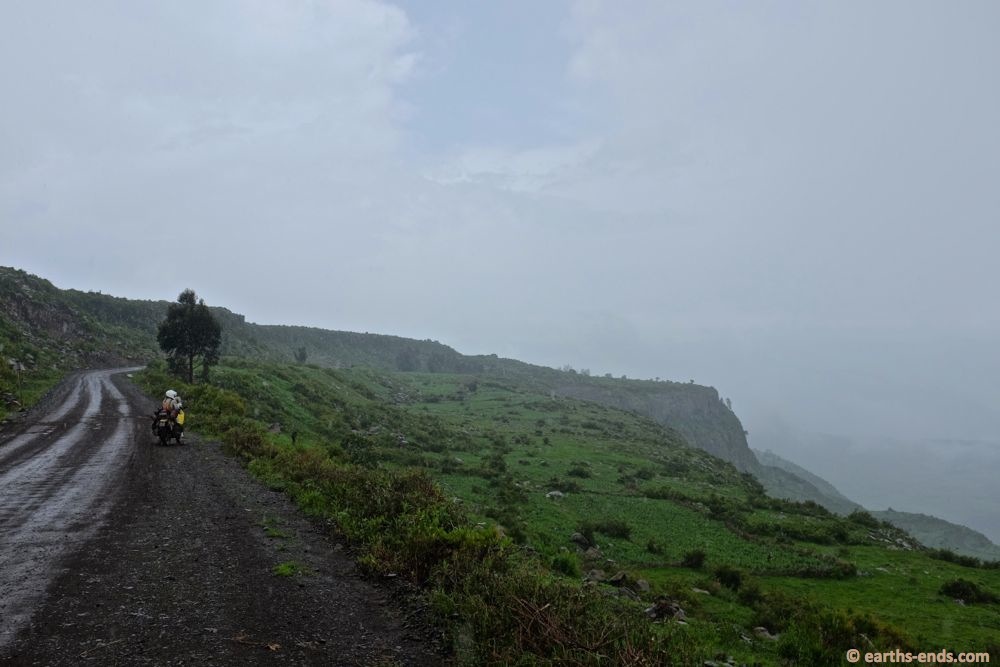
Some of the lovely views on the ride north to Dessie
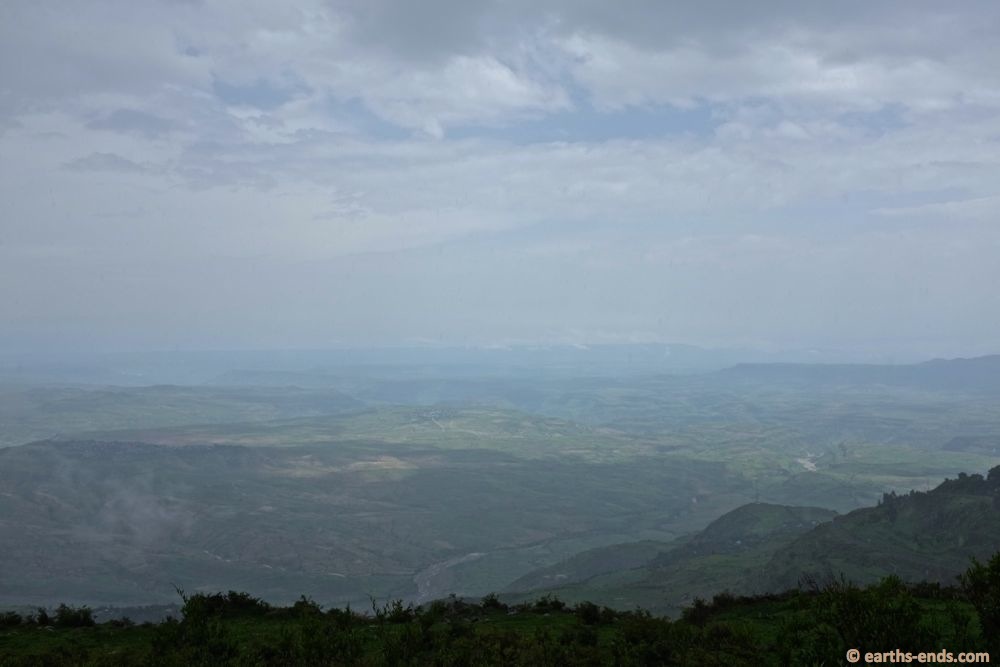
If you like mountain riding, Ethiopia is a decent destination choice
With the courage summoned and decision made to leave the next morning, we came back to Wim’s only to find fellow overlanding friends Schalk on his XT660, who had just come from the Sudan and Egypt, and Connie and Alex in their Series 2A Landrover, waiting for us. Last time we had seen these guys was in Kenya so we decided we would rather stay another day and chat and catch up on stories rather than depart.
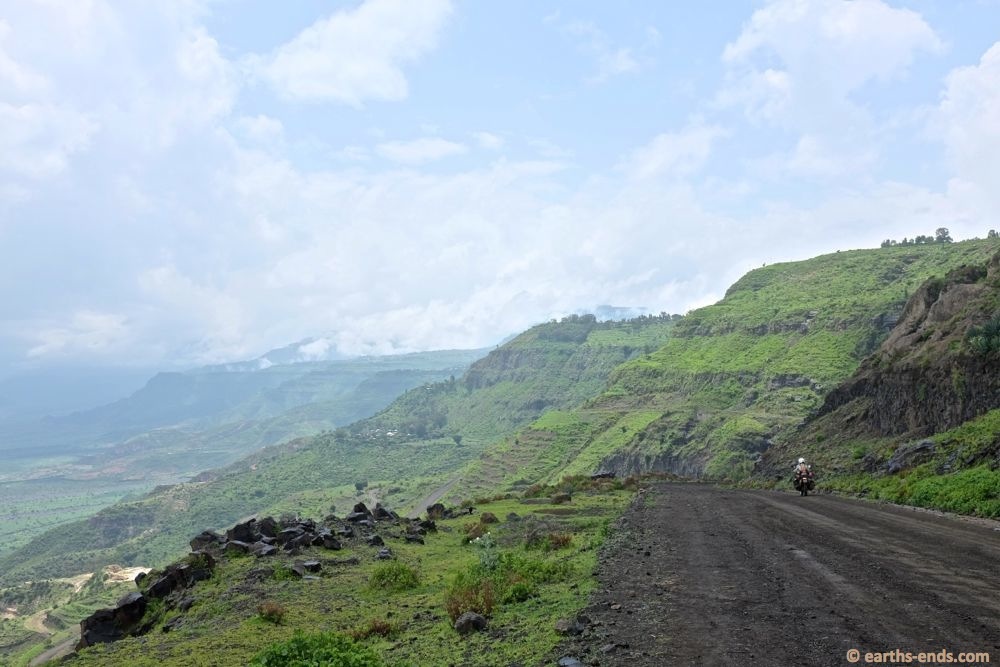
The descent down an escarpment about halfway between Addis and Dessie
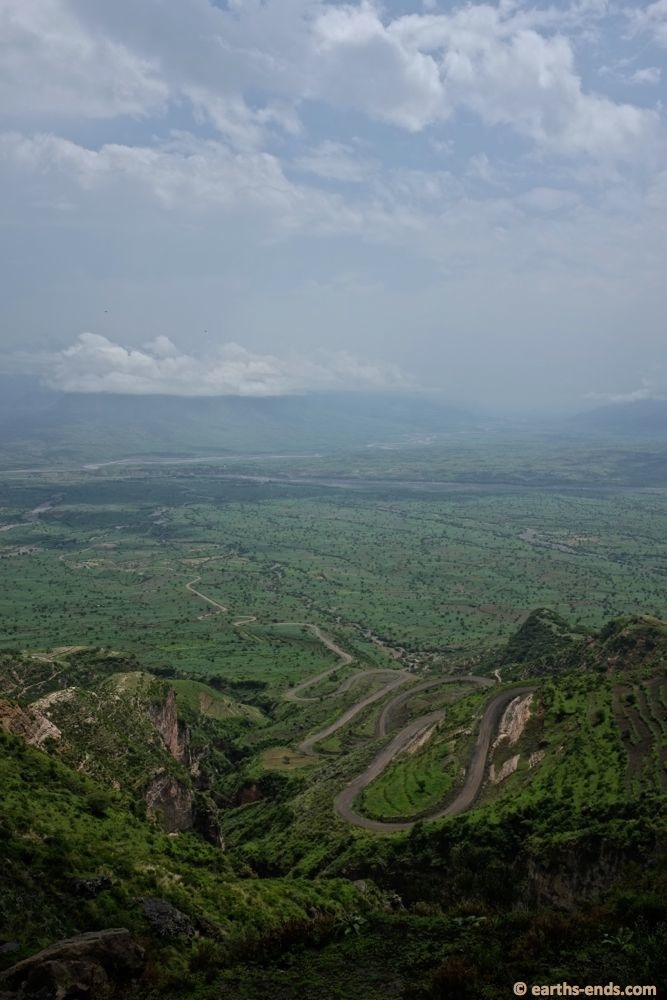
Who doesn’t like a few hairpins? This dirt route between Dessie and Addis is a great ride; it is about the same distance, has much better views, much nicer people, and due to the lack of traffic and pedestrians, is just as fast as the highway.
So it was the following day at a little after 7am that we left. Hell would freeze over before we would take the main highway north again, so we traced a route that was majority dirt and stuck to the highlands, only dropping into the Amhara lowlands in the final descent to Dessie. It proved to be a lovely ride; very scenic and fun riding on good quality gravel. And the people were no problem, either ignoring us, staring jaw-dropped or waving. We had a good run.
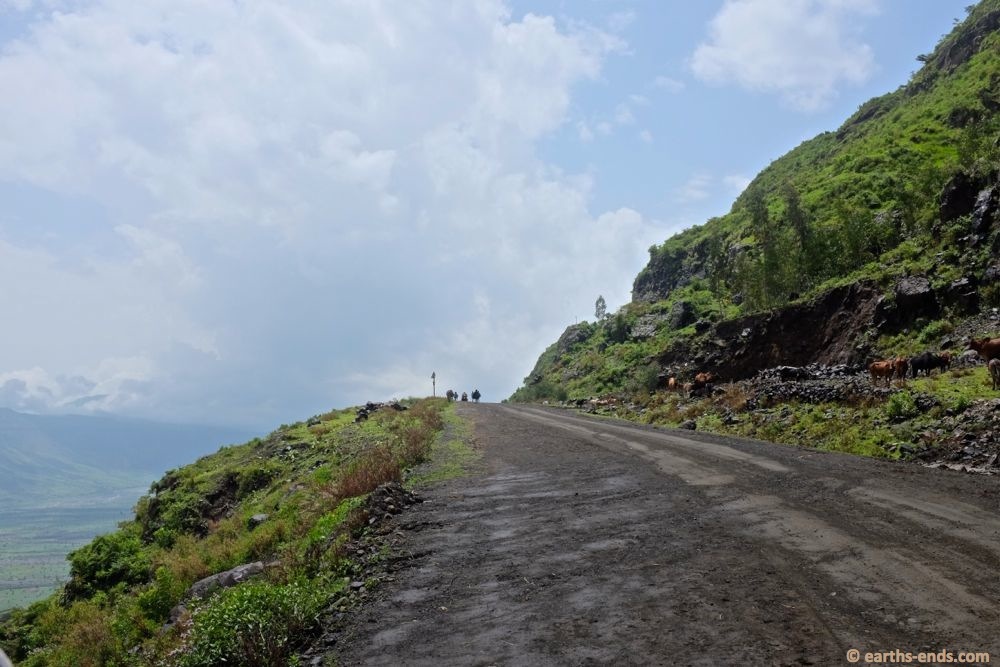
Tan stopped to wait for me while I snapped a few photos, and even on a steep mountain road in the middle of nowhere, kids popped out of the middle of nowhere and mobbed her
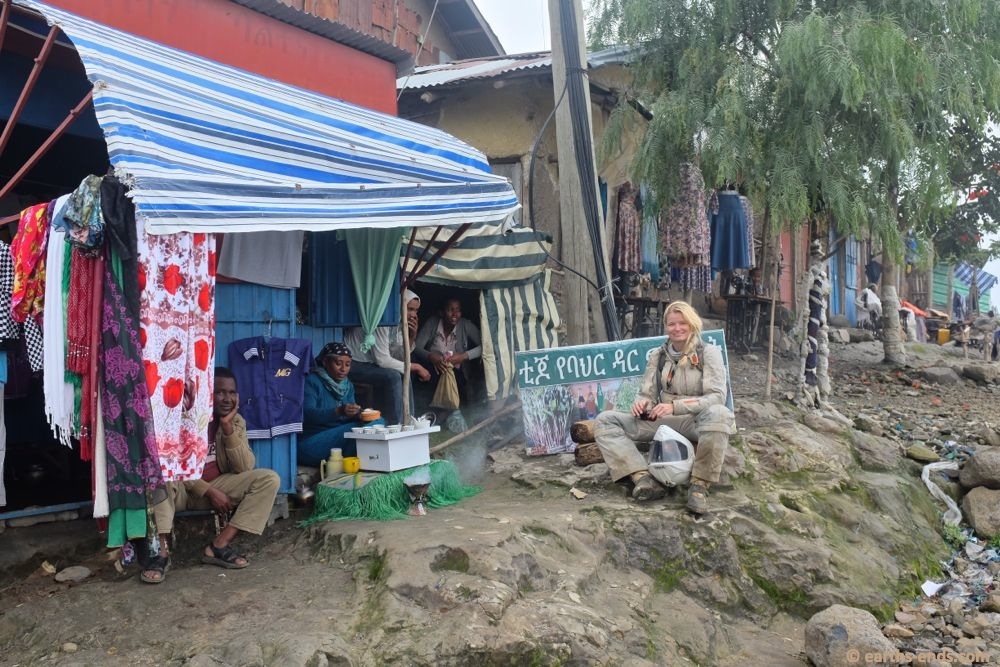
A coffee stop in a nothing-nowhere-unnamed village. One thing we noticed in Ethiopia is villages could be very nearby yet have completely different characters. In one particular place, you might get mobbed by onlookers and forcibly asked for money by everyone with a mouth, whereas in a village nearby adults might chase off the kids from hassling you and you are left in complete peace. This was one of the latter, we had a nice stop with some cheap ‘buna’ (Amharic for Ethiopian style coffee) and friendly locals.
We woke to heavy rain the following morning like the last time we were in Dessie heading north, which upset our planned ride north over the mountains on a minor dirt road… also like our last time in Dessie heading north. We waited out the rain for all of the morning in a café and decided to take the more direct route up the highway when the sun came out.
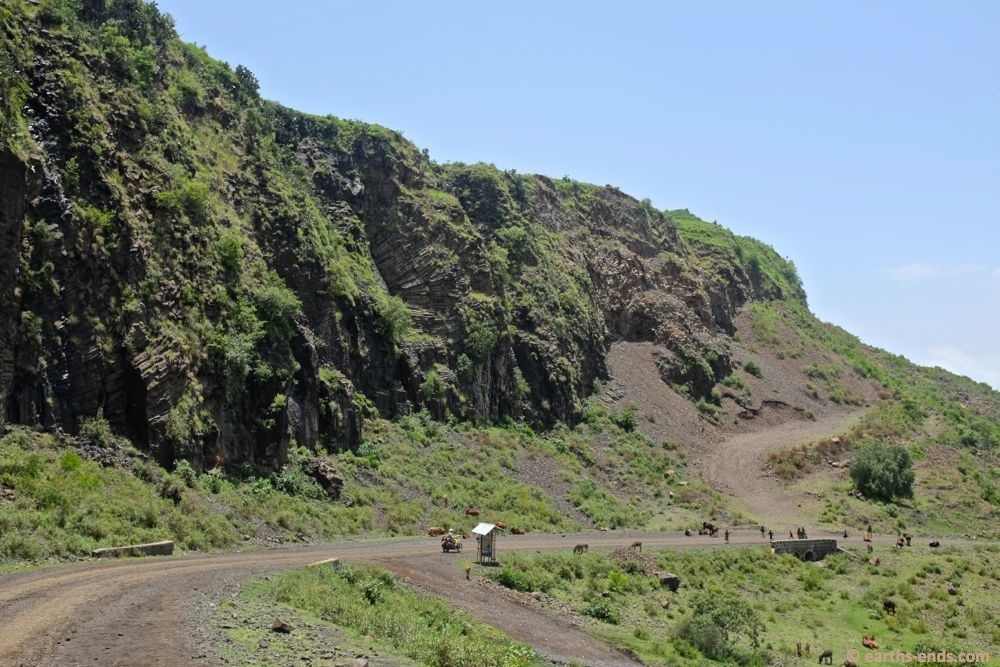
Heading north, see the turned over columnar-jointed basalt in the road cutting? Kids must off they are running up to Tanya who is parked in the shot
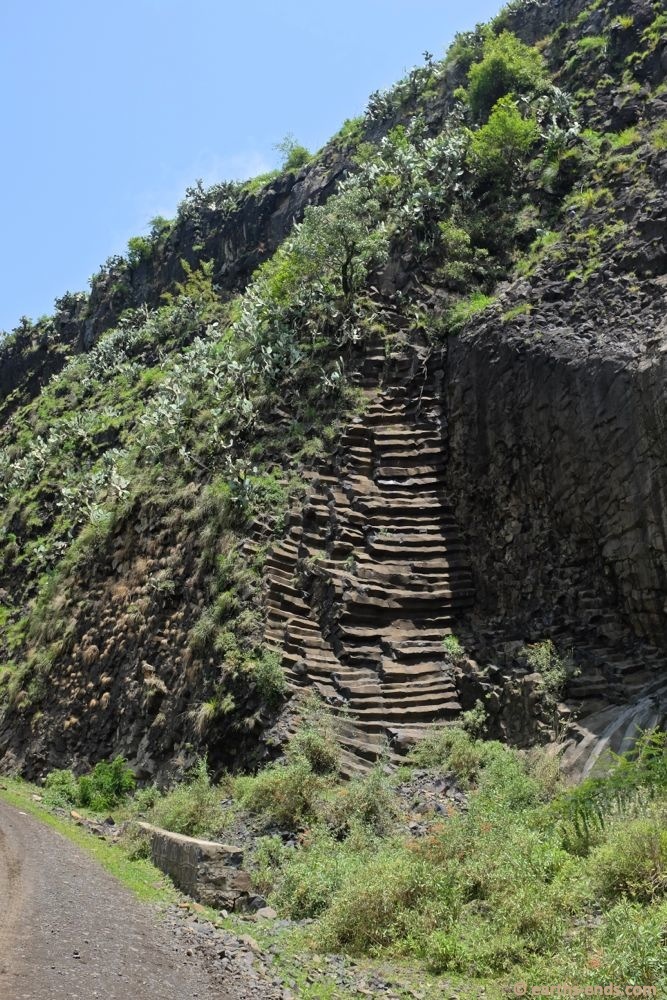
There it is…
We had an ok run north to Waldiya with not as many rock-throwing kids as last time. We’d been using the waving-to-distract-the-kids method, which was successful for all but the really naughty ones. Tanya was riding out in front and came across one such group who looked like they would be trouble. They didn’t have time to do anything to Tanya but they were more than ready for me as I came away the tight corner. One of the kids threw a rock while another came out onto the road and cracked his whip at me. This time the bugger got extremely close to my head with Tanya attesting to this by saying she heard the crack of the whip so loudly over the intercom her ears were ringing afterwards.
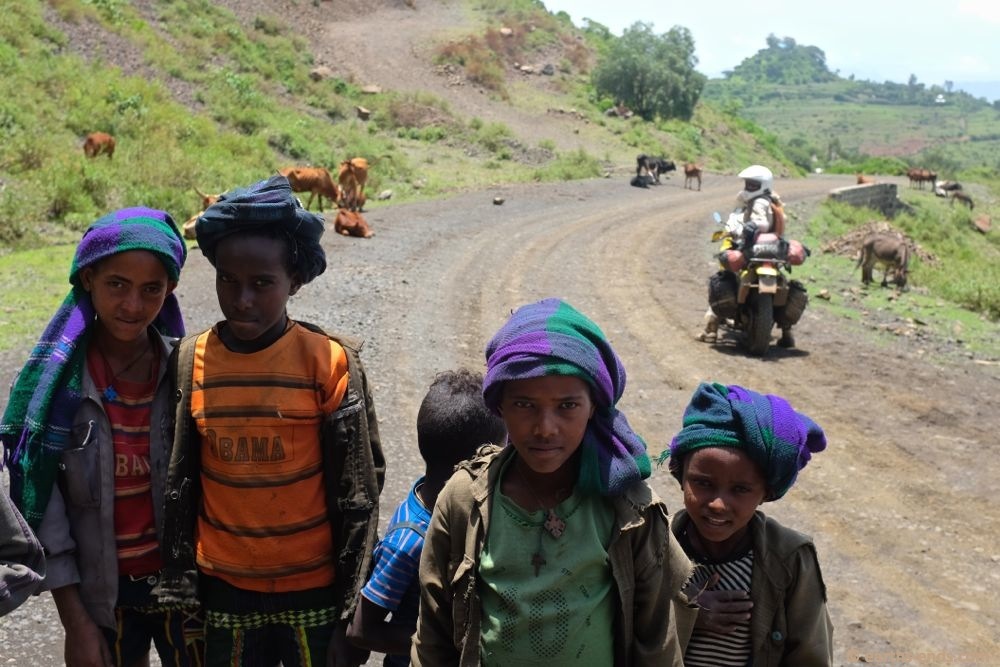
Some kiddies checking us out. These kids were just curious in the weirdo farenji riding through their area
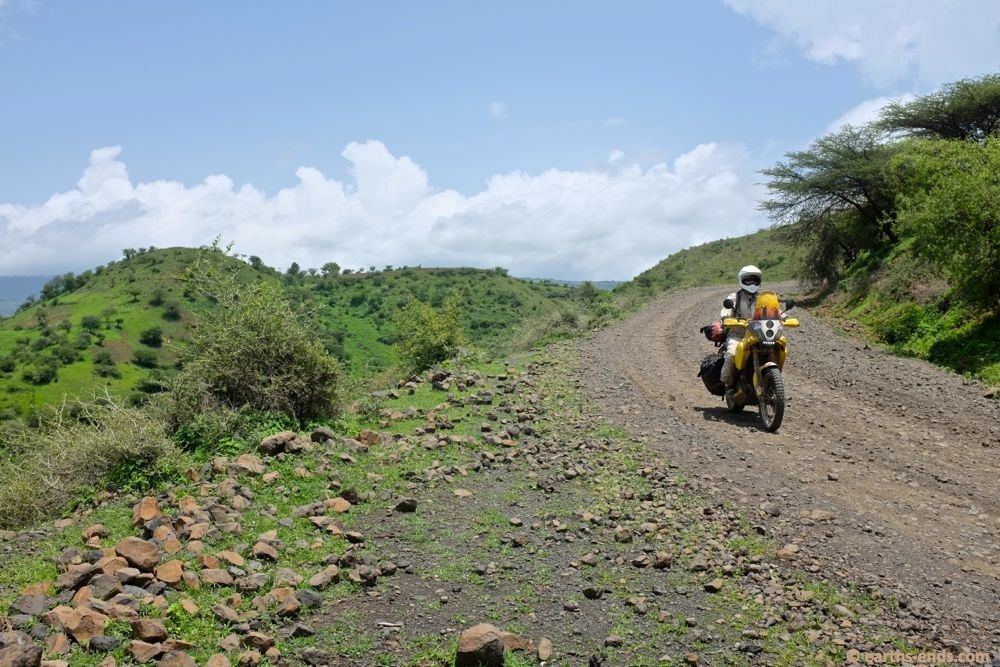
More nice riding on the way to Dessie on the dirt
I pulled up as fast as I could but the little shits were already running for the hills. I turned around but they were long gone. But for once the terrain favoured us. Just a short scramble from the road the kids were running through some ploughed fields down a relatively flat valley. While I was annoyed yet resigned to the fact that we’d never see those kids again, Tanya was frustrated enough she picked up a couple of rocks and roved the fields yelling at the kids as they kept on running further down the valley. She knew we’d never catch them but thought it might be worth hanging around to scare them.
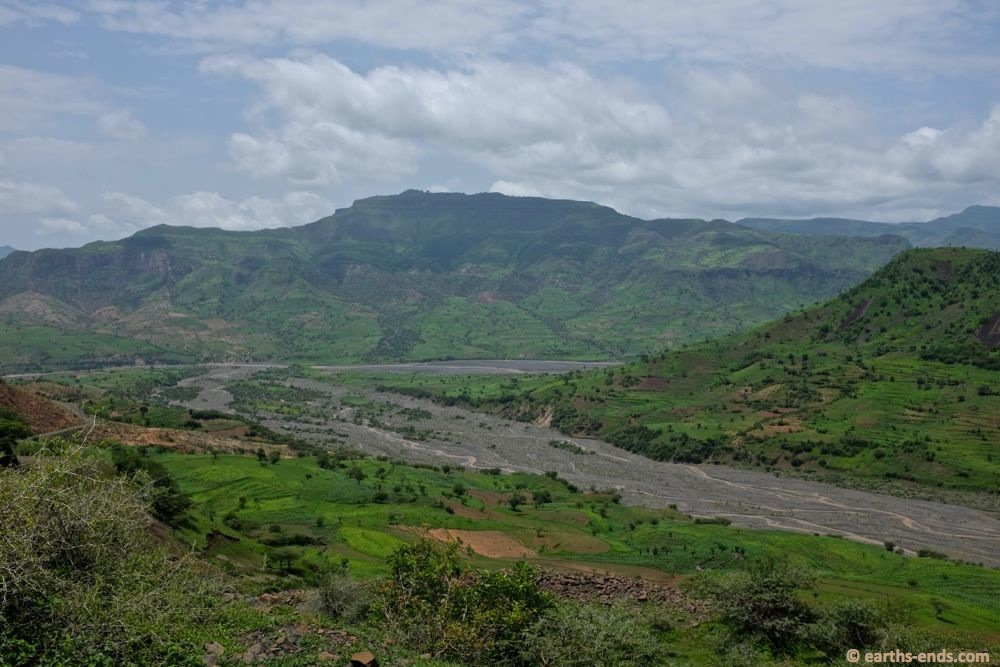
Great views as we rode up hill and down dale
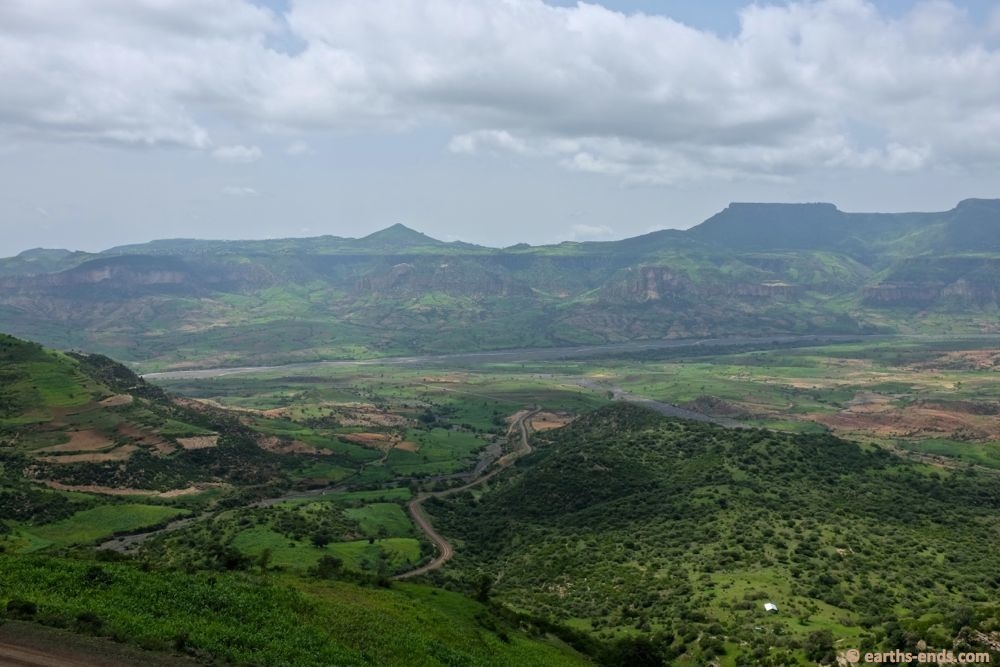
Check em out!
After Tanya gave up and returned to the bikes we hung around trying to figure out what on Earth was wrong with the people and kids here. Nowhere on Earth is like Ethiopia for this kind of thing and it had us absolutely mystified. While we shared our mutual revulsion at these children while trying to chill out we noticed all the animals near us. These were clearly the animals the kids were supposed to be looking after instead of molesting passing traffic. We had been provoked to the point were I thought a great form of retribution would be steal one of their goats, ride a kilometer or five down the road and give it to someone. It seemed like a great idea in that moment so we got to looking for a small, easily transportable kid goat. However it was only large and recalcitrant goats on offer with a few older kids which looked like they could be trouble when hung over the bike. We kept looking, but with some time for retrospect we realised that stealing a goat off poor Ethiopians was not something we would have ever imagined ourselves doing. We abandoned our evil plan. Ethiopia was having a drastic effect on us.
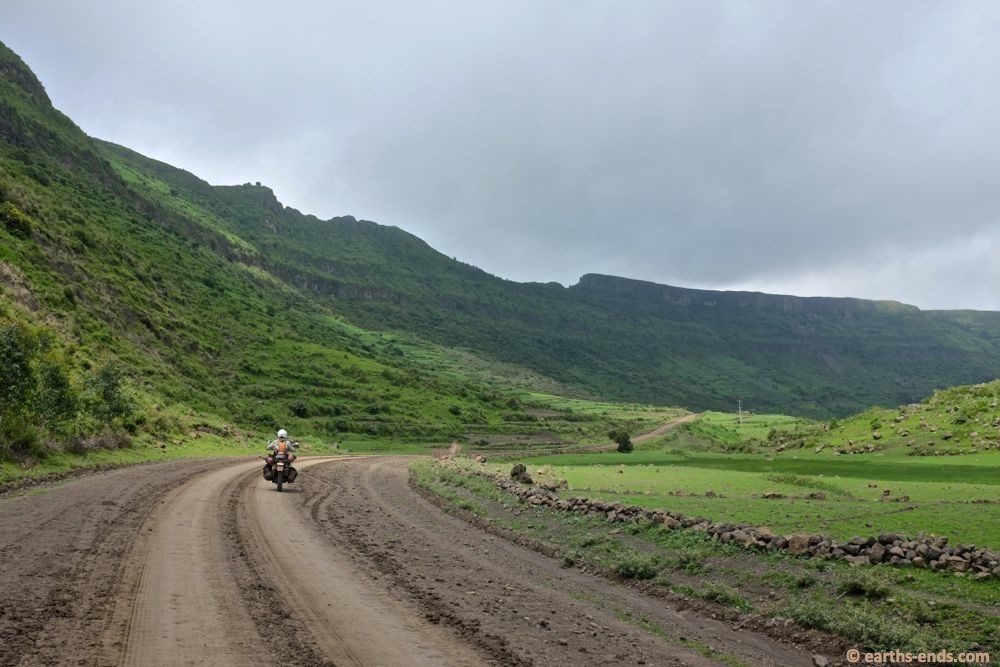
Pretty much the entire way from Addis to Dessie on the dirt is a potential photo op
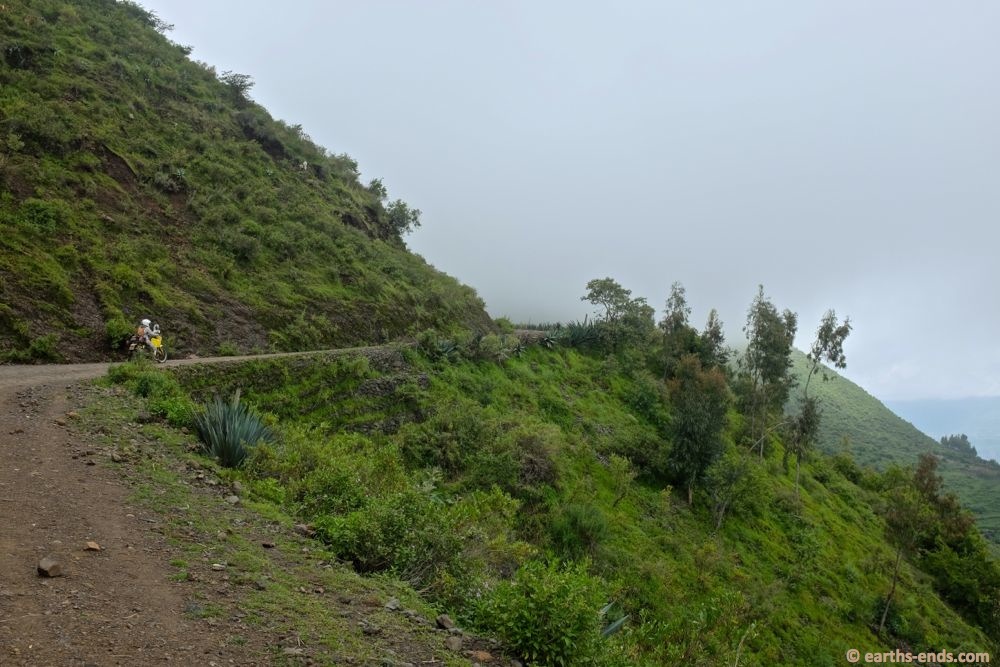
See what I mean?
Just then we noticed a couple of men and a woman running down the hills towards us. As we looked around it hit us what the fuss was all about. The animals (a few cows, 4 or 5 donkeys, half a dozen sheep and about a dozen goats) the children were supposed to be looking after were now running amok eating up someone’s seedling patch. It was clear that the kids that had caused us trouble on the bikes could expect a lot of the same coming their way from their parents and neighbours. These kids were going to cop it and it was hard not to think the justice in store for them was not just a little poetic. As the adults cleared the animals from the field, we got on our bikes and left with a clear conscience.
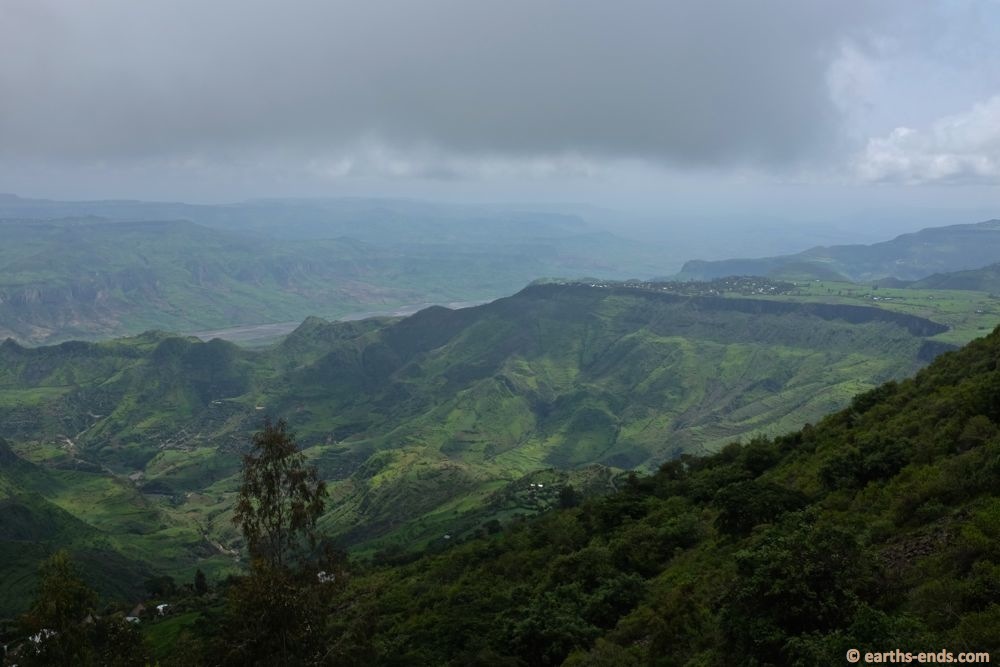
Stunning…. Truly stunning views.
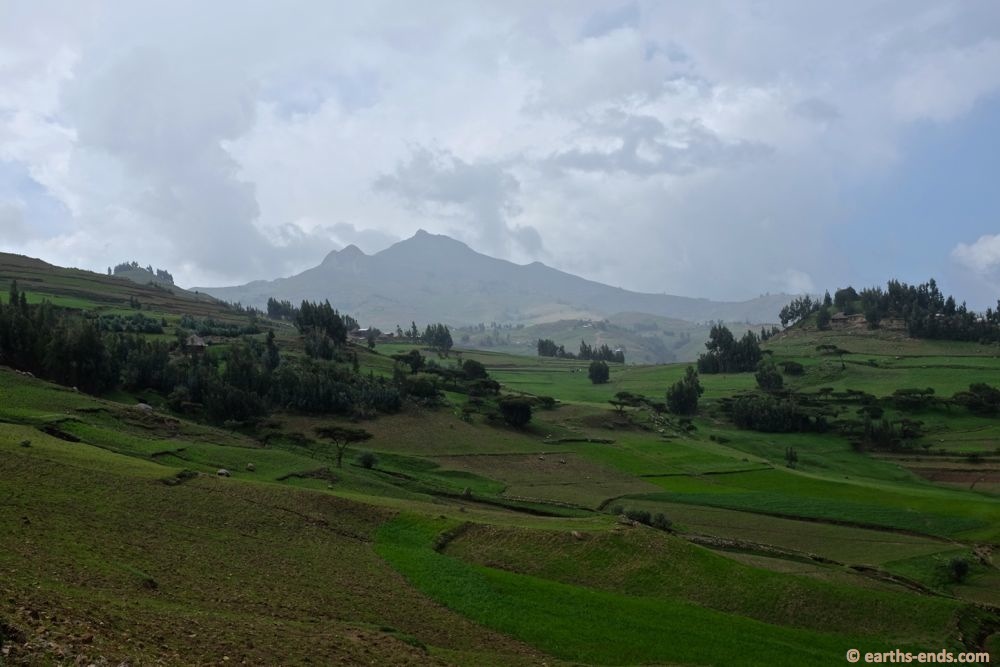
First views of Mt Dajole (3829m asl). I could see a track on the gps to the summit and we were going to be riding right past it… so figured we might have a look-see?
We stopped at Waldiya and had a coffee while we arranged for my torn bike cover to be repaired once more by a guy with a sewing machine working on the street. Our bike covers are completely knackered and so sun damaged they were no longer waterproof and would tear if threatened with a nasty stare. For a trip like ours, a lightweight bike cover while not a ‘must have’ item are right up there on the ‘good to have’ list. The average person is generally speaking less curious about what they can’t see so when the bikes are covered most people just walk on. As much as we’d like to get rid of more stuff the bike covers were far too useful for that.
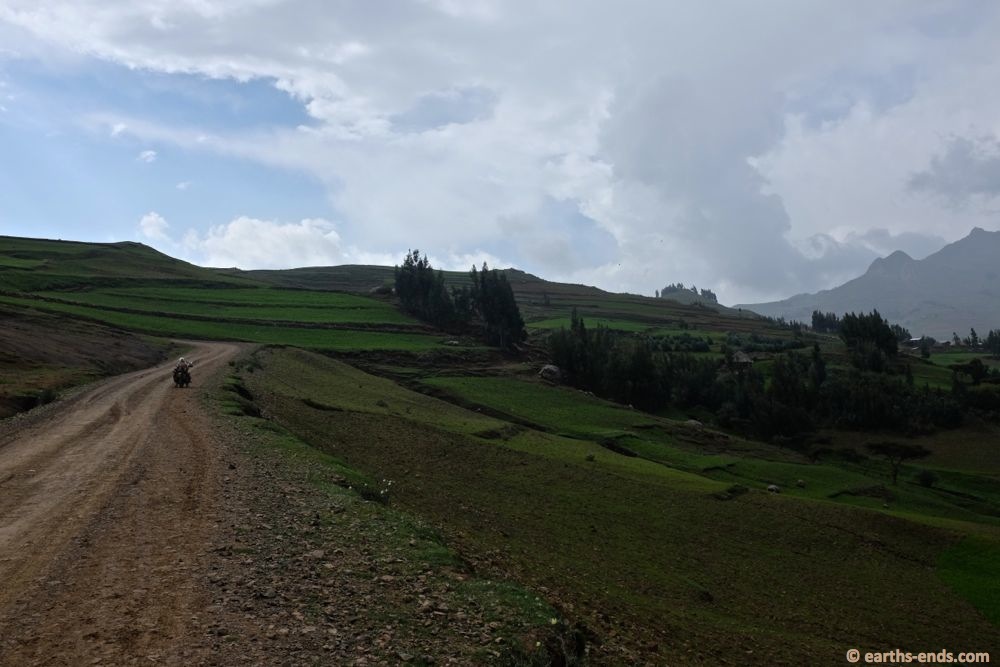
More nice views as we get closer to Dessie.
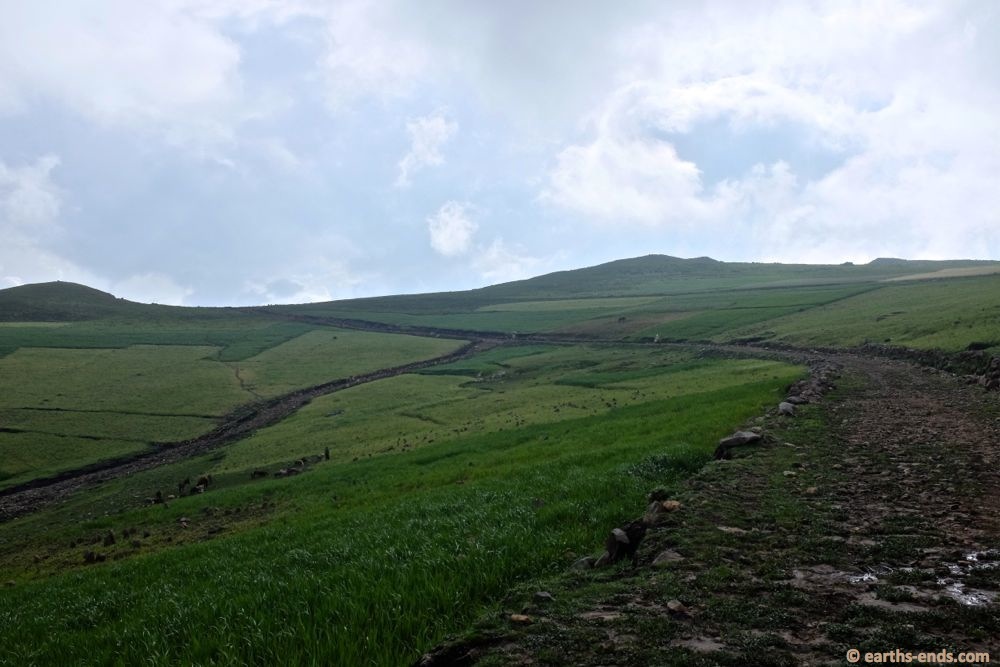
The track to the summit of Mt Dajole
While we were waiting for the bike covers a nice young guy with good English started chatting with us. He told us how the people in the town have been waiting for years for a factory (as promised by the government) to open to give people some jobs, but it still hadn’t come. He listed the types of factory he’d like to be built there… textile factory, soap factory, plastics factory… as wistfully as the average first-worlder lists the countries they most want to holiday in. But while many of us can enact our dreams, for the average person in Ethiopia, there is nothing they can do but wait.
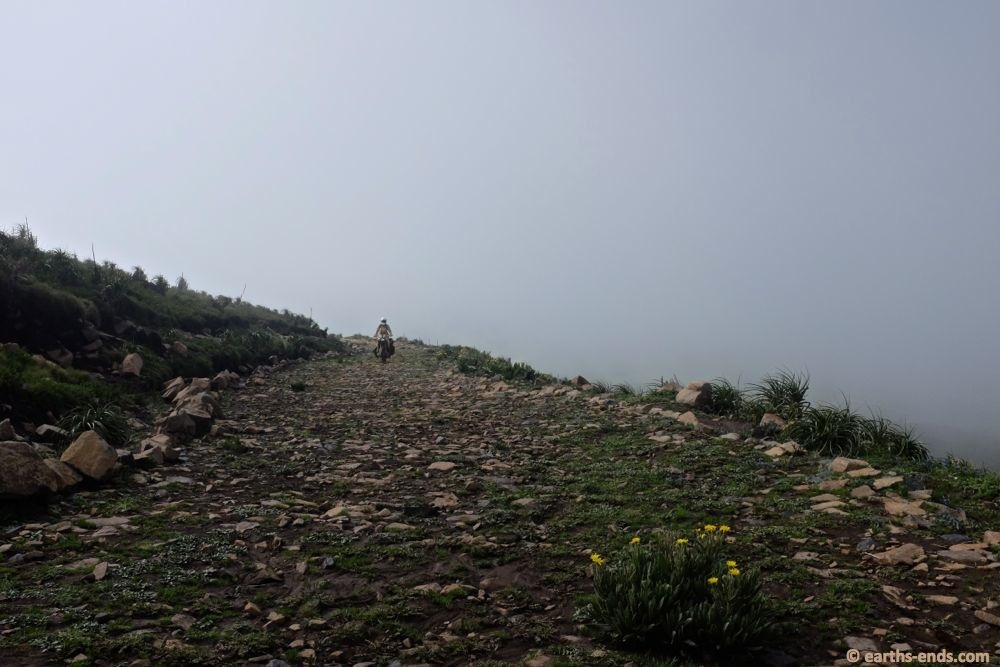
It got steep and slippery with moss covered wet rocks making up the track and our fast wearing Golden Tyres GT201 didn’t like it so much
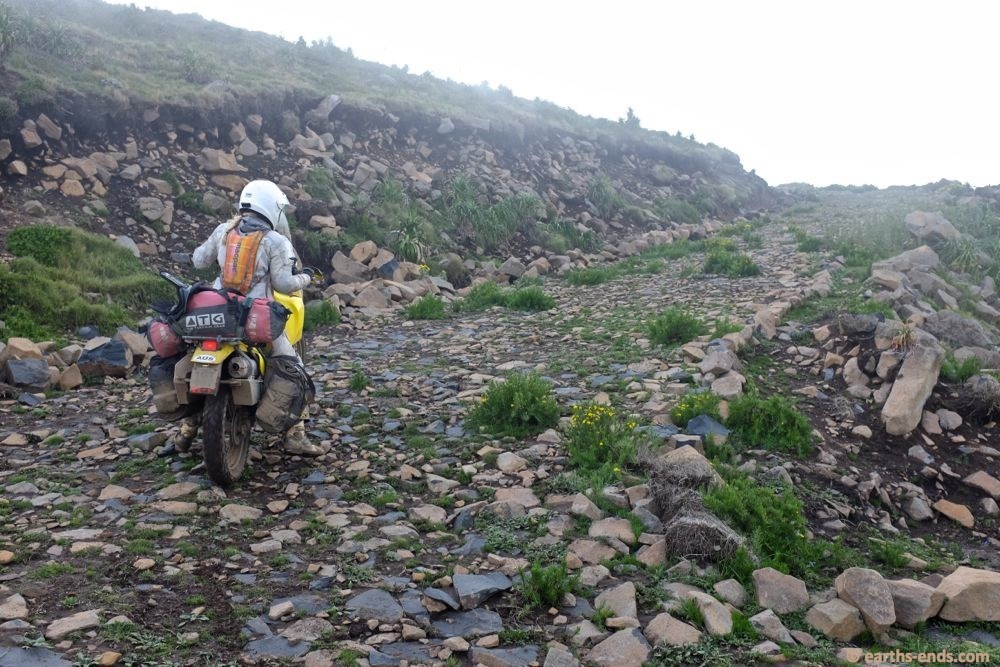
As you can see – Tan’s rear wheel spinning on the exit of this hairpin
The same fellow noticed a bunch of rocks I had conveniently placed in the webbing of my tank bag and asked if they were “for balance”. I told him they were there to threaten kids that threw rocks at us. He translated this for the crowd and they all thought that was hilarious. We told him we had had a lot of trouble with stone throwing on the road from Addis and he asked if this was around Hayk, which is between Dessie and Waldiya and where we copped the worst of it. He explained that this was a place where everyone has this kind of trouble, even Ethiopians. The kids there he said were “very bad” and that “it was not our (as in Tan and I) fault but the government’s fault” they were this way. I don’t know exactly how the government was responsible for these kids acting that way, but he was adamant.
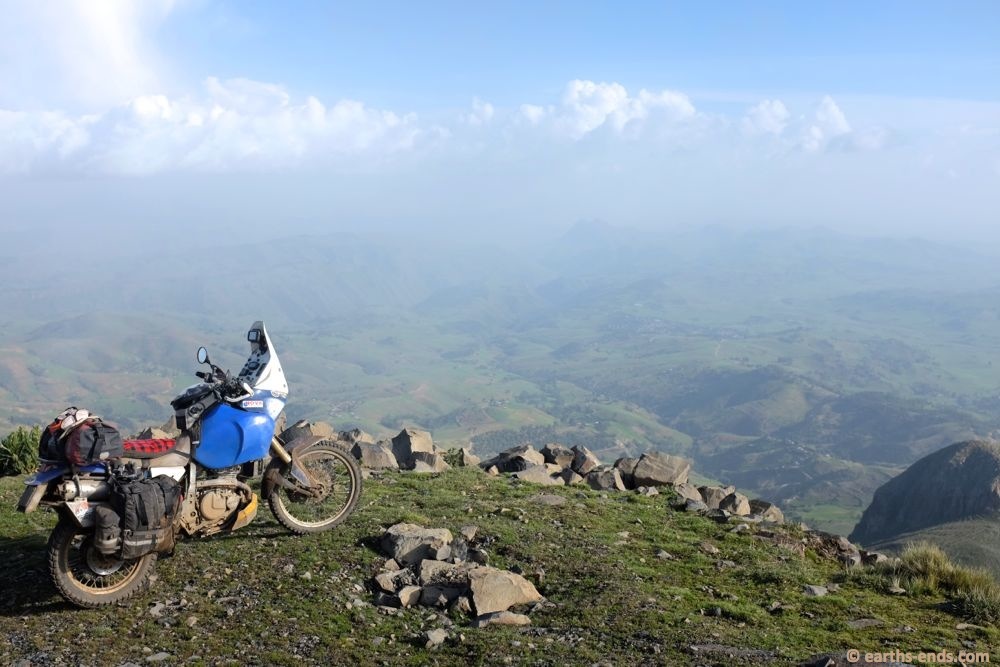
On top! Lovely views in the thin air
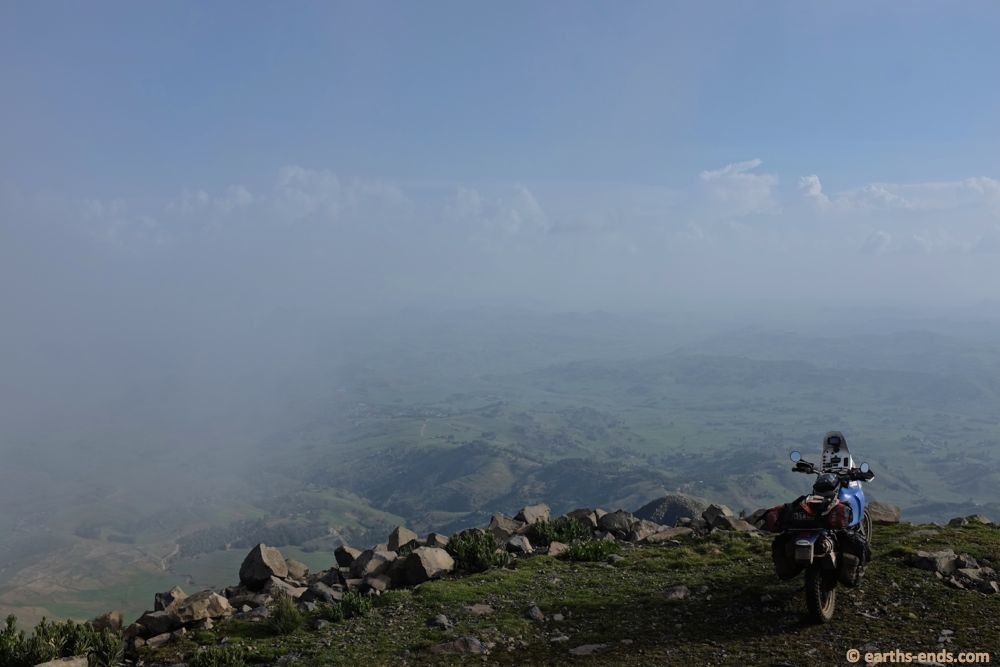
Views for miles
But when considering where Hayk is, it did strike a cord with a book I had recently finished reading by Peter Gill called “Foreigners and Famine: Ethiopia since Live Aid”***, an easy-reading non-fiction on Ethiopia’s recent history. The book drew a link between famine and hostility to foreigners that made a lot of sense. Ethiopians, due to their unique culture and history are a proud people, yet are incredibly poor and dependent on the outside world through aid. And while plenty of other countries in Africa also receive aid, no other country relies on it to the extent as Ethiopia both in terms of fiscal and food relief; there is no other way to describe it then it is the cornerstone of their economy. No other country is as synonymous with famine and Aid as Ethiopia, and Ethiopians know it.
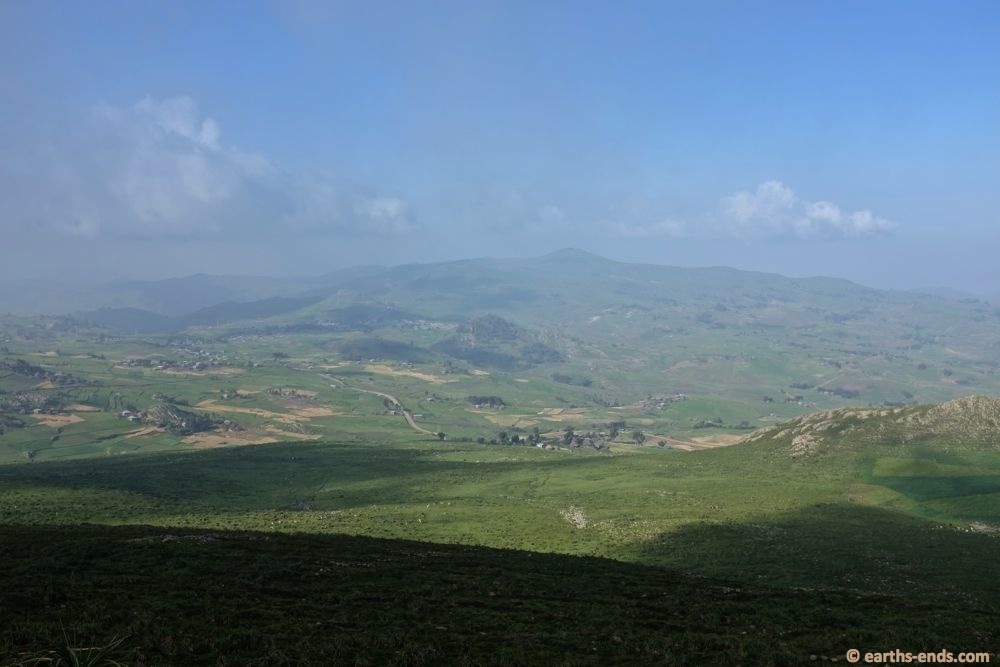
The view down Mt Dajole to the north
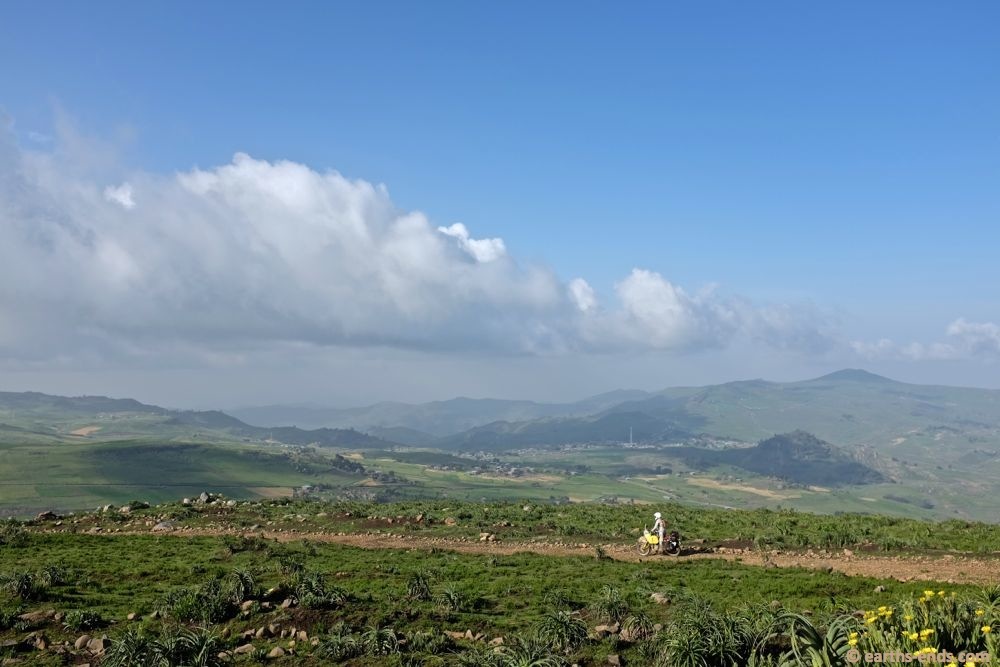
Tan descending back down the track
In other parts of Africa, kids would tell us how they wanted to go to school and be a doctor, teacher or engineer. In Ethiopia, they wanted to grow up and work for an NGO (a close second was tour guide). Because that is where the money is… in Aid. And when you looked around, it made a lot of sense. The best buildings in town and the best 4x4s on the highway were from the NGO’s; UN and UNICEF, Save the Children, USAid and the others. If you see a car with “UN” on the side, it will no doubt be a 200 series Land Cruiser covered in aerials and parked out front of the best hotel in town. In a remote town north of Waldiya, we saw the regional headquarters for USAid. It was obvious for miles because it was the 5 or 6 story glass building surrounded by huts which constituted the rest of town, and quizzically had street lighting hanging on faux-European style wrought iron poles… all in the middle of nowhere. Why the ostentatious show of wealth in the face of such poverty? Surely you would think this is counter-productive?
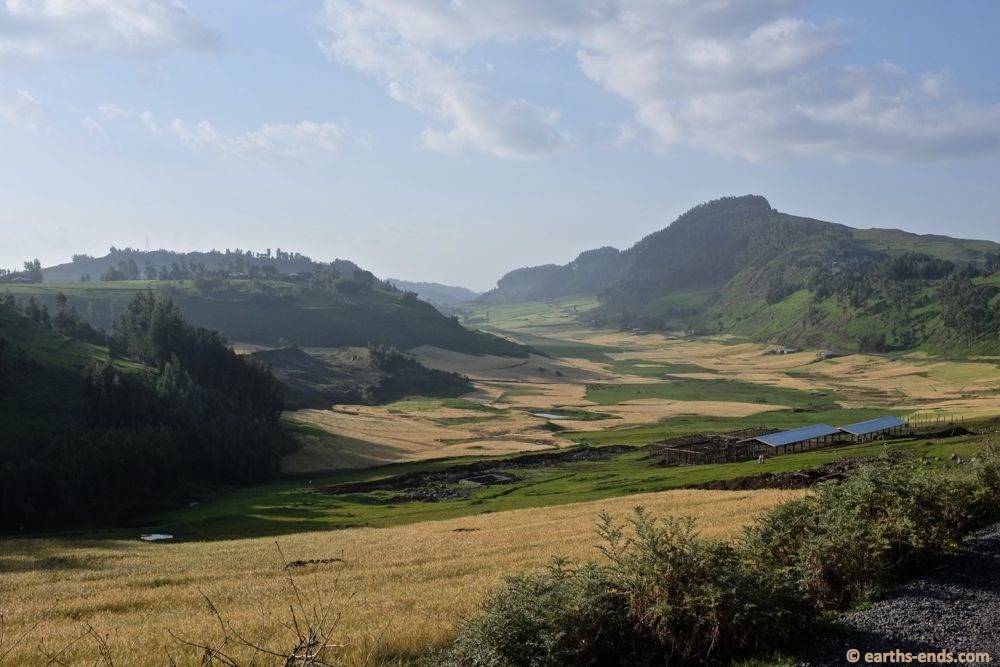
Teff growing in the fields south of Dessie. This is the grain that is used to make injera. It looks like a really short version of wheat and the grain itself is noticeably smaller
It is. Ethiopians intense cultural pride combined with their history of calamity and extreme aid dependence has created deep resentment that manifests as hostility aimed at foreigners, whom are seen as universally and unfathomably wealthy which is no doubt accurate in relative terms. So considering the wealth gap between aid giver and receiver and what is at stake; the well-dressed and probably young white foreigner who decides what projects get funded, who is lucky enough to receive aid and then how much, or in more simplistic terms, who suffers and how much, maybe even who dies and who doesn’t, all from the front seat of his US$250,000 Toyota (taxes are huge don’t forget) or big fancy office, maybe resentment and then anger are natural reactions?
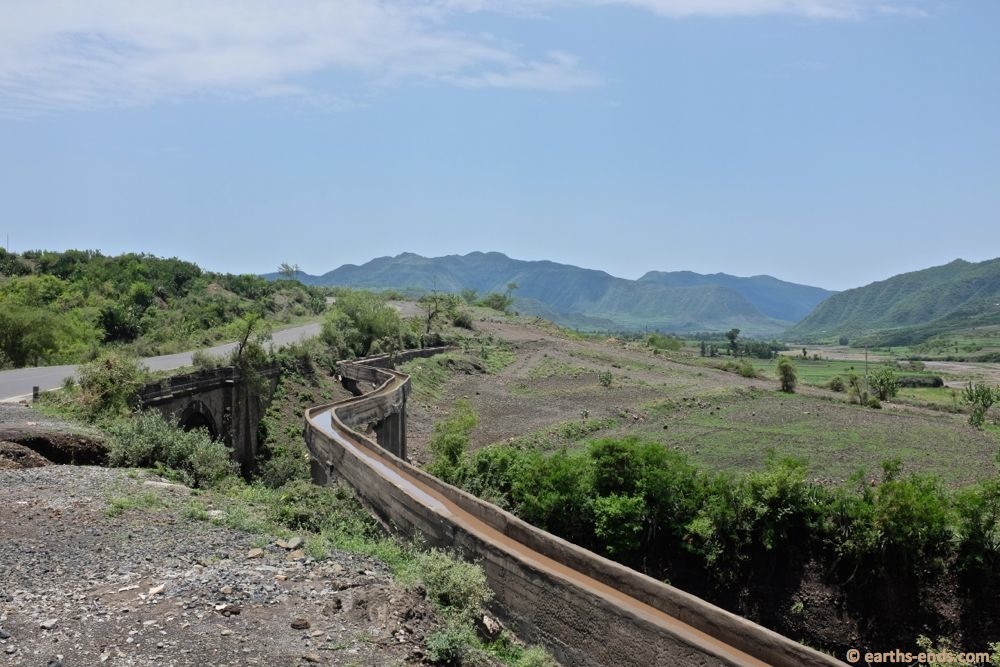
A small-scale irrigation project most likely built by an NGO in the former region of Wollo. A tiny fraction of Ethiopia’s agriculture, about 4% (if I remember correctly…), is irrigated; meaning crop yields are low and highly susceptible to drought, which in an over-populated country with a subsistence economy leads to famine. Low tech (and therefore low cost and low maintenance) projects like this one apparently can make a huge difference to the people that can access them.
So back to Hayk, the town identified by the young Ethiopian guy we were talking to over coffee as the centre of delinquent rock-throwing activity. It is in the north-east of it’s current province of Amhara Land, but formerly it was part of the dissolved region of Wollo that included Dessie and Waldiya and the towns to the north like Korem. This region is not particularly agriculturally productive yet is significantly over-populated and is prone to famine. As such it was ravaged by the famines of the 1980’s and it’s inhabitants subject to forced re-settlement during the Derg Communist Government.****
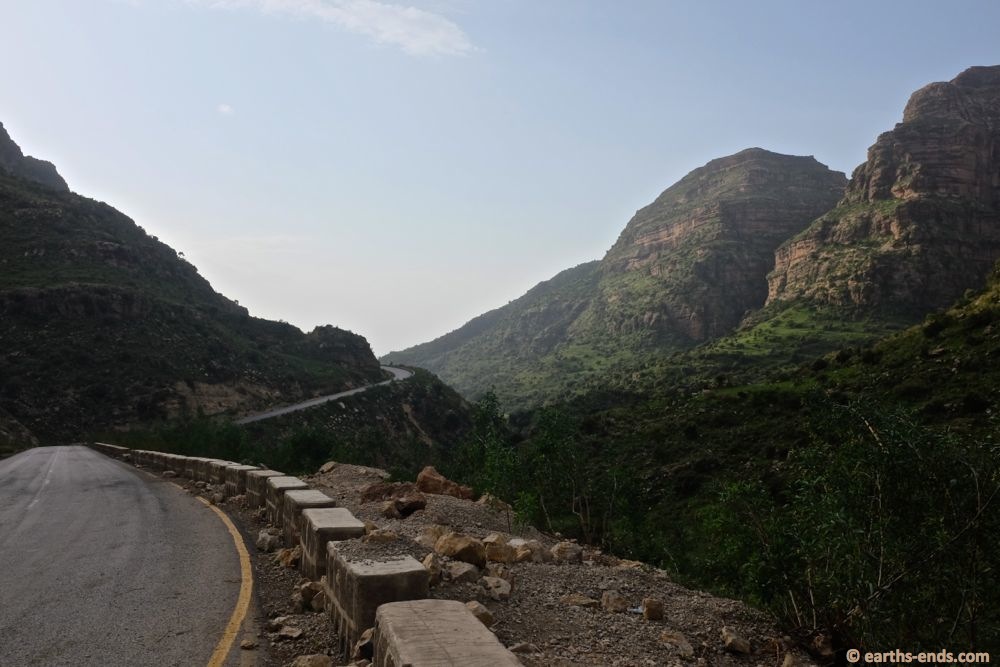
The new tar road north of Waldiya on the way to Mekele. The Chinese have built a new highway from Alamata which doesn’t seem to be on any maps yet.
I felt I was beginning to understand a little better anti-foreigner sentiment of Ethiopia. I didn’t forgive it, and sure as shit didn’t like it, but maybe I was starting to understand it. Our young Ethiopian mate assured us there would be no such issues heading north and he was right, north Waldiya everything was fine. As we had lost the morning to rain we stuck to the highway north and were rewarded with swift travel along new hotmix tar, with lots of mountain views and nice curves and no traffic, pedestrian or otherwise. We rolled into the neat and tidy town of Mekele, which is the gateway to the Danikil Depression, in the late afternoon and settled into a cheap hotel.
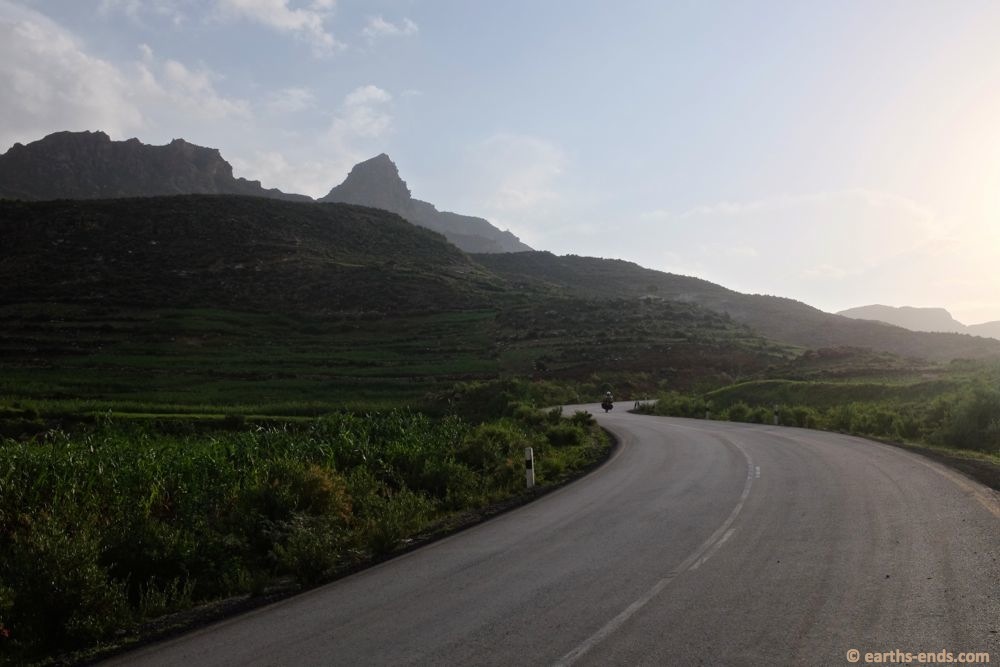
Twisties into the sunset
NOTES:
* This is just a joke, riding in Ethiopia really isn’t “worse than horrible”; in fact it can be quite nice. The place has lots of mountain roads with stunning vistas, ancient and interesting history, incredible churches, unique language and script and some tasty food (if questionable hygiene). But that said, travelling there can be a mixed bag and in some ways it can be very difficult if not outright unpleasant… If you travel there for any length of time in all likelihood you will have some great experiences and some quite horrible experiences.
** If you need to extend your Ethiopian Temporary Import Permit in Addis Ababa, the correct place is Customs HQ (N9° 00.876′ E38° 48.017′), Building C (the one at the back on the left) Office 102 (first door on the left after coming up the stairs). Go in there and set up a tent and lay out your sleeping bag, because things could take a while.
*** This is a great book and gives a well researched account of Ethiopia’s recent political, economic and social issues, including some worthwhile insights into their “aid industry”. Anyone interested in or wanting to learn more about Ethiopia will enjoy it.
**** A story for another time, but in a nutshell, people in overpopulated and famine prone areas (such as Wollo) during the 1980’s where physically loaded onto buses and dumped in uninhabited areas often in tropical disease prone lowland areas near the Sudan border. Many tens of thousands of people died of disease and starvation. It was one of Mengistu’s most devastating failures.
SOME TIPS FOR RIDING IN ETHIOPIA:
- Avoid the highway between Debra Sina (about 190km north of Addis Ababa) and Waldiya (especially the bit between Dessie and Waldiya near Hayk) like the plague. Quite simply put – do not ride this road. It is heavily populated and the dirt road alternative in the highlands is far superior. If we had never ridden this road I’m sure our view of Ethiopia would be far more positive.
- Stay off the highways as much as possible. We found that in remote areas, people were far friendlier and less prone to anti-foreigner hostility.
- If you see some kids see you and pick up rocks to throw them, wave excitedly at them. They generally drop the rocks and wave back. This works well with smaller kids, say under 8 or so. Another option is to stand up on the pegs and point at them and shout like hell, they generally freeze up. Another good option is to swerve your bike at them – the little pricks will run. Don’t ask me how I know this.
- When in a group, ride either very close together or very far apart. We found the person riding second always copped way more shit than the person riding first. So if riding in a group, try and get past hostile kids in a group so you are all past and gone by the time they work out what is going on, or spread out so far they don’t realise you are coming. Worst distance to ride is about 200m or so apart. Then they are alerted by the first bike and spot the second and have heaps of time to pick up rocks hatch their little plans.
- Don’t ride too fast. In the populated areas, there are animals and people everywhere. In villages we would ride quite slowly, like 30-40kph, and in between we generally only sat on 60-70kph and only very occasionally got faster than that, like the road from Awash to Mille where we could sit on 100-110kph quite safely. But if there are people about, slow down. In our 6500kms riding in Ethiopia, I hit and killed a dog, Tan hit a calf at slow speed, we both nearly hit the same “pedestrian” and we both had many close calls with animals. It is not the place for riding hard.
- If you hit an animal, either leave immediately and go to a police station, or just keep going. If you hit a person, most definitely do not stop, keep going and report it at the next police station. We saw them in all but the smallest villages.
- Only schedule 300-350km per day in Ethiopia for a normal ~6hr day of riding. We had some big days of +400km but to achieve that you’ll be 8-10 hours in the saddle.

Blog 48 by Tan: Highway of the Devil’s Spawn
We decided to ditch the tar and take the old dirt road through the Awash Valley en route to the tourist hub of Lalibela. It was a wise move that found us riding along rolling barren hills then across an almost desert scene. It made for some hot, dusty but not unpleasant riding. It also made for less mentally taxing riding not having to deal with the sea of stock animals using the road as a paddock. The infrequent settlements we came across were some of the poorest we had seen outside the Lower Omo Valley. And believe me, there is stiff competition from the people along the route we had taken to Harar. Here the people had the most rudimentary of dwellings and little else but small herds of skinny goats. I couldn’t imagine how they were able to make a life out there. They were stunned and silent at our passing.
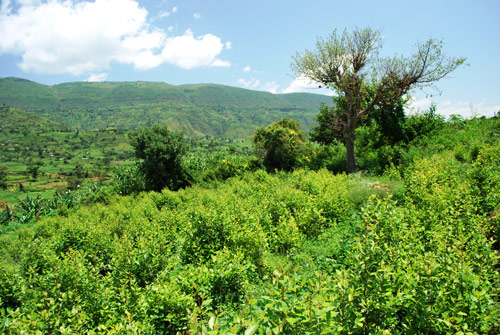
This is what chat looks likes growing. This is random net picture. It is so profitable and farmers can harvest a couple of times a year and receive instant payment. It is no surprise more and more farmers are getting rid of coffee and other grain crops and trying to grow chat. You can see where that will head in this highly populated drought prone country. But you can’t blame poor farmers for going to a better cash crop.
Eventually we found a village which had well maintained and irrigated (we are guessing they had a bore) chat plantations. Seems that is how they manage to subsist in the punishing environment. As we rode we started to notice the appearance of some huge power lines through the area. We were at a loss to explain their presence in the barely inhabited and barren wasteland. We could not imagine anything in the area that would require such vast amounts of energy. All was made clear when a gigantic infrastructure project came into view. This one was a monster electric railway connecting Addis Ababa to the port of Djibouti.
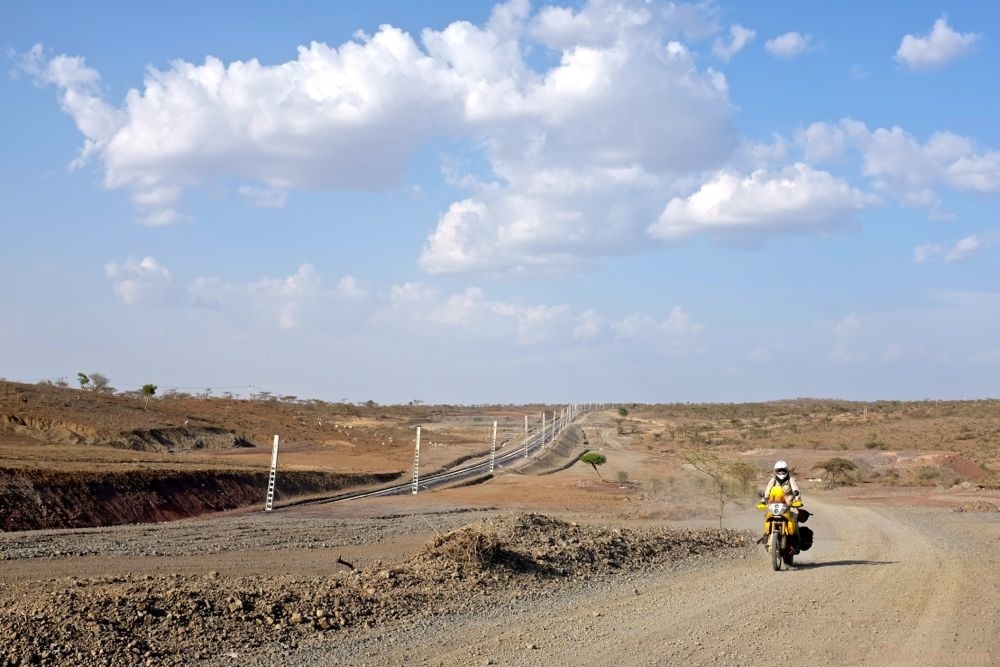
The Chinese funded and constructed rail project connecting the capital to the port of Djibouti. The project will significantly reduce the cost of transport of goods to the land locked country.
With the sun going down we found ourselves in a small village where we started looking for suitable accommodation. All the guesthouses we saw were so appalling we couldn’t have possibly spent the night there. And believe me a place has got to be pretty terrible for us to not be able to suck it up for 12 hours. More to the point, the whole place gave us really bad vibes so we decided to head 22km away from our ultimate destination where we saw a couple of hotels marked on the GPS. We came across a decent looking, modest hotel and parked up for the night after downing a couple of beers and our typical meal of tibs and bread.
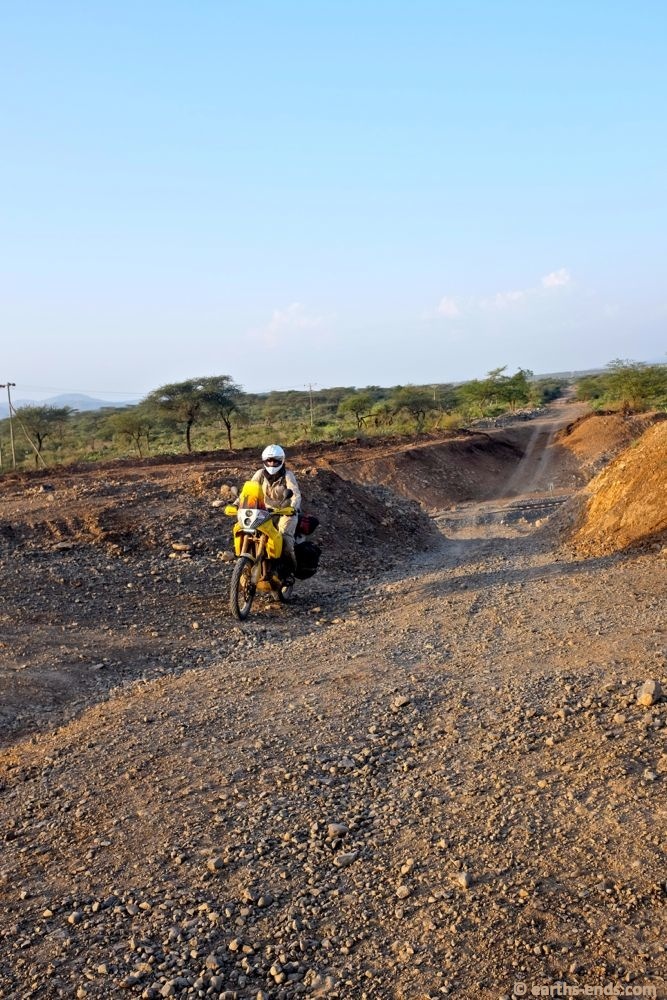
The terrain made for some fast and fun riding
The next morning we rode the tar through to Awash to fill up our tanks… or at least that is what we had planned. There was a major construction project underway and, we think given the proximity to the more hostile areas of Danakil and the way more hostile Eritrea, due to terrorism risks access to the bridge was forbidden for bikes… like they were the only vehicles open to a determined bridge bomber. Whatever the logic (or lack thereof) we were unceremoniously turned away. Making us once again, feel as welcome in this country as a turd bobbing away in a public swimming pool.
After some quick calculations Mick concluded that we could make it as far as Mille on the fuel we had if the petrol stations we expected to line the countries most significant trade route (Djibouti to Addis) weren’t there. Turns out there was one, but being Ethiopia it had no petrol. However, Mick’s calculations, while based on modest fuel efficiency, failed to take into account the unknown pilfering of 5l of fuel that took place the night previous.
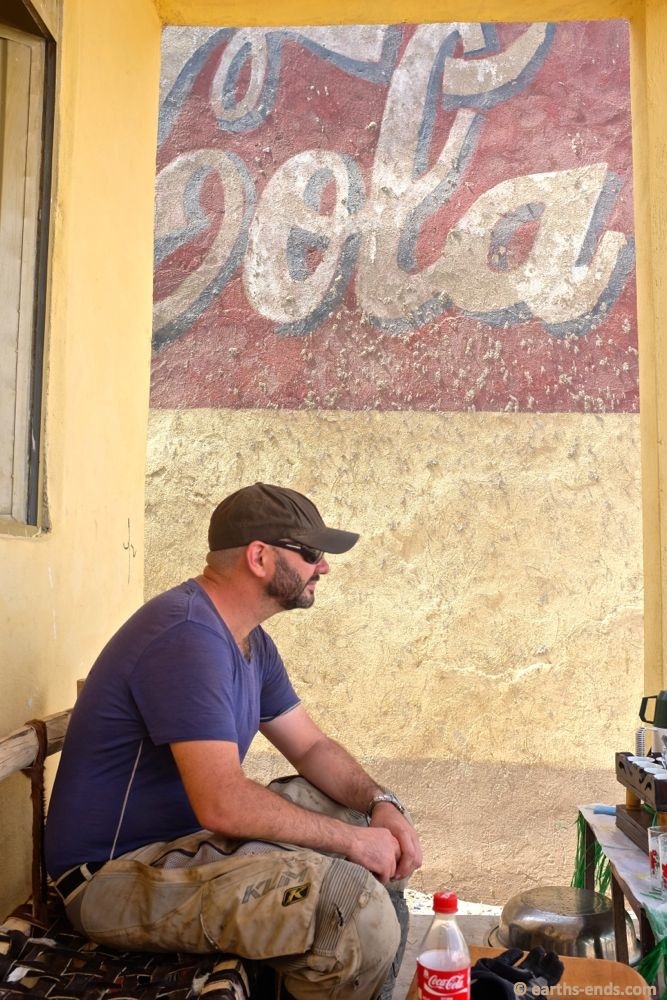
Coke stop
Whenever we stay at a hotel in Ethiopia we make a point of meeting with the security guard, out of both common courtesy and keen self-interest. I have a soft spot for these guys. They are generally as old as the hills and basically work so as to have a place to sleep. They work everyday for meals and maybe $20 cash a month. We always introduce ourselves and let them know they will receive a tip the next morning for a job well done. However that night we arrived and unpacked late and I never found the security guard. Mick hitting his reserve in the middle of a desert highway some 90km earlier that it should have made it clear that he’d lost about 5L of fuel. There was no way to explain it apart from that. The fact the guard was then scarce the next morning was another bit of circumstantial evidence to his involvement. It is a rare thing indeed to have the guard not there the next morning in case of tip… in Ethiopia we often had complete strangers walking off the street claiming to have watched the bikes and wanting payment.
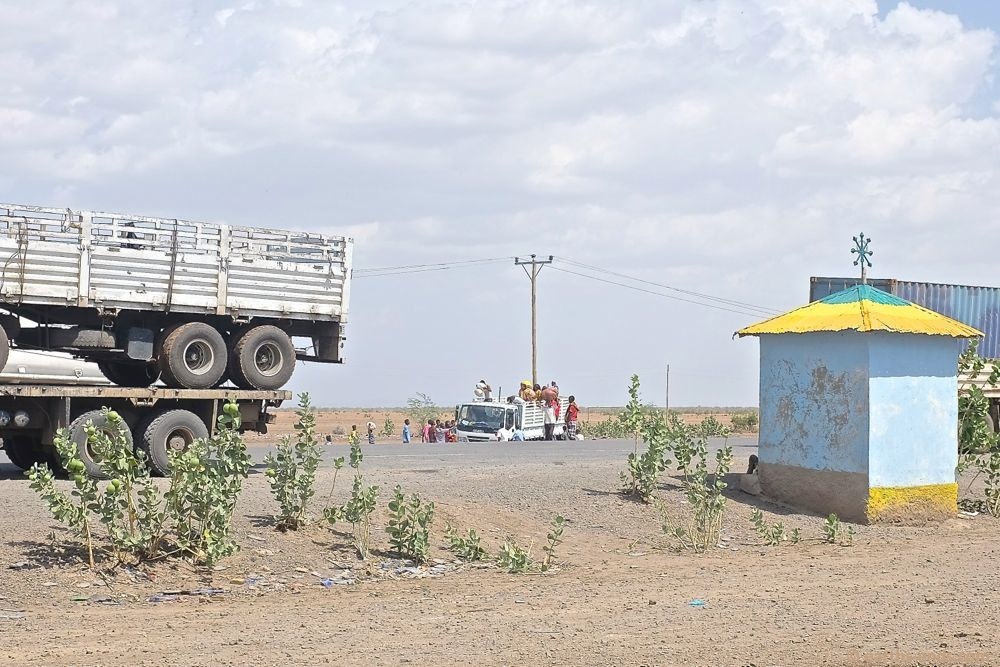
While we were having lunch there was a modest little crowd watching us then all of a sudden a chat transport truck pulled up. I’d never seen people move so fast. Men and children alike surrounded the vehicle to buy and transport the mind-altering weed. Chat is so crucial to the economy there is no way it would be made illegal no matter its damaging affect on the populace. It was a depressing scene.
We weren’t too upset but I was kicking myself for not having introduced ourselves as I was confident he wouldn’t have taken it otherwise. I appreciated his restraint anyhow. He could have got both bikes and for a lot more fuel. Mick turned to reserve and ran the numbers again. It would be touch and go if we made it to Mille and it was barren, Mad Max type wasteland between here and there. We resolved to ride efficiently and see how far we got until I went to reserve. If it happened sooner rather than later we’d pool fuel resources and have one person ride off to fill the main and secondary tank and return for the voluntarily stranded party.
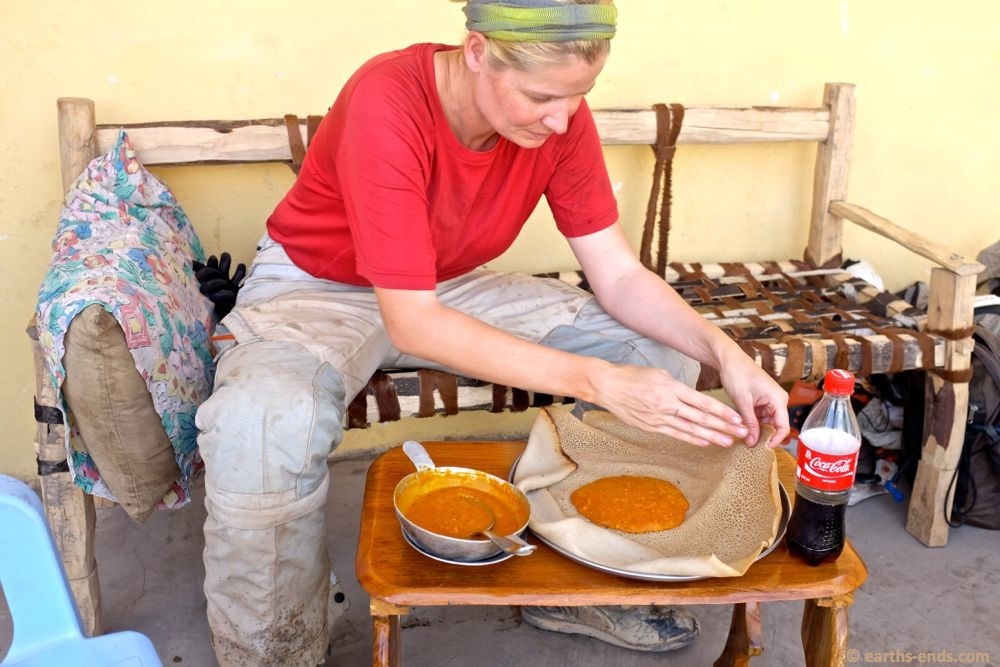
A lunch of shiro and injera accompanied by some blissfully cold cokes and coffee.
We actually came across some black market fuel at a tiny township that was asking double the black market price. Bugger them we thought, we should make it fine. I ended up hitting reserve about 40km from Mille (right as anticipated) and Mick was able to run off the dregs of his secondary tank until reaching the hotel. And like that, a moderate inconvenience was avoided. But it wouldn’t have been a pleasant place to wait for fuel supplies. It was seriously hot riding in unforgiving country. It was one of the most desperately inhospitable places I have ever come across, which is saying something because much or our home country seems almost specifically designed to deny human life.
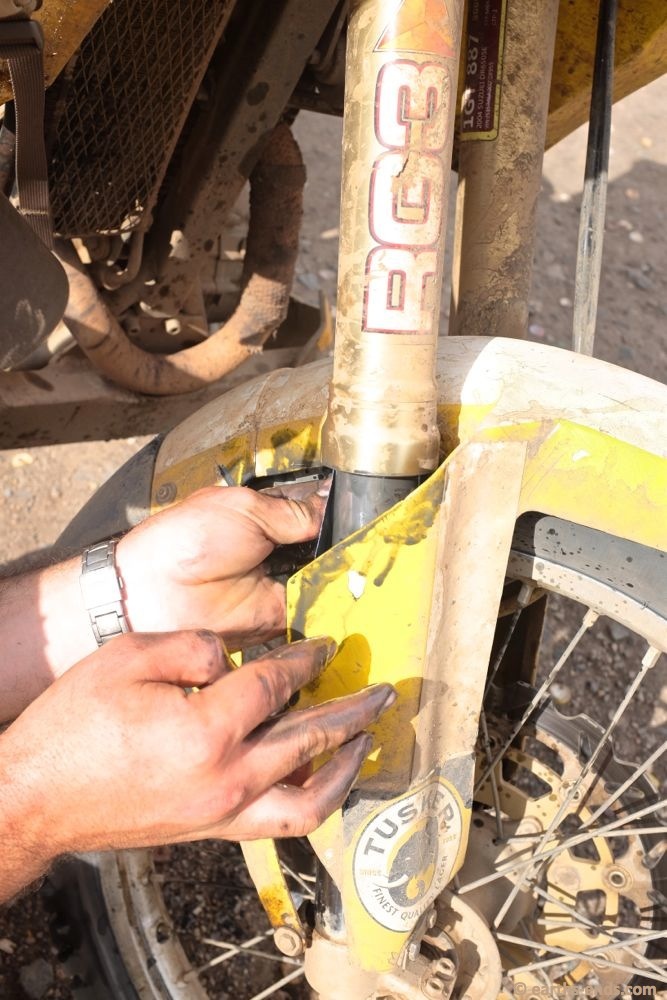
While we were there we both attempted to clean the fork seals our which were leaking again badly. Here Mick is using the Sealmate tool to remove grit from behind the seal. When the thing started to split Mick made his own tool from a plastic oil container. A seal cleaner is a must have tool for the road.
As we approached Mille, located in the south of the notorious Afar region, it was rock as far as the eye could see, punctuated only infrequently by thorn bushes almost entirely devoid of foliage. The camels were the most miserable I have ever seen and must have been as close to death as live ones can get. You know it is no place for humans when the camels struggle to survive. Yet there were people. And they were lining the newly tarred road at sunset, arms outstretched with plastic bottles begging for water from passing vehicles. I’ve never seen anything like it.
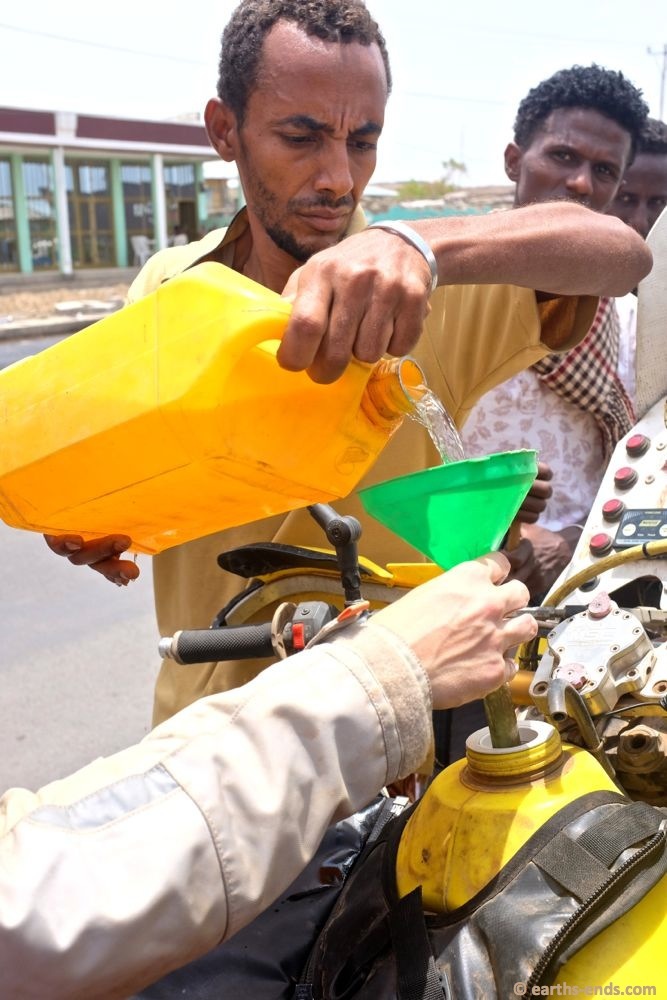
Getting our first black market fuel of the trip. We broke out our Profill in tank fuel filters. They are cheap insurance against shitty fuel as they keep grit and water from the tank. Insider tip: Ask a tuk tuk/taxi driver what the real (non foreign biker) black market price of fuel is beforehand.
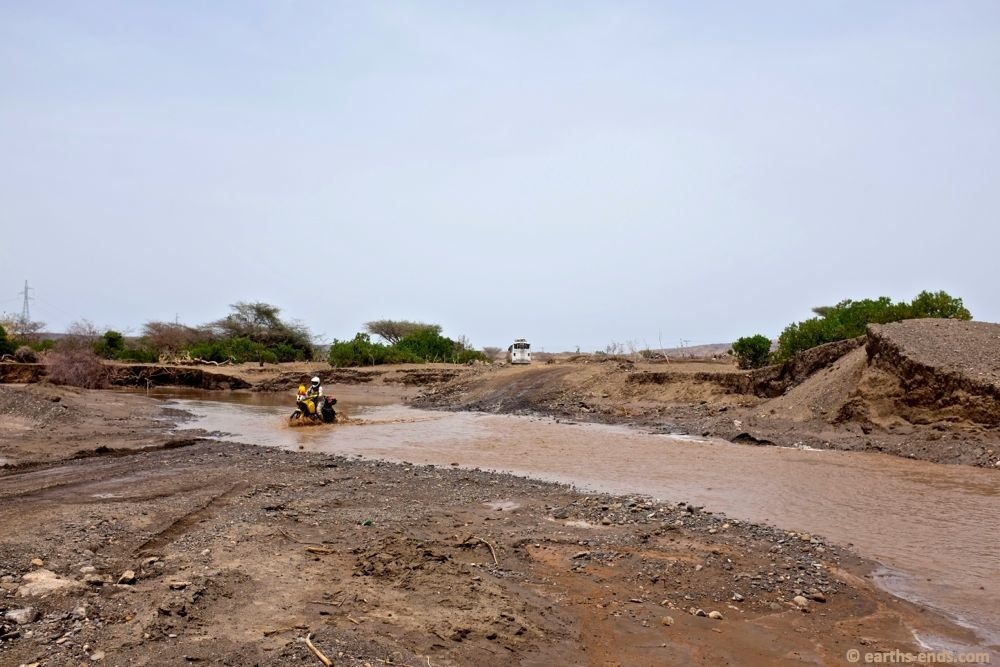
Some fun little obstacles along the route
Mille was an unattractive town as most towns that serve major trucking routes tend to be. We managed to stumble upon the only decent looking hotel getting about. It looked relatively secure and the best room in the hotel (and the whole town I imagine) was pretty good in the end and only cost about $15. The people were really friendly and the coke and beers were cold even if the night time temperature was scorching and the electricity supply intermitant.
At the hotel we got chatting with a young Chinese guy from Hunan province who was working on the ZTE (big Chinese Telcom) ETC (Ethiotel) 4G-installation project. Like a lot of Chinese in this part of Africa he spoke next to no English and none of the local language much the exasperation of his Ethiopian minders. These guys later thanked us for speaking Chinese with him over dinner as he said we were the only outsiders he has been able to speak to in about a year. They thought it made him happy to talk with us which made them happy too. Rather sweet really. We were to see a lot of large Chinese infrastructure projects while in Ethiopia and indeed the rest of our time in Africa. In a number of countries like Ethiopia and Congo, kins would see us and yell ‘China, China, China’ thinking that because we were foreign, we must be Chinese. An interesting subject for a later date.
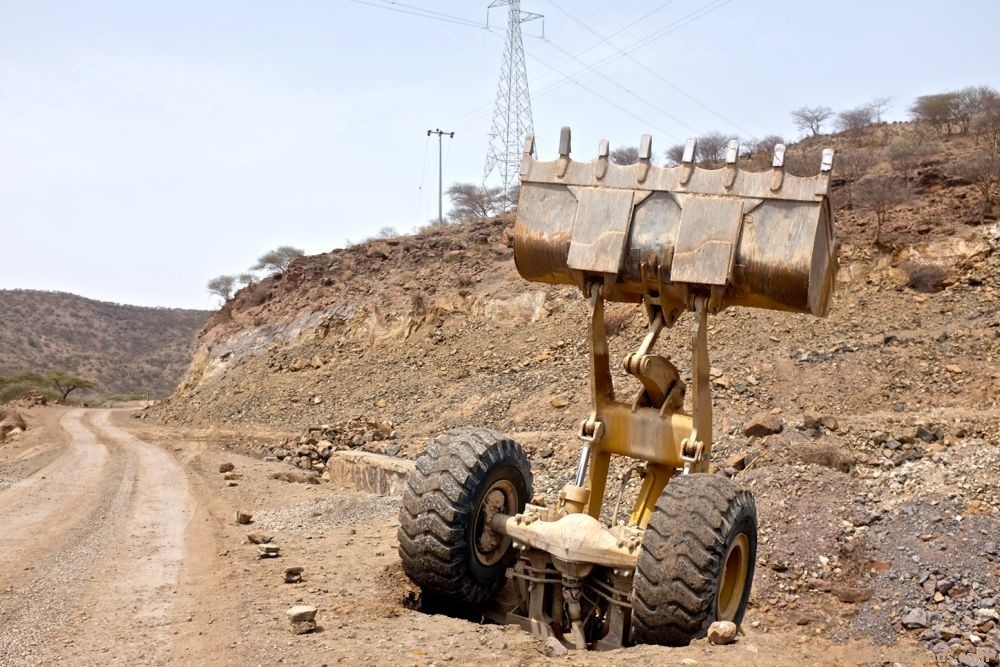
We had a better day than this front end loader driver
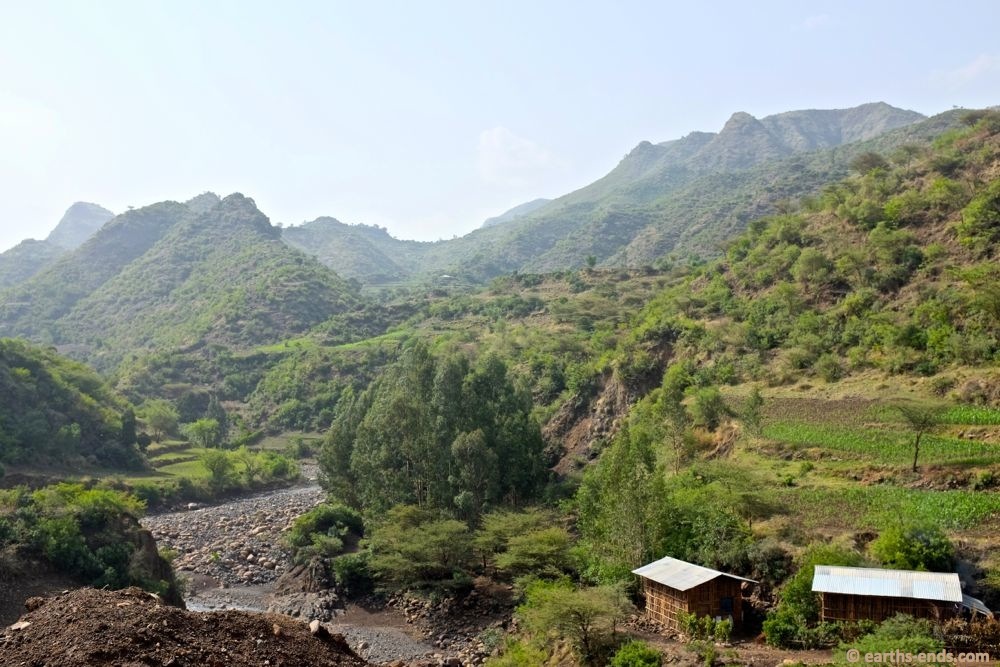
Out of the Afar region we came across more fertile scenery
After securing some reasonably priced black market fuel we took a gravel road to Dessie, once again to avoid the mayhem of the tar routes but to also link up with a gravel route from Dessie to Lalibela which we had been recommended as “one of the best roads in Ethiopia”. It was all pretty cruisy with few people around these parts except for local road builders and their Chinese supervisors, easily identifiable in their oversized straw hats. We made it to the large town of Dessie and tried a handful of petrol stations looking for fuel. There was only one station in town with fuel but the lines were like Disneyland at Christmas so we decided to get a hotel for the night, adhering to our de-motivational mantra of ‘why do today what you can put off to tomorrow?’

It was scenic to boot

Then we spent an hour and a half covering 40km. Much needed road works in the area created quagmires and traffic jams. It would have taken many hours were we not on bikes.
The next morning after downing many glorious macchiatos we went on a search for fuel. As ever there was just one station with it and everyone in town was there. After an hour of waiting in the rain we were at the head of the line… then the electricity went out, which is game over in these parts. Nothing was going to happen until it came back on and everyone just accepted that. I went to warm up with a cup of tea but couldn’t get one at a nearby café ‘no electricity’.
Everywhere else in Africa we had seen real resourcefulness in the face of lack of services like electricity or water. We’d seen establishments run commercial kitchens outdoors with a handful of charcoal and burners made of wheel rims when the electricity failed. I wanted to say ‘well light a bloody match, lets make this thing happen’ but resisted. Waiting for USAID to show up with whistling kettle really was my best bet until the power came back on. This was Africa, but not as we knew it.
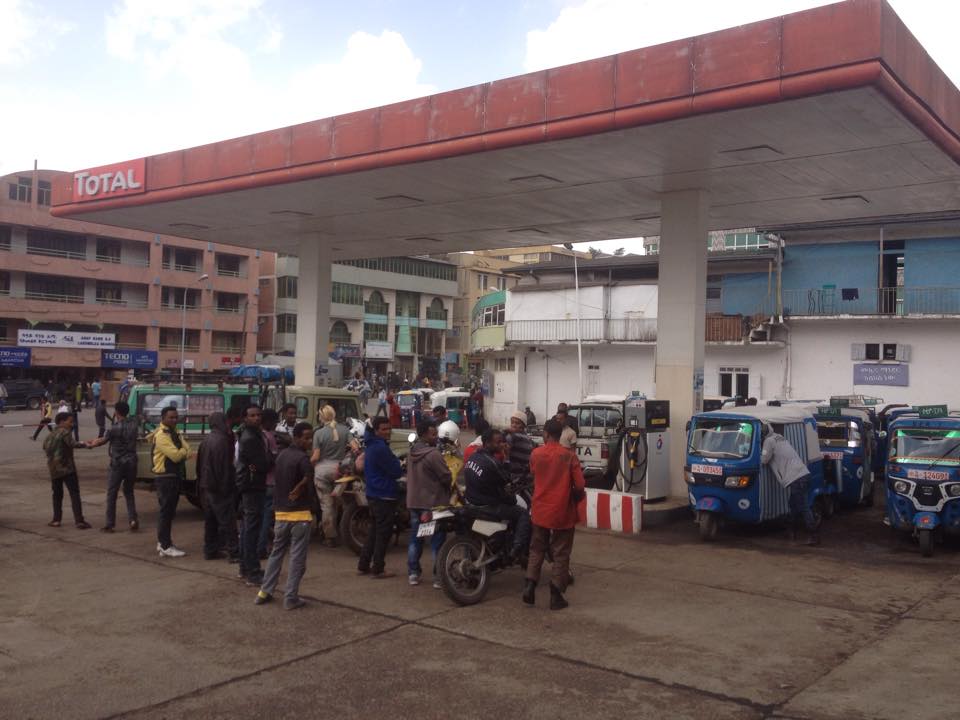
When the electricity went out most vehicles gave up their fuel hunt for the day. We had no fuel to get anywhere so had to wait.
A large part of petrol shortage is due to the black market racket. Most petrol stations in Ethiopia will have piles of 20l plastic containers, sitting at the station. Often Dad runs the petrol station and his son runs the black market fuel arm. You will have to wait until he has filled his containers before getting any in your car or bike in these instances. The biggest frustration for us was the fact Ethiopia couldn’t manage fuel supplies anywhere in the country despite the presence of logistical geniuses capable of doing so. The logistical masterminds of the chat trade could have the devil weed harvested by hand, transported from and to all the far flung regions of the country, air lifted to Kenya, Sudan, Somalia, Chad, Niger, Yemen and Central African Republic and delivered into the green, slobbering mouths of inebriated chat zombies – ALL within 12 hours. Within the first 12 hours of harvest the chat is at it most delightfully fresh and amphetamine-y, brain damage-y bestness.
Yet the powers that be couldn’t secure a reliable fuel supply even just to their nation’s capital. This issue dogged us the whole time we were in Ethiopia. Thank goodness we have 44l fuel capacity because I would have gone nuts if I had to play the fuel scavenger hunt game every day. Don’t let the World Vision ads fool you. Ethiopia has no desperate shortage of what it needs. Despite its humongous population and low GDP it should have enough to feed itself, it is just that the people in charge couldn’t organise a piss up in a brewery.
Unfortunately it had started raining heavily so when we did eventually get power and then fuel we made the decision not to take the apparently very steep and mountainous dirt road route that had been recommended to us. Whilst it was a sound decision to forgo unknown muddy mountain roads in a storm, it meant we had to deal with the drawbacks of main road travel in the region – the bored, unsupervised, rock throwing riff-raff.
We had started to get used to having rocks and miscellaneous objects thrown at us by this stage. Before arriving in Ethiopia we had heard countless tales of rock throwing and general hostility. Such stories are legion among overlanders. For our first few weeks in the country we were mostly off the beaten track and had experienced relatively few such unpleasant incidents, well compared to the stories we had heard at least. In fact, in some areas it had been pretty lovely and hospitable… for the most part. We naïvely started to believe that such complaints were perhaps cultural misunderstandings. THE FOOLS WE WERE!

The road we dubbed the ‘Highway of the Devil’s Spawn’ – A bit harsh maybe. They are obviously just bored little rat bags not actually the children of Satan but it was catchy so we went with it. This is where we experienced the vast majority of our hostilities. It wouldn’t have been as bad if we didn’t end up doing the top third of this stretch of road 3 times for various reasons.
It seems there is a distinct geographical component to the hostile rock throwing activities in Ethiopia. And at this point, around Dessie, we were at the epicenter of pre-pubescent anti-social activity in the country. It was rather incessant and after days of running the gauntlet we were over it. I would like to stress that at the beginning of all of this we ignored a heck of a lot of rocks, sticks and whips coming at us. But that kind of patience on those treacherous mountain roads can only last so long.
The following story will demonstrate that we are deep down rather shitty people but our next month in Ethiopia would go on to convince us that in this world there are only 2 types of people; shitty people, and people who have yet to travel Ethiopia on a motorbike.
As we came around a mountain bend there were two little delinquents waiting for us, weapons at the ready. Delinquent #1 was wielding a large shepherd stick and went out on to the road and swung at Mick’s head. Mick was able to swerve out of the way in time. He slowed his progress out of concern for me as we had established that the person who came second always copped the worst of it. The delinquents then executed a two-pronged attack on me. Delinquent #1 assuming the vanguard, dashed out on the road and made a homerun seeking swing at my head while Delinquent #2 did a classic flanking maneuver and launched a fist sized rock at me. Luckily they both missed. Mick by this time was undertaking counter measures by charging back on the DR to the site of the ambush. These little turds almost always possess the territorial advantage and after launching surprise attacks are generally half way down the valleys and out of sight by the time you manage a few waves of an angry fist.
Yet in the face of Mick’s counterstrike they revealed a lack of cohesion and discipline as a fighting force. Delinquent #1 made a hasty retreat down the valley ignoring the lack of cover, the high ground advantage now afforded to Mick and underestimating the capabilities of the opposing side… namely that Mick played a lot of schoolboy cricket. Mick picked up a sizable rock and unleashed an aerial strike. Mick was about 15m above him and about 50m horizontally. He managed to get within 2 meters of the bugger, giving him a well-deserved scare and he started running with renewed vigour.
Delinquent #2 in contrast adopted guerilla tactics, hiding behind a bush right below Michael, yet invisible to him. This delinquent had underestimated our technological superiority… namely that we had in-helmet communication. From my vantage point up the road I was able to tell Mick that the second little fiend was right below him. Mick, in a bit of a fury, then took a large almost bowling ball sized rock and dropped it on the bush expecting it to land near enough to him to flush him out. Instead it smashed through the bush and rolled down his back. It was a direct hit but not what we were after. The kid was fine though and I’m pretty sure he broke some land speed record running away screaming.
I was angry at Mick for the excessive, though unintentional, use of force but I couldn’t deny it felt like a rare win. And as such, our feelings cycled between a sense of victory and self-loathing for our behavior towards a couple of children. At least, we told ourselves, these little delinquents would think twice before doing the same thing again. But we would come to learn that there were plenty others of their ilk willing to take their places. Charlie was everywhere on that road we dubbed the ‘Highway of the Devil’s Spawn’. This was but a prelude.

The classic bush mechanic fix for a fuel tank leak – soap
We rode onwards through villages where we were either waved at, smiled at, yelled or cursed at, that is if they weren’t throwing or swinging things at us. We were feeling as welcome as a cold sore on date night when the rain started. Thankfully the rain sent people indoors and left us to ride the rest of the route relatively unmolested. As the sky cleared we stopped for lunch. Immediately upon doing so we smelt fuel and a lot of it. Mick’s Safari tank we discovered had a crack in it. ‘Fabulous’ we thought – actually that is not what we thought but our mums read this blog so lets just go with that.
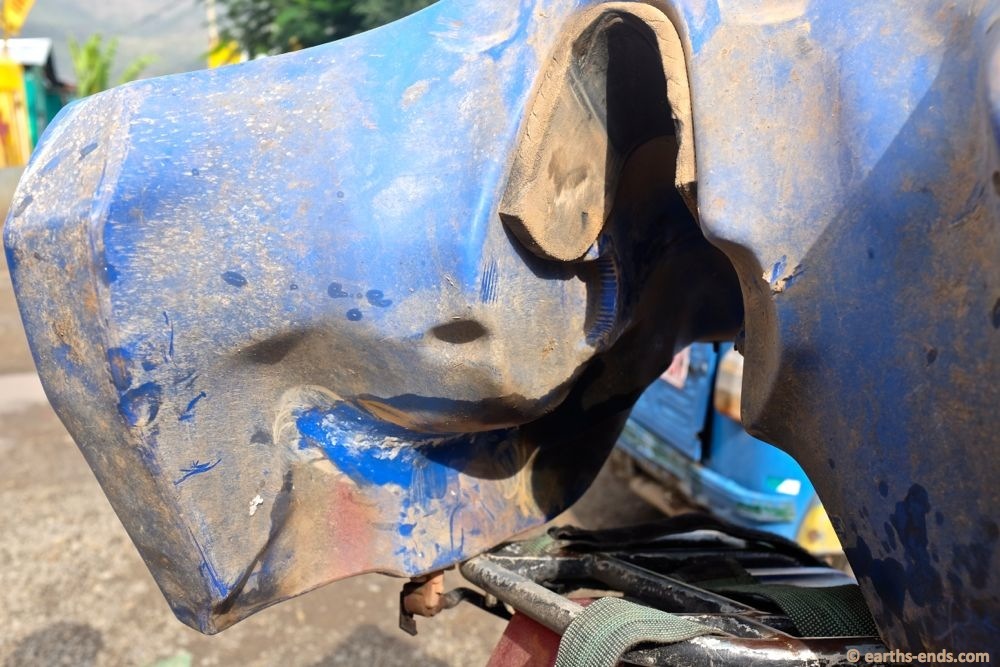
The crack was located on the right hand wing – an inconvenient spot. It was disappointing but worth noting it was an 8 year old secondhand tank. I had no doubt Mick would come up with a cunning fix for this one.
Mick took off the tank and found a fine 6cm long crack on the inside of one of the wings. Mick, in his infinite bush mechanic wisdom, took the soap from his toiletries bag and rubbed a big chunk of it along the crack to temporarily stem the fuel leakage. From there we transferred much of the fuel into the secondary tank and set about thinking of a long-term fix. Fixing, (and God forbid replacing) anything in Africa is HARD and potentially COSTLY. ‘Bugger this’ we thought…..where is our production crew to sort all this shit out for us? Ewan and Charlie had it right all along.
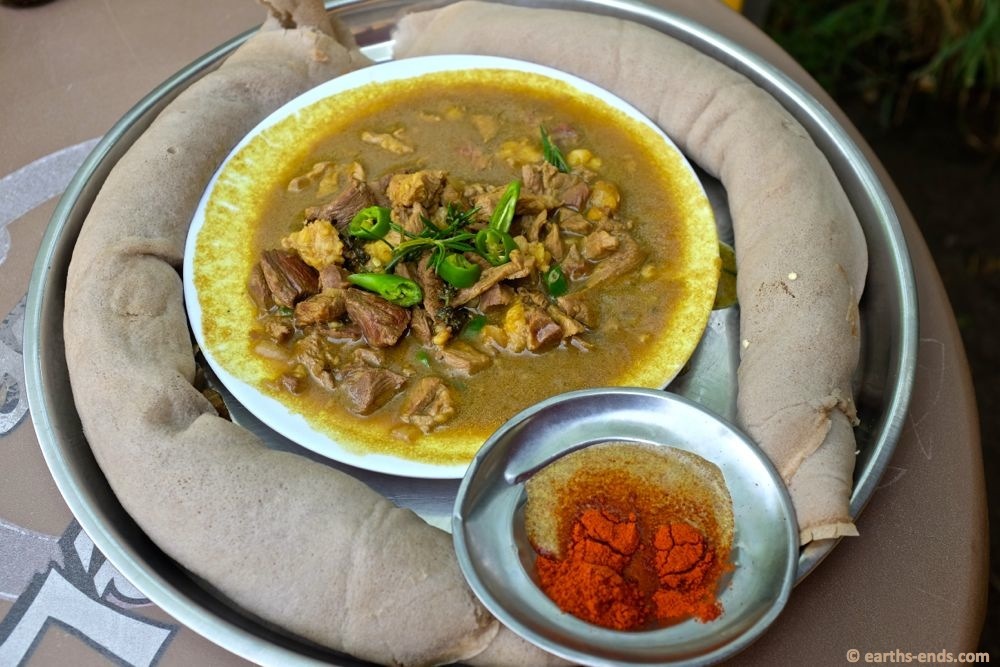
We drowned our sorrows in injera and tibs and tried to ignore the disturbing fact that there was a monkey tied up behind the kitchen.
But problems are best pondered on a full stomach and with a beer in hand. So we had lunch and ordered a St George for Mick. Once again it was tibs and injera. There was an well dressed English speaking fellow at the table nearby and upon seeing our meal told us that meat was so expensive that he could not afford it, and he suggested that we should buy him and his mate some. I politely called bullshit on him by saying the cost of the meal was 1/3 of the cost of the empty beer bottles sitting in front of them. He ordered another round by way of comment.
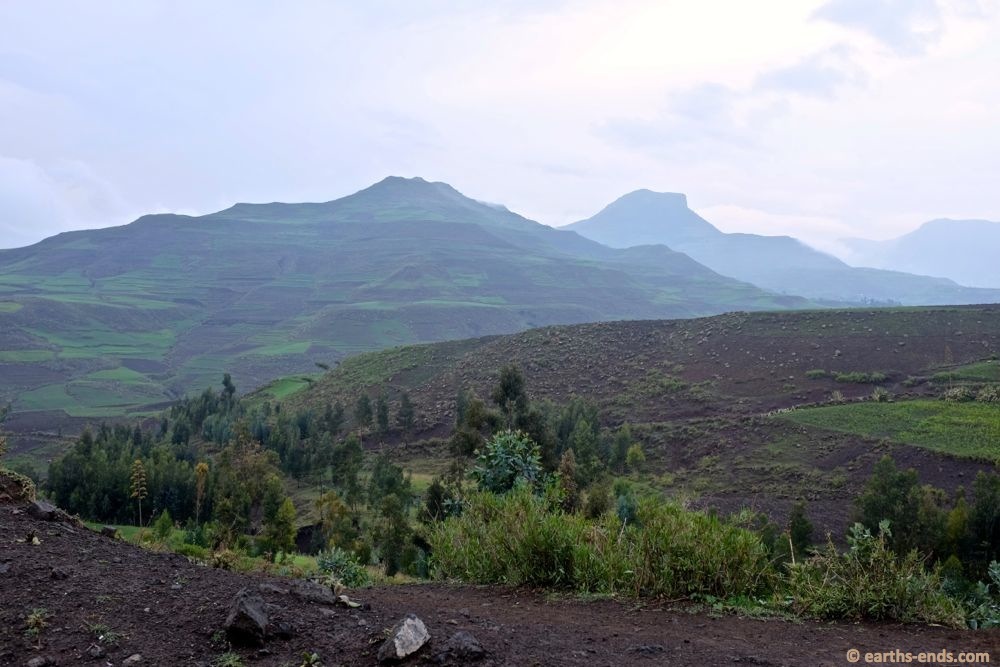
Some gorgeous scenery along the dirt road up to Lalibela. We were chasing sundown so took no other photos but this. As it was we arrived in town right on dark.
We rode through to Lalibela on some beautiful dirt roads and due to a fuel tank delay arrived right at the end of dusk. After securing a decent hotel in Lalibela we got a bit of rest before launching into a laundry list of bike maintenance tasks. We both had fork seals leaking like mad and needed to do something about it. On top of that we were due for a service. We had already sourced the necessary oil in Dessie and just needed to get some containers to collect the old oil in. It was in our search for empty plastic containers that we noticed something strange at play in lil’ ol’ Lalibela.
Over the course of the day we had stranger after stranger coming up to us offering to sell us oil. This was no coincidence. A tourist’s presence in Lalibela is highly commoditised. Your description, nationality, names (if you are silly enough to give them), wants, desires and propensity to spend are town fodder and shared around amongst Lalibela’s sizable population of touts. In our case the ‘Aussie’s with the motos at Blulal Hotel are doing an oil change’ spread like wildfire all without us leaving the hotel.
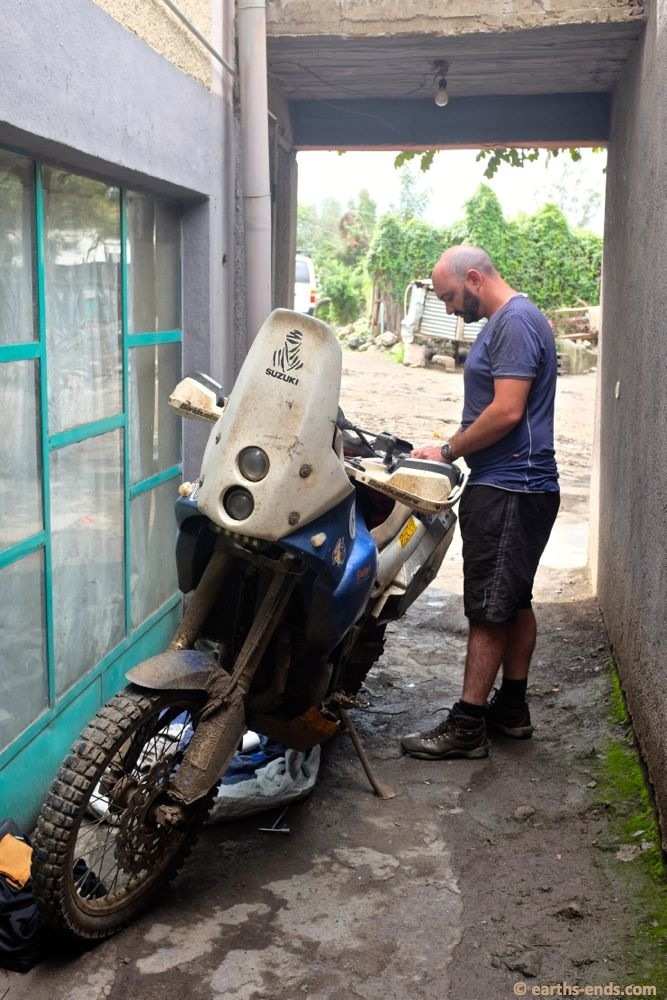
No rest for the wicked.
I saw the thing in action when I went about sourcing a 21mm socket needed to get the damping rod out of the bottom of the forks. I got a young kid to take me to a couple of the town’s mechanics. Along the way tout after tout approached him to ask where he was taking me and why. Each time I could hear him explaining exactly what I was after, where I was staying, how many of us there were and goodness knows what else. The kid was given a lot of instructions from these guys. It was suspicious as all get out. I felt like wounded prey or a prized heifer being taken to market. It made me sick. There wasn’t a whiff of genuine desire to assist. Instead it reeked of money and ill intent. This was like nothing else we had experienced in Africa with the exception of border crossings. Ethiopia (at least this part) was feeling like one giant border crossing.
We got to the garage and they had the required socket. I’d guess in any other country in Africa they would have happily lent the socket, probably even insisted on helping and expected not a thing in return. But Ethiopia had already proven itself a different beast so I expected to give him a few bucks for borrowing it for a short time. He instead wanted $US15 and that was to give it back to him within 1 hour – and it was a 15 minute walk back to the hotel. I explained I could buy 2 new ones for that price but he wouldn’t budge.
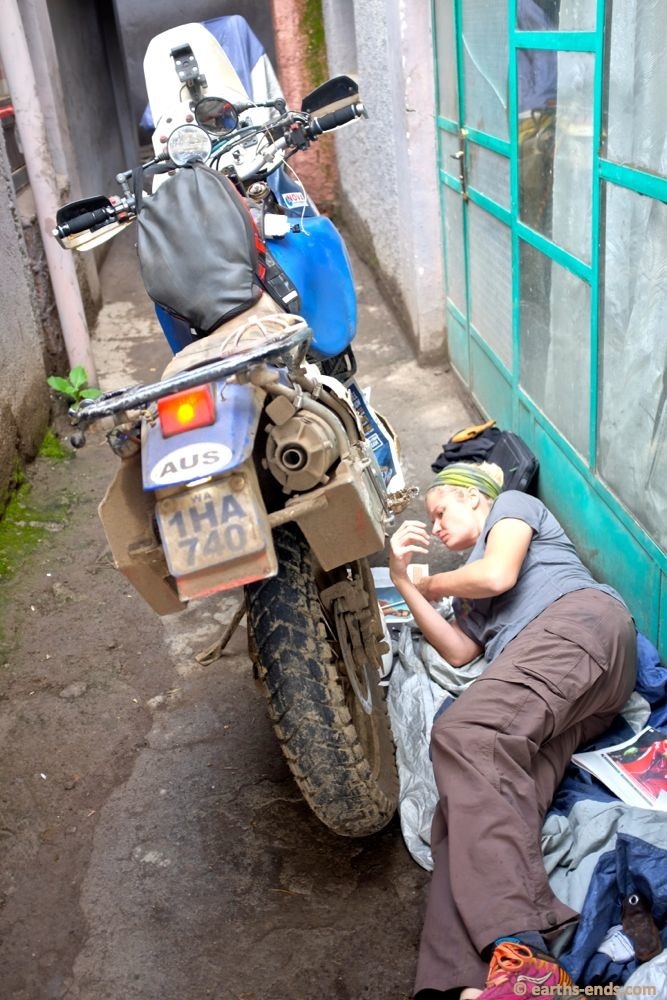
Oil change time in the stairwell of the hotel.
So, in what might have been a cutting off one’s nose to spite one’s face scenario, I returned and told Mick we would have to do a half arse fork service and hope that worked. After the oil change we cleaned the oil filters, air filters, filter skins and air boxes which were all filthy from their time in Turkana and Omo. In terms of a fork service Mick simply cleaned the forks seals, drained the old oil and replaced it with new automatic transmission fluid. Proper fork oil is hard to find in Africa and when you do… YOU PAY! So we have had to resort to ATF from time to time. We hoped that would be enough in the short term.
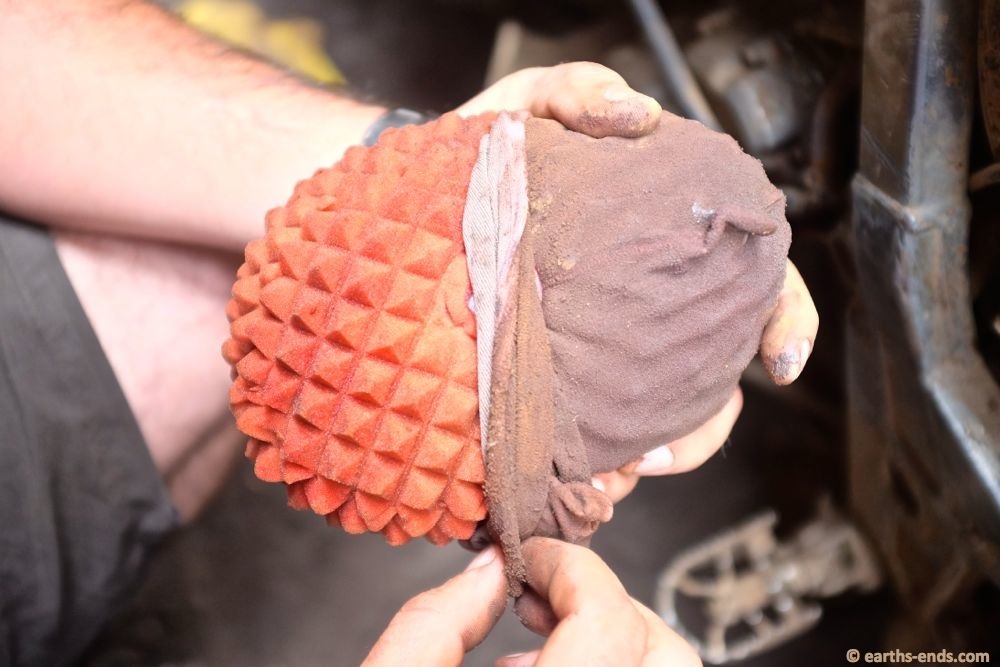
Filter skin full of Turkana and Omo dust.
The town of Lalibela was pleasant enough. There had clearly been a tourist education project going on as everyone would constantly say hello and welcome and there was no begging tolerated, which was not what we had been told or expecting. That is like going to New Zealand and hearing no talk about rugby – Twilight Zone worthy. It seemed that everyone in town was policing everyone’s conduct toward the tourists. If a shop owner saw a tourist being annoyed by touts they would step in and make sure they left. Children would get chased away if they were seen asking for things from tourists so they would do it stealthily when there were no witnesses.
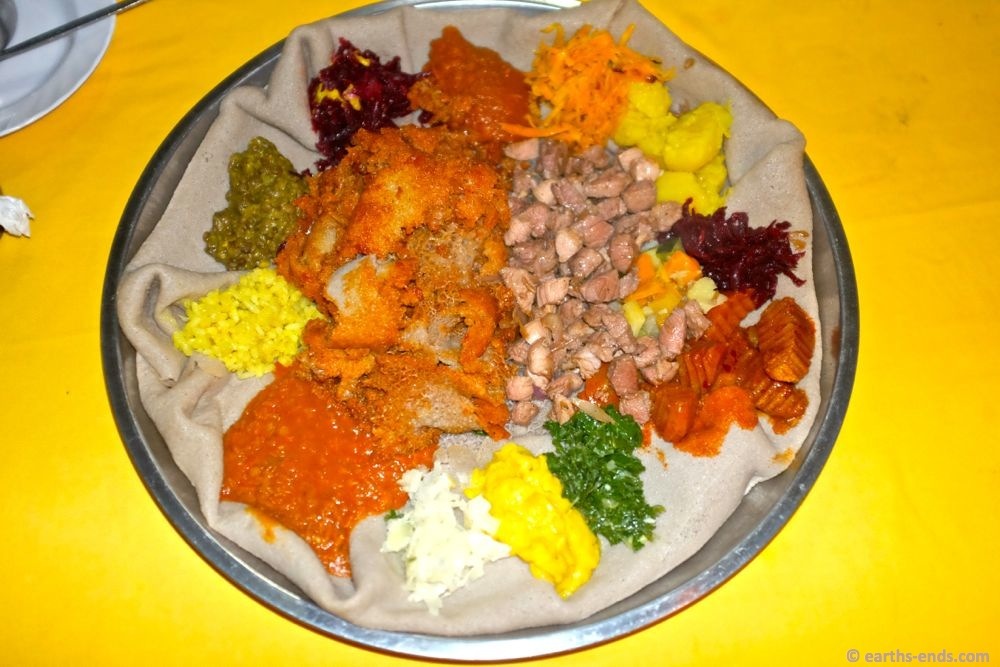
Ethiopian cuisine
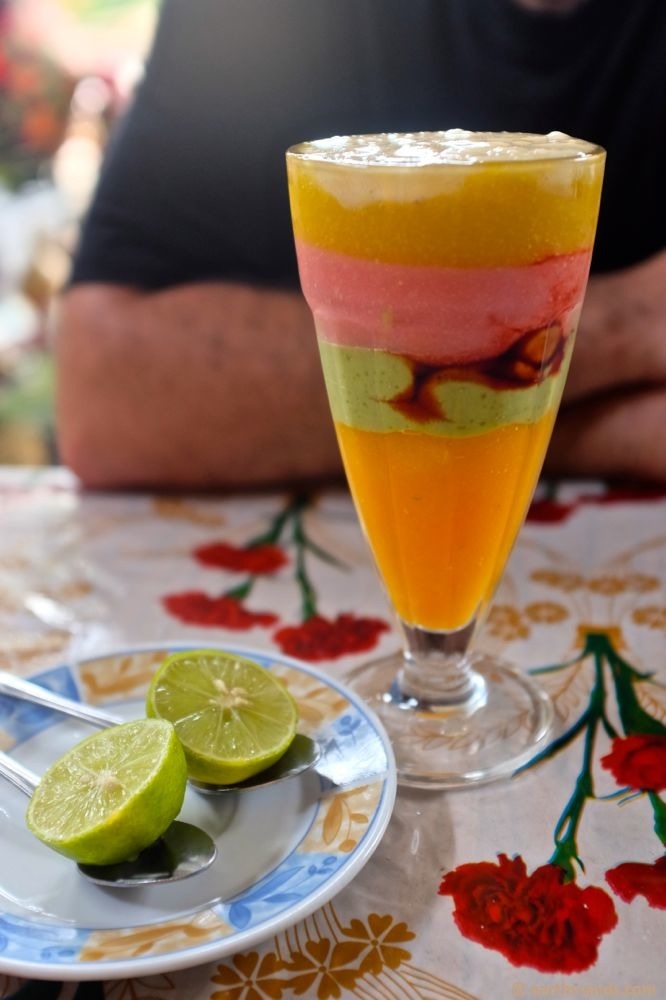
We lived on these fresh juices in Ethiopia. Most juices cost less than a dollar. A fancy one from ‘John’s Café’ in Lalibela was just over a buck.
All this activity forced the touts to be very creative and intensely responsive to the needs of tourists, all in the hope of getting tips. I was impressed and astounded at one such preemptive offer of aid when I was walking back to the hotel from dinner. I had a bit of food stuck in my tooth and had simply moved my tongue in my closed mouth to probe my gum to see if I could remove it when a kid nearby ran up to be and said ‘Do you need a toothpick?’ It blew my mind.
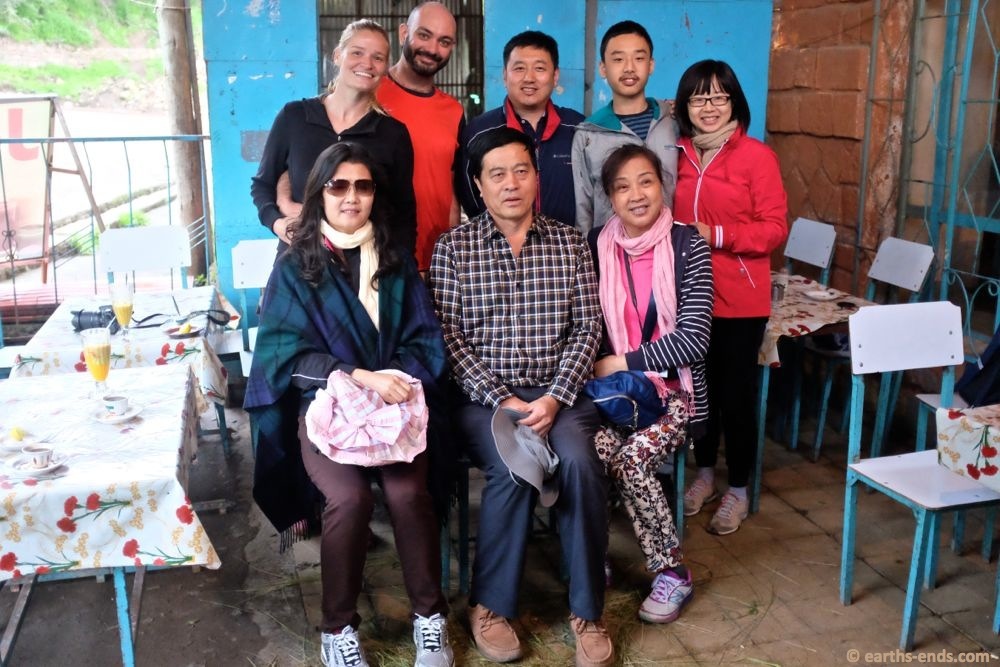
We met these Chinese tourists at the café. We found out that the guy next to Mick was a geologist like me and the man in front was a mining engineer by profession like Mick but was a boss of a coal mining company. The coal boss was a passionate traveller and Ethiopia was his 80th country. Quite unique for China. Next up he was heading to Canada to photograph snow foxes. He was a cool fella and we planned to meet up again when we went get China.
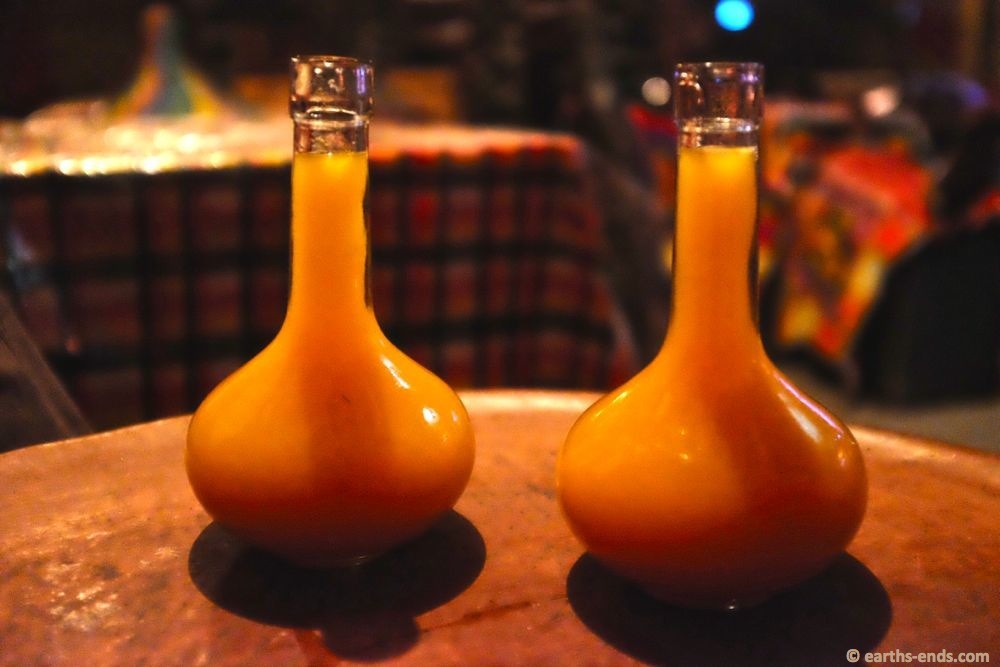
There is a popular place in Lalibela to drink honey wine. We don’t remember the name of the place but if you walk out your hotel and merely think of honey wine a local will no doubt sense this and offer to take you there.
In Lalibela they start young at working the tourists. You may be asked by a kid to help him buy a book that he needs for school. He may even take you to the bookstore to buy said book, which will be inexplicably priced at $10US. The scam is that they will get a cut of the money from the shop owner who promptly restores the book to the shelf to wait for the next no doubt well-intentioned foreign do-gooder.
There is no reason to ever give money to a child over here. Imagine the distorting affect of a child receiving a few dollars from a tourist in some flippant gesture that just so happens to be double his parents combined daily earnings. If you must, find their parents and give them the money. Just be aware, that windfall might see that kid out of school chasing foreigners at their behest from then on. You can’t not think about such things in Ethiopia. What the culture of aid has wrought on this country may prove to be more damaging than the famine (fuelled more by politics than drought) that it was bought in to relieve. But that is for another blog when I might have the energy to discuss the aid shitstorm unleashed on this country. Cat’s out of the bag … we really struggled with Ethiopia.
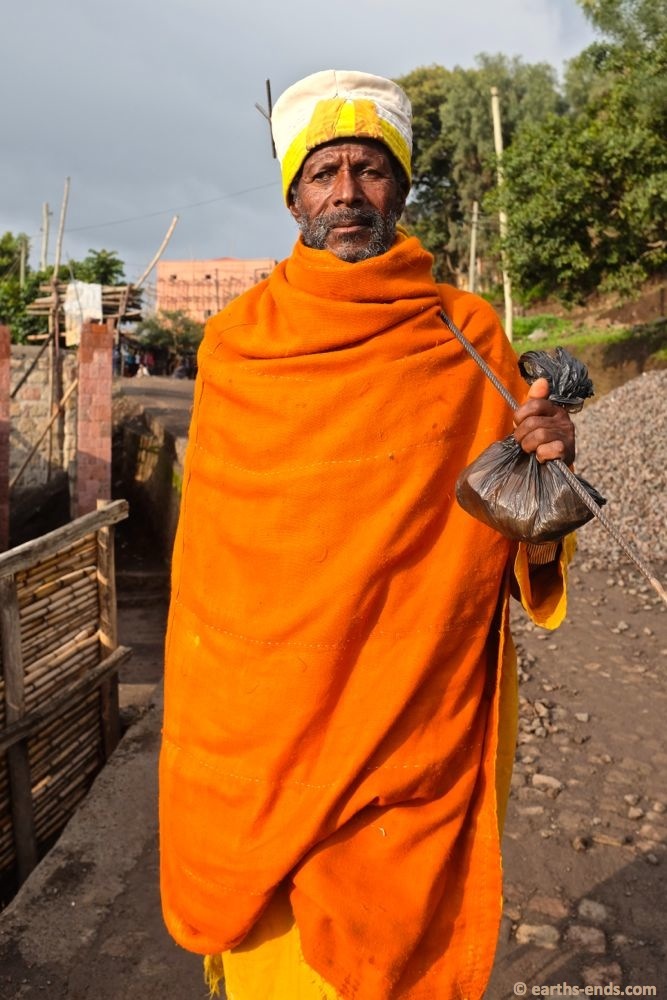
Random devotee
On the subject of shitstorms unleashed on Ethiopia, it was at this time that Mick and I formally acknowledged the undeniably detrimental affects Ethiopian cuisine was having on our guts. The last few weeks had unleashed unprecedented horrors upon our digestive tracts and injera was clearly at the heart (or should I say the arse) of it all. Injera in itself is actually sort of tasty and its sour flavour compliments the spicy Ethiopian food well. But there is something about the unfamiliar grain and/or its fermentation that was assailing us with unique and rather contradictory digestive phenomena.
Prior to a diet of injera I would not have thought one could concurrently suffer from constipation and diarrhea. However, as our experiences attested, such seemingly mutually exclusive happenings can indeed be contemporaneous. The expression ‘in fits and bursts’ seems to have been coined specifically to describe the resultant colonic contortions of an injera diet. Visits to the bathroom became fear inducing and logistically challenging to boot – when the need struck it could take quite a time… or indeed no time at all. This kind of lavatory roulette was hard to factor into our riding plans for the day. Beside the obvious unpleasantness of the experience we found ourselves discussing our hitherto private toilet activities as openly as discussing the weather. Was it persistent drought or monsoonal storms? While our conversations would have gained high praise from the average 10 year old boy, for us they were crossing a line. So it was for the sake of both romance and our gastrointestinal health that we resolved to eat no more injera.
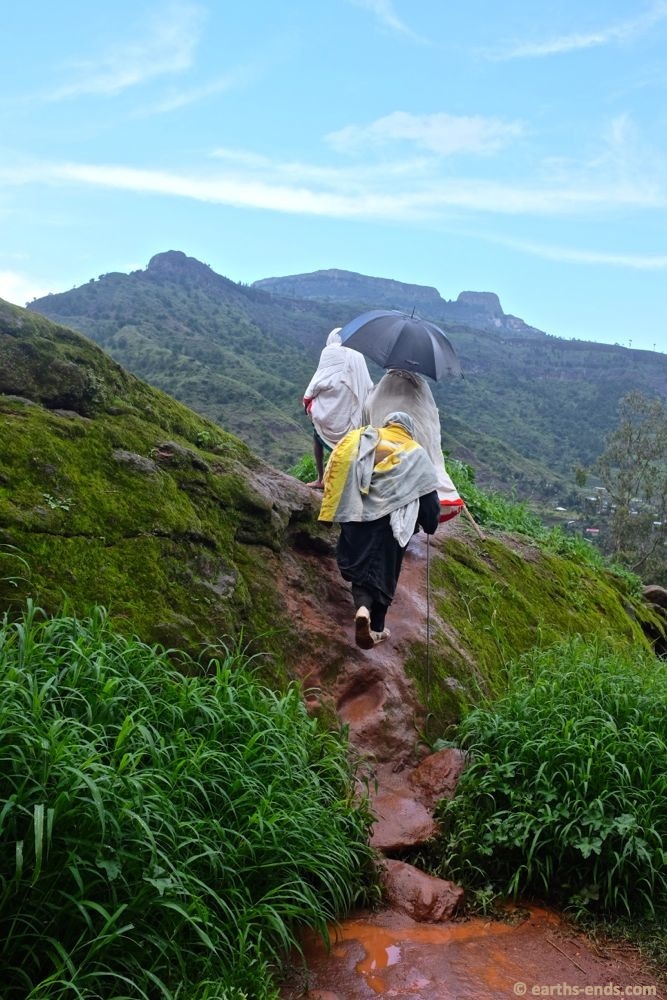
Some rather precarious tracks around the churches of Lalibela
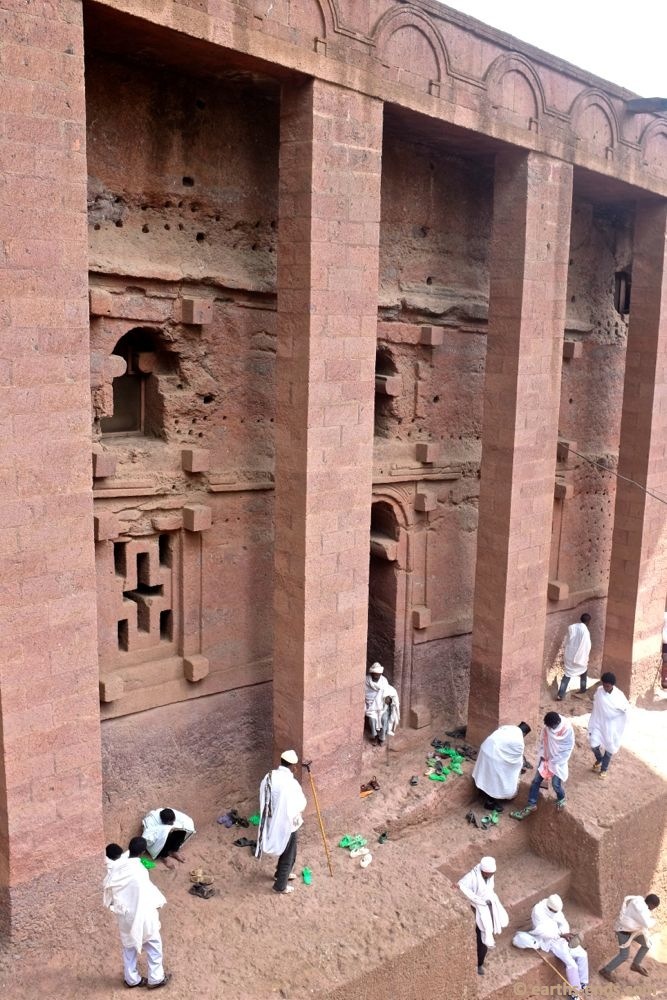
Lalibela’s 11 churches are very much functioning places of worship
And now let us move from the unholy to the holy – the rather astounding rock hewn churches of Lalibela. The rock hewn churches of Lalibela are Ethiopia’s premier tourist attraction and are astronomically expensive to visit at $US50 per person. That is some serious dosh even if the fee allows your 4 days of access. A lot of tourist skip it these days due to the price. I can understand. I was glad we did it as the churches are undoubtedly amazing and real wonders of the world. However you can’t help but feel a shortchanged in terms of infrastructure at the site. There are no signs, trail markers, no information available, not even a paper map to allow you to find your way.
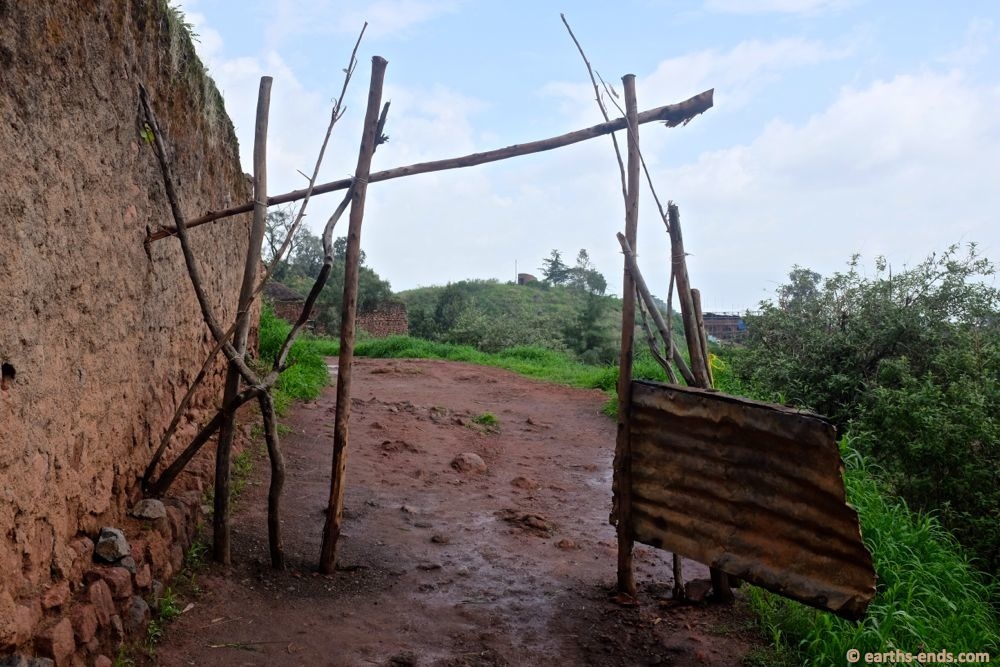
See the type of infrastructure a $US50 ticket gets you?
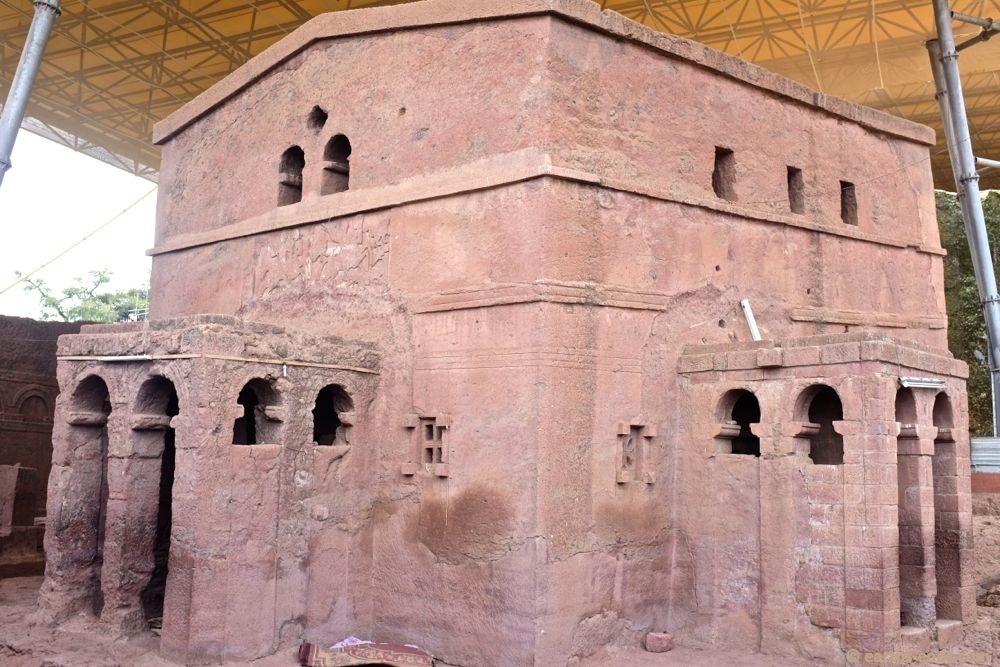
But these are certainly impressive
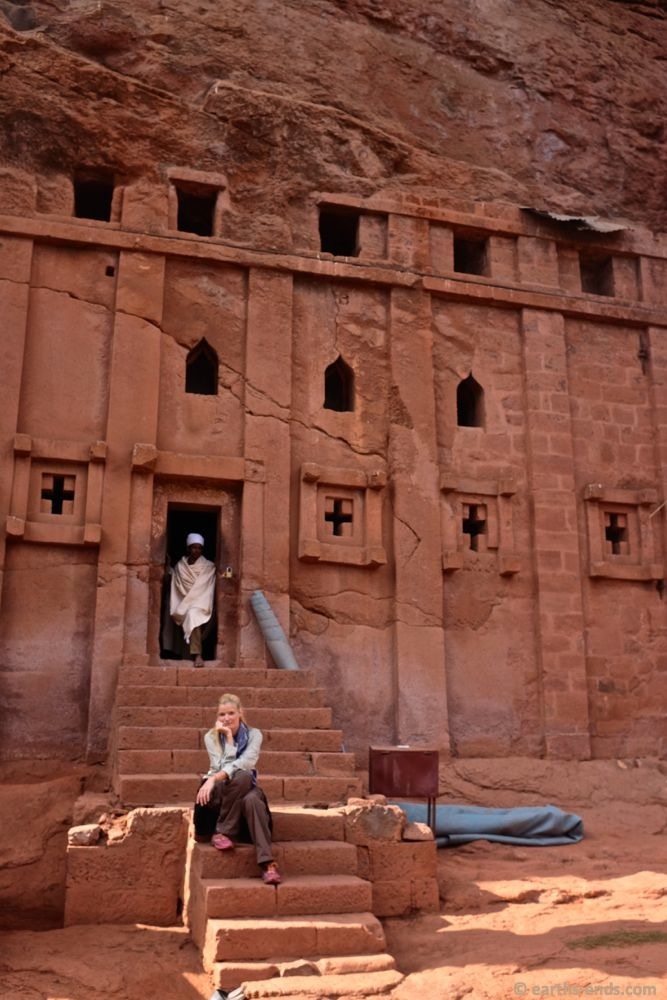
Excavated inside and out. Can you imagine the time it would take?



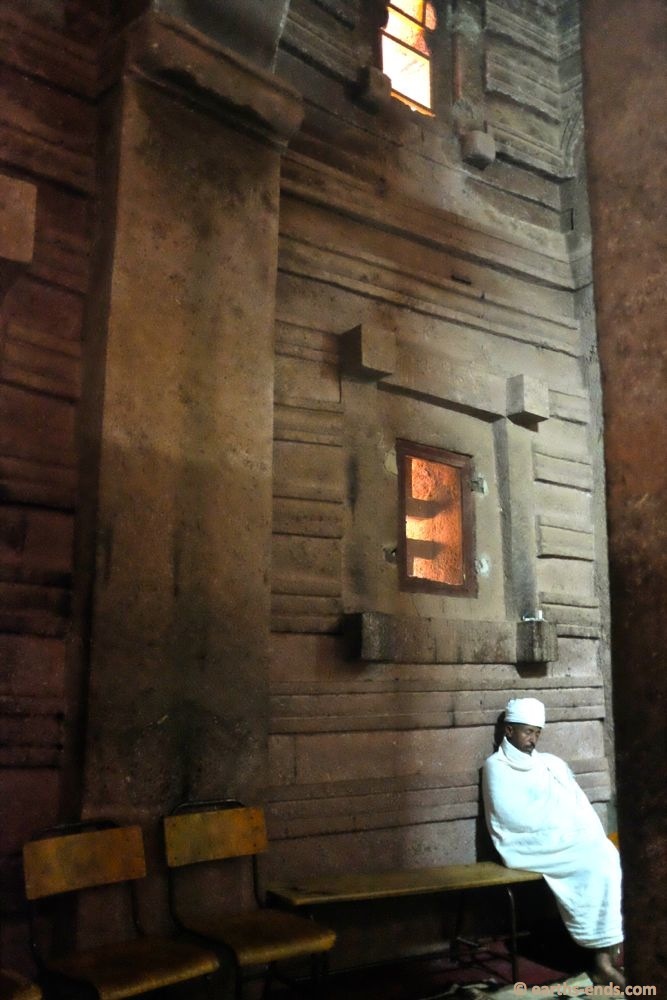
On our first day touring the churches, we figured we would go it alone and just explore, however we decided on getting a guide for the second day but we couldn’t find one would you believe it! The previous day you couldn’t swing a cat and not hit one but here we were with the cash and we found ourselves guideless. Eventually we came across a guide who obviously sensed our desperation and he quoted a “Lalibela official designated price” considerably more expensive than the many varying “Lalibela official designated prices” previously quoted to us. It all seemed too hard by that point so we just opted to go it alone again and consult Google later.
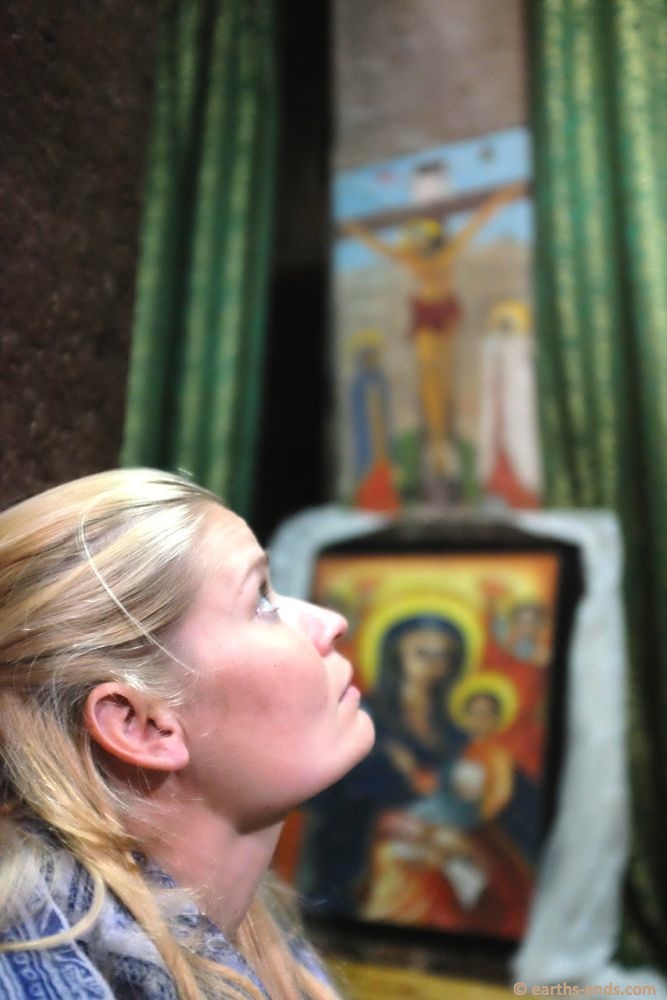
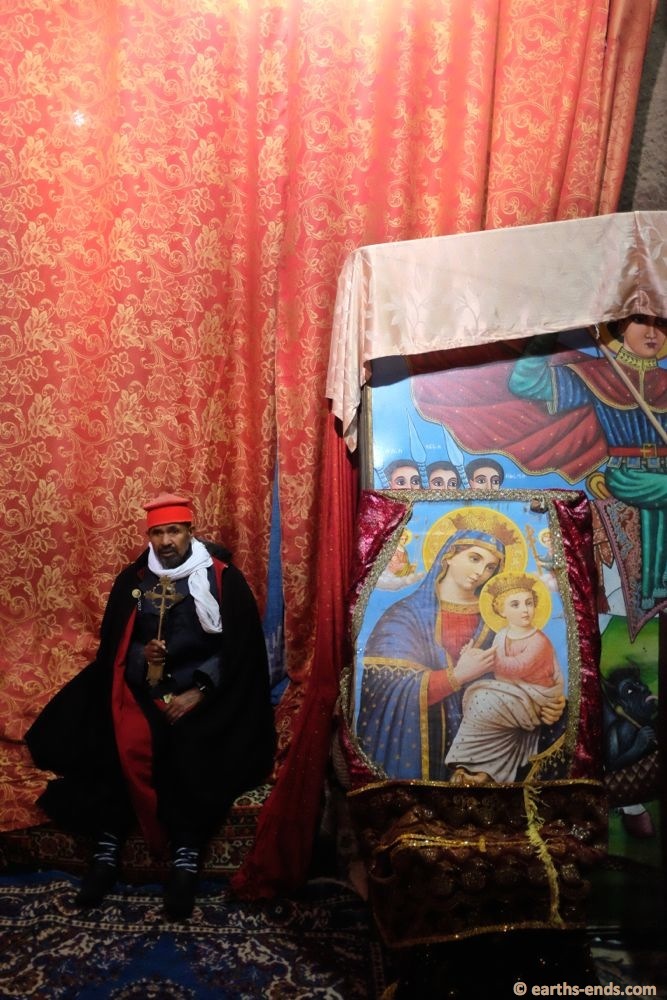
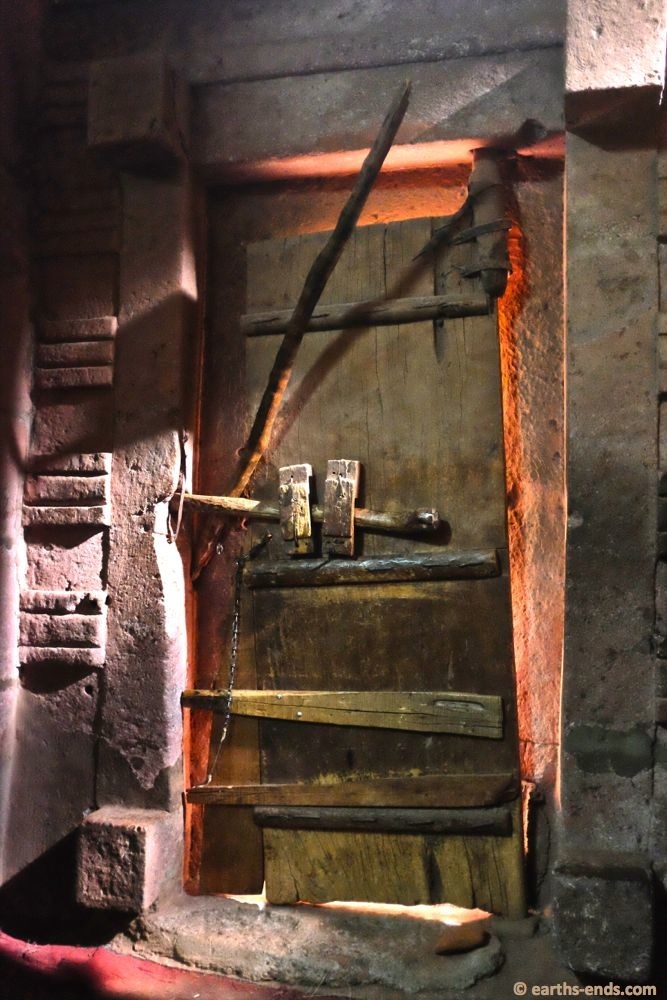

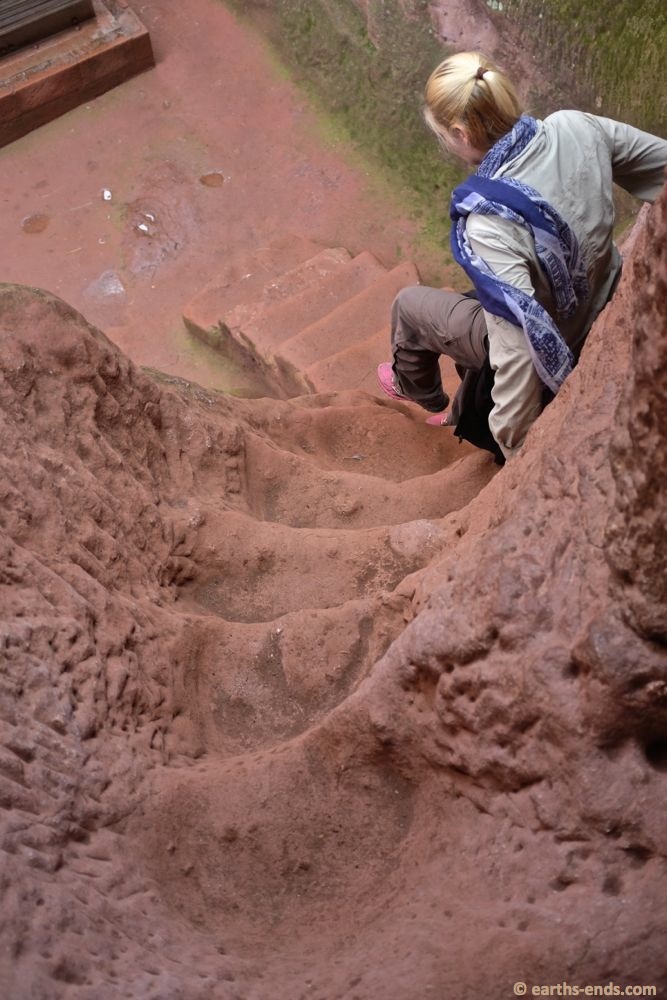
The town of Lalibela was originally named Roha but was renamed in honour of the 12th century King Lalibela. King Lalibela aimed to create a new Jerusalem for those unable to make the pilgrimage to the scared city of Axum further north. The churches of Lalibela were constructed by the king in order to secure the support of powerful Ethiopian church in the face of his rivals’ increasing power bases. Clever ploy. They are none too sure of the precise age of the church but most agree they were built around the 12th and 13th century.
The churches were excavated rather then constructed by cutting out a trench on all sides of the rock then chiseling out the interior. A time consuming process that also left them with excess piles of conveniently fist sized rock. With nothing else to do with the excess rock, the practice of throwing them at tourists soon developed and persists to this day.
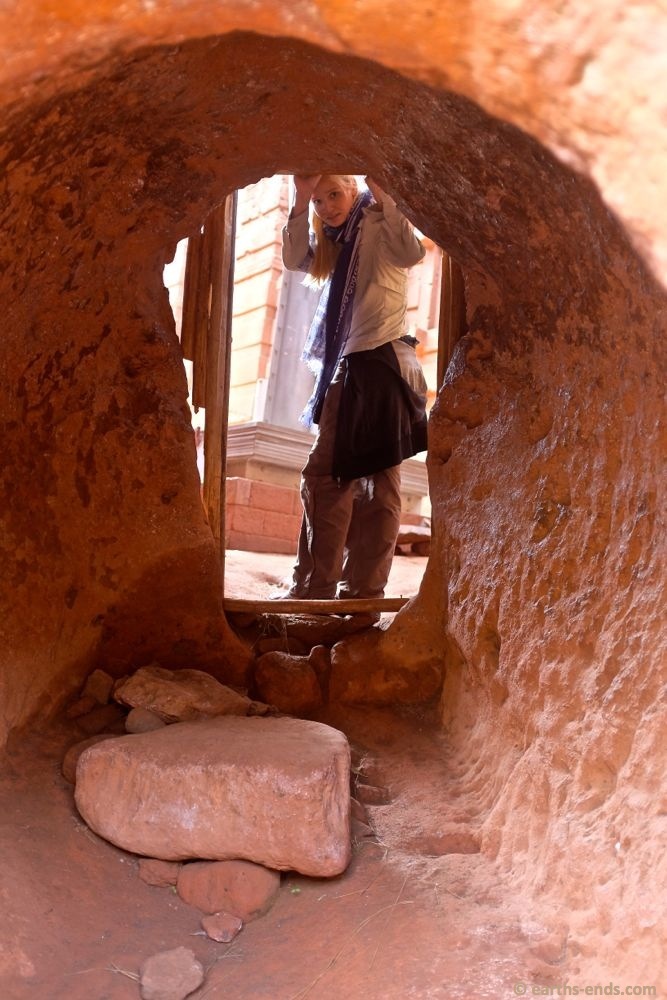
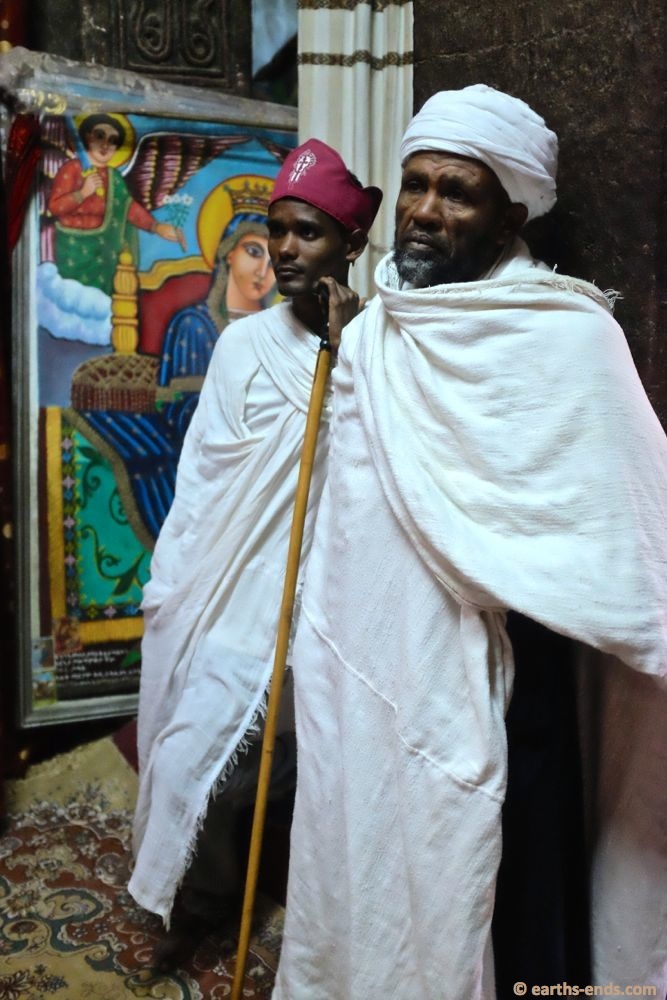
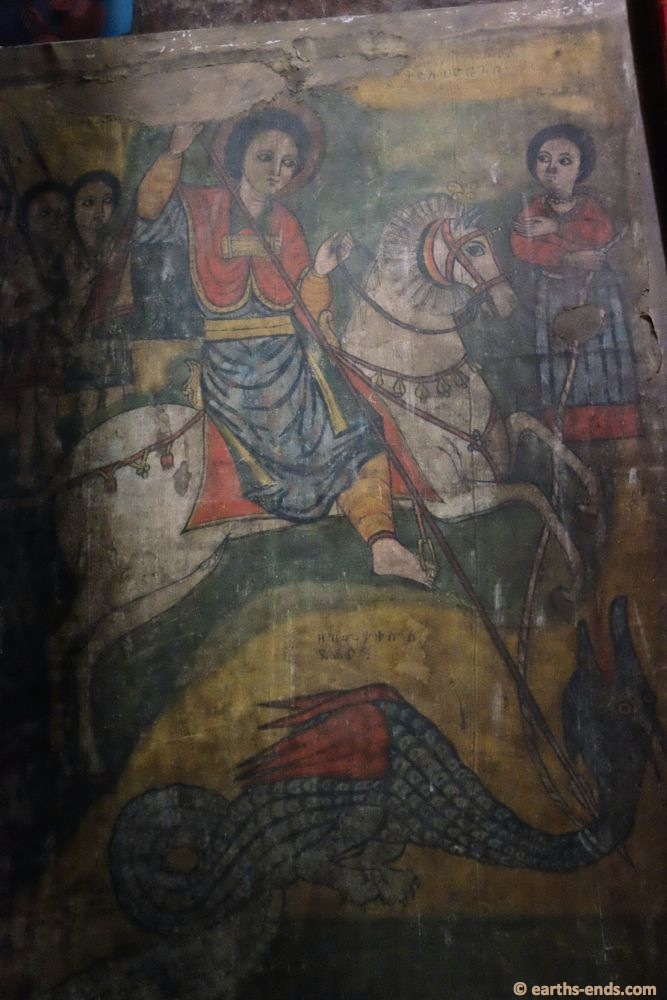
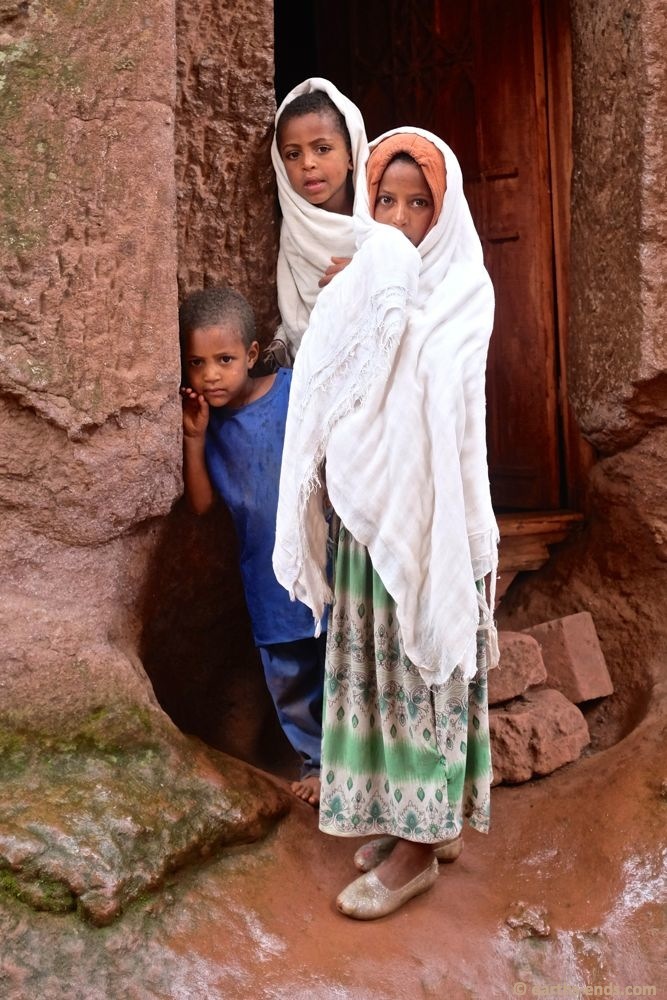
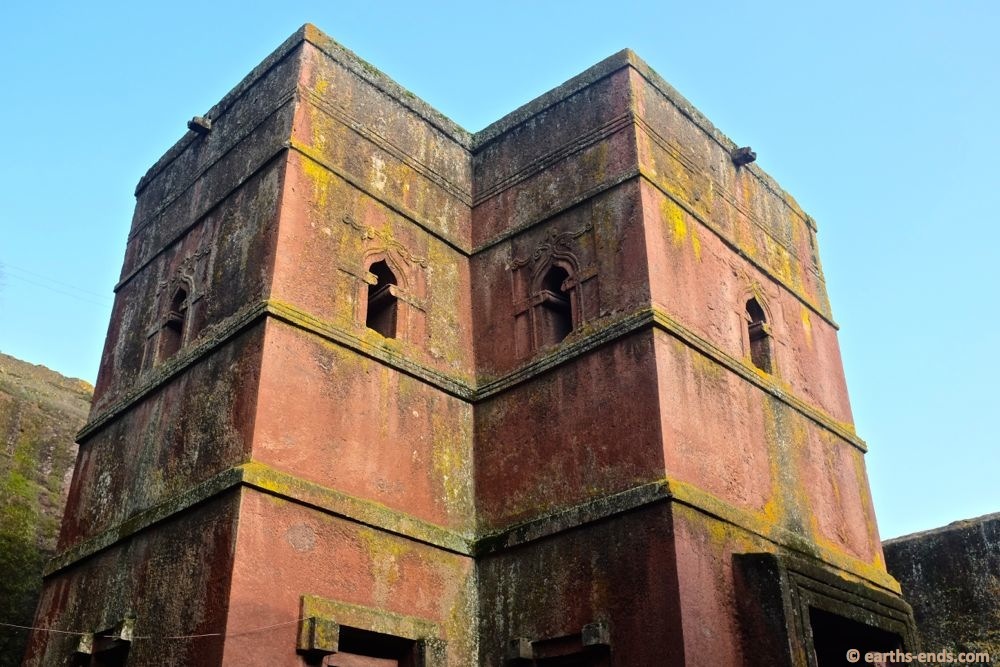
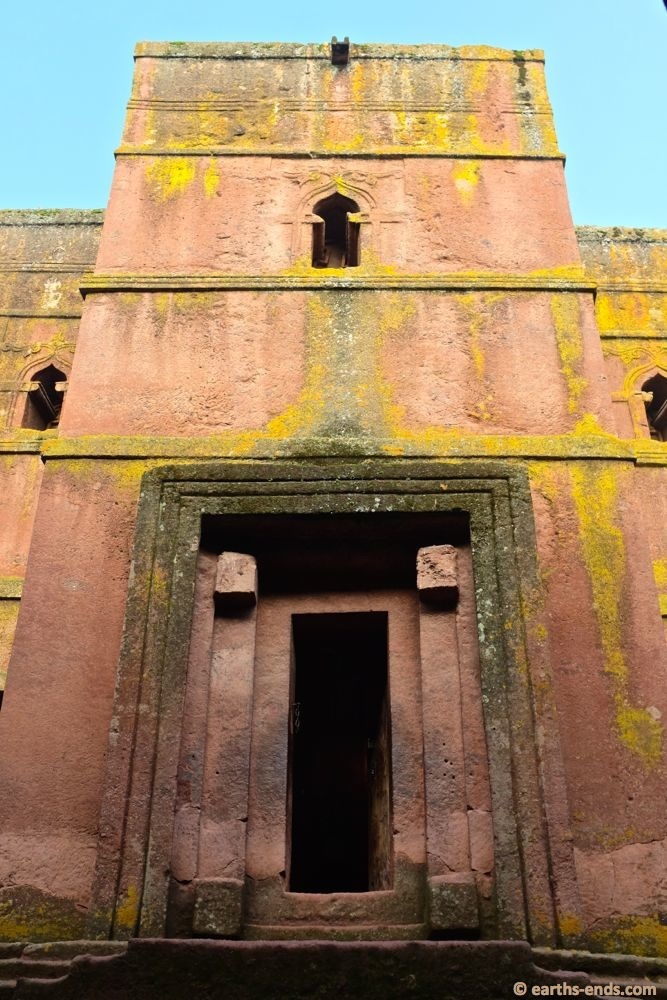
We initially intended to use our time in Ethiopia efficiently (i.e. not gallivant all over the countryside on random explorations) however a pressing bureaucratic requirement had us back tracking all the way to Addis Ababa. When we entered the country we were given a customs certificate where they had us write the details of our bikes and electronics and then told us we could have those items in the country for a month… never minding that we had a 90 day visa and a carnet for our bikes, which in most countries is valid for a year.
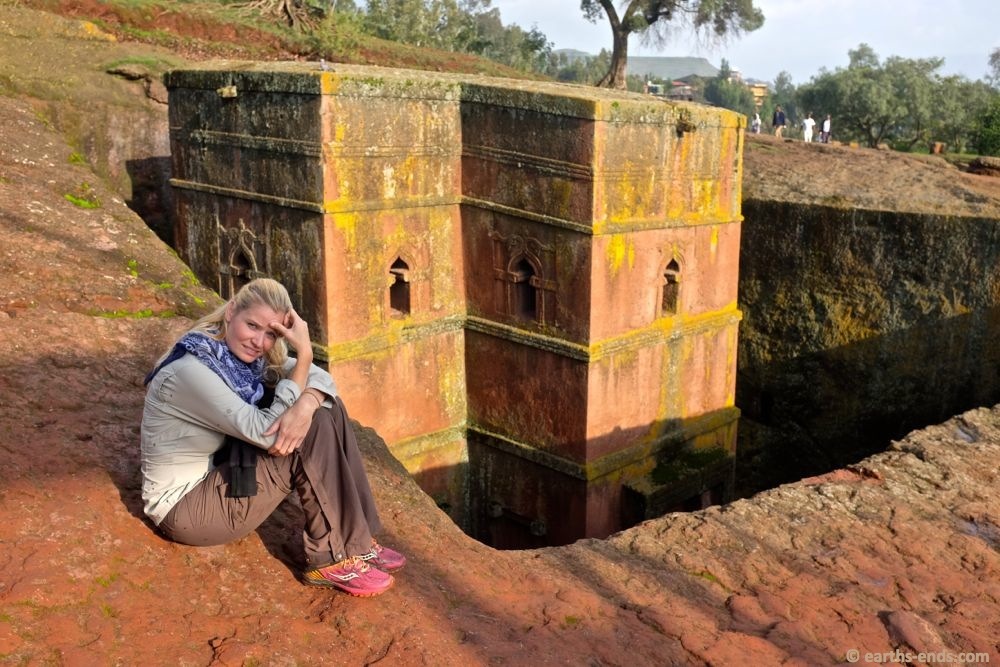
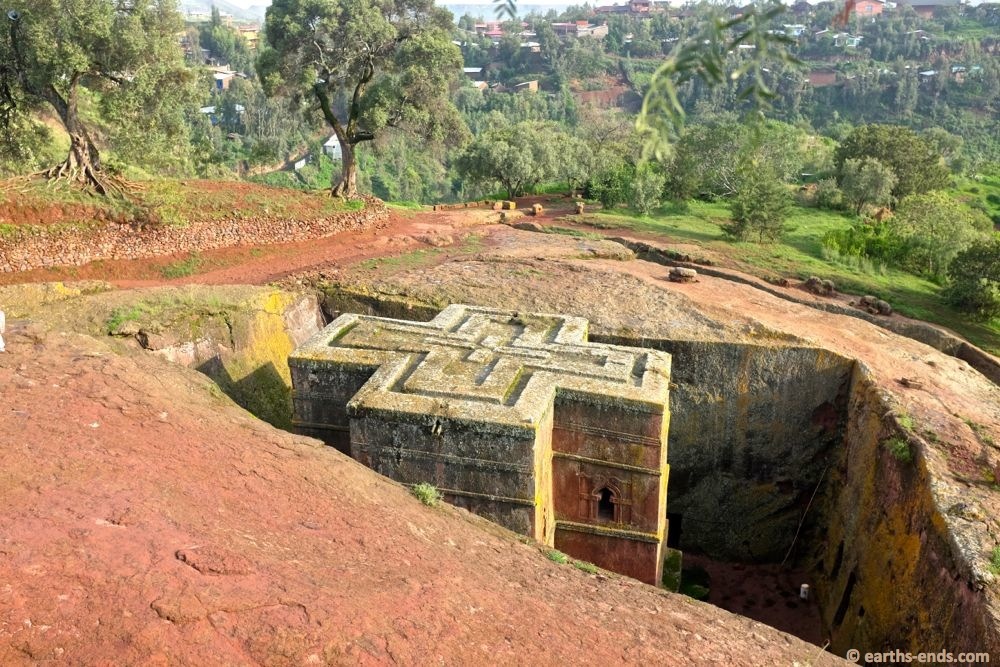
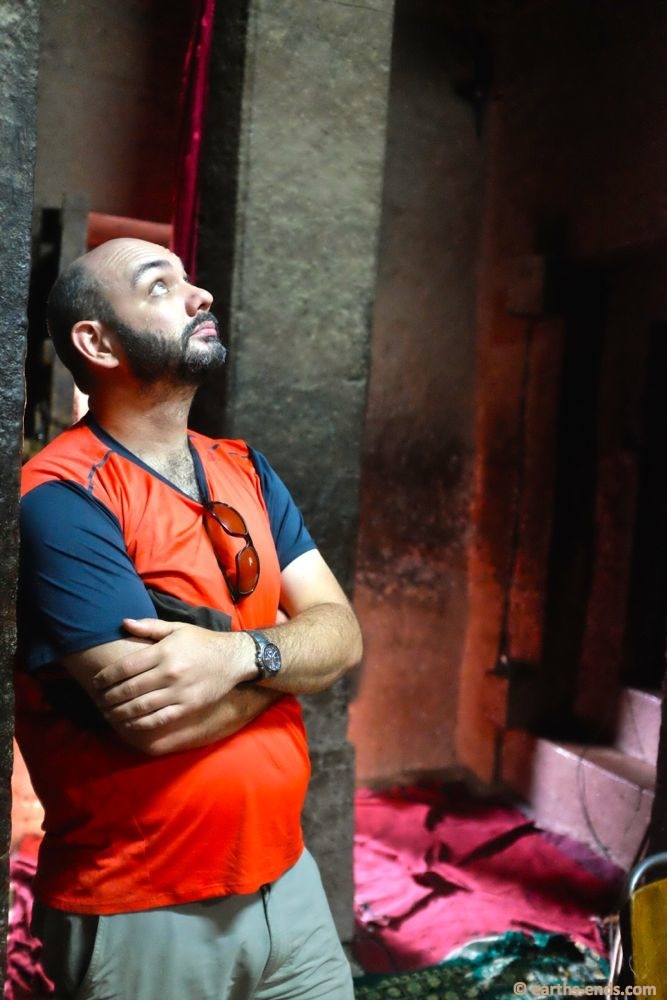

We were far too exhausted when we entered the country to think too much of the implications of the weird little piece of paper. Our friend Caleb looked into the issue for us, and contacted his mate Flavio. Flavio is an Italian born in Ethiopia who runs a motorcycle tour company, which gives him the second most challenging job in the world behind Donald Trump’s PR manager. Flavio told us we should sort this issue out ‘pronto’. Based on new government officiousness he thought we stood a chance of having our bikes confiscated or at least having our exit complicated. To be on the safe side, it was either leave the country earlier than we’d like or extend the customs certificate. Flavio told us how a client had stored a foreign motorcycle for an extended period with him. The authorities went on to confiscate the bike from him for keeping it in the country outside of the permitted time period.
Ethiopia had taken my patience, humanity and gastrointestinal health, I would not let it take my DR too. We would just have to get the certificate extended with the necessary authorities in the capital. And so it was, with fear in our hearts, and no small sense of foreboding, that we set off once more into the Hellmouth and along the Highway of the Devil’s Spawn. Negative expectations were not only met but exceeded.

Blog 47 by Mick: Navel Gazing in Harar
The ride from Jinka to Harar had exacted its toll, so it was a late start the next morning. We had ridden over 1500kms in the last five days and over two thirds of it was gravel or off-road of some description. We were in need of a cruisy breakfast with a few coffees and a day off. We had a rest day planned for exploring Harar, an ancient walled city and UNESCO world heritage site and, according to them at least, one of Islam’s 4 holy cities after Mecca, Medina and Jerusalem. On review that last point seems up for debate, however not here it wont be. I’ll leave that to the die-hards.

Solomon the rasta and Tan in the old city with its cobbles and colourfully painted walls.
Our hotel was a little out of town so it was a bit of a walk down to the interesting part of Harar – the ancient bit inside the old fortifying walls. It was there where we were approached by a Ras Tafari who spoke good English. That might sound a little strange, but Ras Tafari’s are a well-known minority group within Ethiopian society and are indigenous, originally coming from the Ethiopian town of Shashemene. So they can be seen here and there. The last Ethiopian emperor, Haile Selassie, was a ‘Rasta’. What we think of a ‘Rasta;’ the unemployed guy in a cloud of weed smoke yelling “wazzup!” is a relatively new sub-culture. They do share the same sweet ‘fros though.

This wall is at least a little colourful. Being an Islamic city, green is a popular colour.

Kawasaki fan playing with his half bike… That’s realism when even the toys snap in half! Broom broom!
Solomon the Rasta was a tour guide, obviously, but had enough experience with foreigners that he wasn’t pushy or rude and offered us what seemed like a fair price for an afternoon tour of the walled city, so we accepted. The tour was worthwhile in the end as Harar is a warren of unmarked alleyways, which to explore on our own would have been quite confusing and not at all efficient.

One Harar’s 82 mosques that are inside the city walls

More walls. More paint.
Harar is majority Muslim, about 90%, and has 82 mosques and many shrines as well. It was an important trading town between the old kingdom of Abyssinia (now Ethiopia) and the Arab kingdoms across the Red Sea. But what makes it famous nowadays is the historic Harari architecture, colourful painting of the alleyways and the coffee, which is native to this region and where the whole phenomena originated. Bless them Hararis I say!

Tan and Solomon havin’ a chat.

2 of Harar’s kids; all the children were keen on a photo and none asked for money for the photo.
While on the tour we were mobbed by little kids screaming “You! You! You!” and we heard more than our fair share of “Money! Money! Money!” as well. Solomon seemed quite aware that this was an affront and went on to explain that these kids did not understand the meaning of what they were saying and just yelled it because they knew they were English words. I think he might have been a little generous; I’d hazard a guess they know exactly what “money” means, but we understood his sentiment nonetheless.

This is one of the reasons why its UNESCO World Heritage listed this place.

Kids outside another mosque.

Inside the home of the mullah.
Which got us thinking about our experience in Ethiopia since leaving Omo a week previous. We had been a little worried about what our time in Ethiopia might have in store for us due to the sheer amount of negative stories circulating about hostility towards foreigners. As a result, easily the most common questions you will hear an overlander get asked after they announce they travelled Ethiopia are “How did you find it? Did you get many rocks thrown at you? How was the begging?”

Kids happy

Kids fighting

Kids happy again
So over dinner we got to thinking whether Ethiopia was really all that bad, or maybe just a few over-told stories blown entirely out of proportion with some cultural misunderstanding thrown into the mix? But even with the glass-half-full optimism that would see a cracked and filthy cup with a few drops of grotty water in the bottom as “the holy grail containing the elixir of life”, the bare facts weren’t pretty. In our 37,000kms in Africa before entering Ethiopia, we had 2 experiences of hostility aimed at us while riding; a kid threw a stick in Lesotho and another threw a stone in Namibia. That’s 18,500km per incident; which we would say are pretty decent odds.

There are 5 gates into the old city, and then a number of “Hyena Gates”, who were allowed to enter at night to clean up all the rubbish left behind. I asked Solomon if this was maybe a little dangerous? “No not at all” he replied. No one has been attacked? “No no-one”. Not even children? “Ahhh… … … … yeah a few children”. Were they killed? “Ahhh… … … … yeah… … they were killed”.

Donkeys left on the outside of the city. The parents have gone to shop and the kids get the ultra thrilling job of watching them! Ahh joy. No wonder they throw rocks at tourists.

A vampire was recently killed behind this door.
In the 1,800kms we had now done in Ethiopia, we had; a kid throw a rock at us in Jinka; after Herero a kid used a mirror to reflect the sun in our eyes as we rode by, and it wasn’t just a little hand held thing either it was a mirror that you would mount on a bathroom wall about the size of a A3 sheet of paper (and reflected a heap of light! It was like a good welding flash!); near Negele Boreno we had a soccer ball kicked at us as we rode by; another kid through a rock at each of us after the canyons north of Sheik Hussein; and 2 separate incidents of adults running out on the road screaming and grabbing at the bikes as we rode by (and that’s excluding the regular people running onto the road to stare and shout and scream at us). That’s 300km per incident, which is about 62 times worse than the rest of Africa. And statistics, as 83.8% of Internet users unequivocally know, do not lie.

Corner stores in the old city are just a grill into someone’s house. This is Harar’s equivalent of a 7/11

This is one of Harar’s many Muslim shrines. It is a shrine to a young and unmarried couple who missed Friday prayers to go and get jiggy. Allah it seems was not impressed with the missing of prayers, especially for a casual shag, and the couple where never seen again. The large green dome is the shrine to the man, and the hole in the shrine is for his spirit to enter and exit.

The shrine to the lady is that small mound not much bigger than that rubbish bottle on the side of the alley. When Solomon told us this story, he finished by looking at Tanya with a “Sorry”.
However, we refused to take off our rose coloured glasses. Why was Ethiopia like this? We considered our experiences to date and racked our brains to try and understand. Were these acts really hostility aimed at us or just a manifestation of some unknown cultural aspect? In Ethiopia to date, we had met many happy and friendly people that were excited to see us, and also quite a few rude and horrid people that would rather see us come to harm. How could one receive such friendliness in one instance and such hostility in another? It seemed so duplicitous.

Many kids in Harar and all keen on a photo.

We went to a Harari house to check out the traditional architecture

And meet the family. 3 generations of traditional Hararis.
We had already seen a definite culture of petty violence, as we have previously discussed. After a bit of reflection, this seemed to us to be borne from pastoralism combined with a very dense population, probably amongst a few other legacy issues. Every kid grows up a shepherd, it’s the first job given to children old enough to be independent (maybe 7 years old), and the primary tools of a shepherd are the whip, stick and rock. Kids throw rocks and swing sticks and crack whips at animals day after day, and kids being kids, each other as well. They are unsupervised and I’d assume quite unstimulated from minimal schooling and boring animal tending chores (watching donkeys stand around all day looking dull can’t be fun) so I guess it is understandable that a bit of delinquency develops. And for the adults; I suppose it’s quite plausible that these traits continue to a certain extent from childhood? Although to be fair the hostility we had received had come overwhelmingly from children and adolescents.

Of course the tour finished with a visit to a gimmick shop. We didn’t feel compelled to buy anything, even though some of it was interesting.

Some knives. Solomon told us that Hararis love knives…

What do you do in a city with no plumbing? Everyone takes containers to a communal water tank to get their days water.
And the sheer density of populace surely adds to the issue. Generally speaking, in our travels we have found people in cities are not as hospitable as people in the tiny villages, and the bigger the city the less hospitable it gets. It’s a human condition that we crave the presence of others when we are alone; yet turn a bit feral when surrounded. And in Ethiopia, you are always surrounded. The current population of Ethiopia is over 100 million and with a fertility rate of 5.8 children per woman, it is doubling every 20-25 years. When the famines that shot Ethiopia to worldwide notoriety happened in the mid eighties, Ethiopia had only 40 million people. By 2040 it will be over 200 million. Consider that for just a second… 200 million people in a famine prone country that is just a whisker bigger than NSW and Vic combined (or Texas and California combined for northern hemisphere readers). Why the world is not focusing more on curbing clearly unsustainable population growth has got me beat… actually, we do know why… but that’s a can of worms and a half that is…

This is one of the best things about Ethiopia – the juice. This is Avocado and Papaya juice but it is more of a puree; it is very thick and eaten with a spoon like a meal more than drunk like juice.

Another cool thing about Ethiopia – very unique food. This is “Zizil Tibs”. That’s all we can say about this, other than it was tasty.

But of all of it, this is the best thing about Ethiopia – the coffee! Macchiatos were everywhere and cheap, ranging from about 8 to 15 birr depending on where you got them. That is about 40-75c. Rest assured, we drank a lot of macchiatos!
Anyway… moving on. We considered the other issues (which seemed to us primarily cultural differences) that people find offensive and had warned us about… The invasion of personal space. The touching and grabbing at everything of yours. The begging. The yelling and shouting. All these things were real, all definitely rate a mention, and all of them start to get on your nerves when you are repeatedly subjected to them. But we were managing with it all. We were managing to block enough of it out that we could focus on the positive stuff; the unique food, the coffee, the history, decent beer, mountainous scenery etc. without getting severely dragged down by the negative aspects.

We left the bikes to walk the alleys first to make sure we could do it – after checking we were confident enough we would probably fit so…

…we went for it. A couple of little steps…

…and a tight corner and then a tight squeeze past these rocks…

…and we made it, after jamming through the door!
Our visit to the Harari Guesthouse on our tour with Solomon peaked our interest, so the next day we decided not to move on north from Harar towards Lalibela, but to move into the old town and enjoy old Harar for what it is. So we hopped on the bikes and rode into the alleys inside the old walls, scraping panniers and riding stairs to get there. The locals thought it was quite entertaining, coming out of their walled houses to see why on earth someone would bring a lawnmower into a cobbled city. To see that the sound was actually two DR650’s was probably an even bigger surprise!

“Why am I on the floor?” “I’ll be fucked if I know mate”

Preparing for a coffee ceremony.

The beans are first roasted over coals.

Done. You can imagine the aroma…

Incense is a crucial ingredient of a coffee ceremony. At a little café a week or so later we asked for coffee and the lady informed us, “sorry we can’t make coffee, we have no incense!”
We had a cruisy afternoon, enjoying a coffee ceremony and a walk through the old city, but being a Sunday it was pretty quiet. One of the main reasons we wanted to stay was to see the “hyena man”, who nightly feeds a pack of hyenas he has habituated over time. The hyenas were huge and impressive but pretty tame, however their lack of wild instinct was made up by the minders of the hyena man.

More insense.

And done, fresh coffee. Called “Buna” in Amharic. From starting the roasting of the beans to finishing drinking the coffee can take an hour or more. It is a real ritual.

The hyena man. The only problem with the whole show was the smell of the rotten meat.

Massive animals… This ain’t no regular dog this thing

Coming in for the camera! They were not afraid of people anymore, which surely is not a good thing!

Tan was keen on feeding them. Here she is full of bravado…

And here she is scared senseless!
When time came to pay, Tan went up and did so for both of us which was fine. She then soon after had to make an express exit due to a gastronomical “injera emergency”, while I stayed on for 20 minutes or so to take a few extra photos. After I had left and walked a good 50m from the feeding site, one of the hyena man’s hyper aggressive minders tapped me on the shoulder and was trying to drag me back and pay a second time. I explained we had already paid, but he was a real prick about it. It got quite heated with this fella getting up in my face and trying to drag me back, while I was telling him we have already paid and he can feel free to fuck right off any time he likes. Rest assured, I did not pay a second time.
He wasn’t a particularly nice guy and seemed more like a thug you’d meet in a bar itching to start a fight, which I’m pretty sure was his end game from the very start. He was a pretty tall fellow in his early 20’s dressed in a Slim Shady costume and to him I was a solo westerner in the dark and a good distance from any witnesses – perfect target if you are that way inclined. In retrospect, this altercation wasn’t a simple misunderstanding; it was far more than that. Speaking with Solomon about it later, he said that most young men in Harar carry knives and fights often end with someone being stabbed, so avoiding that situation is the best way to go.
The whole thing left a particularly unpleasant taste in my mouth and didn’t do a great deal for our undecided views on the country. But a little later while reading up on Ethiopia, a penny dropped when some key points correlated with this incident. We read, and had confirmed by long time residents (in their opinion at least), that Ethiopians are extremely proud people and the country’s history of famines and extreme dependence on foreign aid makes some Ethiopians feel ashamed. This can then lead to xenophobia and violence towards foreigners, primarily westerners. This is at least part of the reason why you can’t stop if you hit a pedestrian in your car.

The little girl at the guest house.

Squeezing back out

And up a few steps

And packing. As we usual, we got some attention.
Nevertheless, we tried to persevere with our positive outlook, even commenting in our diary (where poor adverb conjugation is of little importance) that we were “starting to think Ethiopia is getting a really unnecessarily unfair wrap” and echoing similar sentiments in our correspondence with other overlanders who had already toured Ethiopia and were keen on hearing our opinions. Sure some things were irritating, and infuriating, even enraging, but we could manage. So with that, we headed north towards the rock hewn churches of Lalibela and hoped that we could keep positive. Little did we know that Ethiopia was just limbering up. Turns out the bell hadn’t even rung yet…
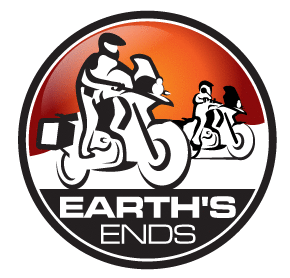 Earths-Ends
Earths-Ends
Recent Comments